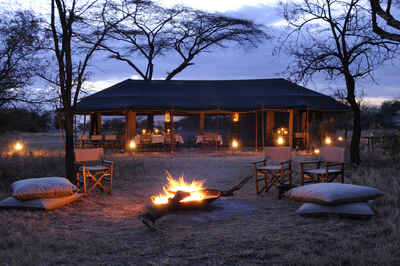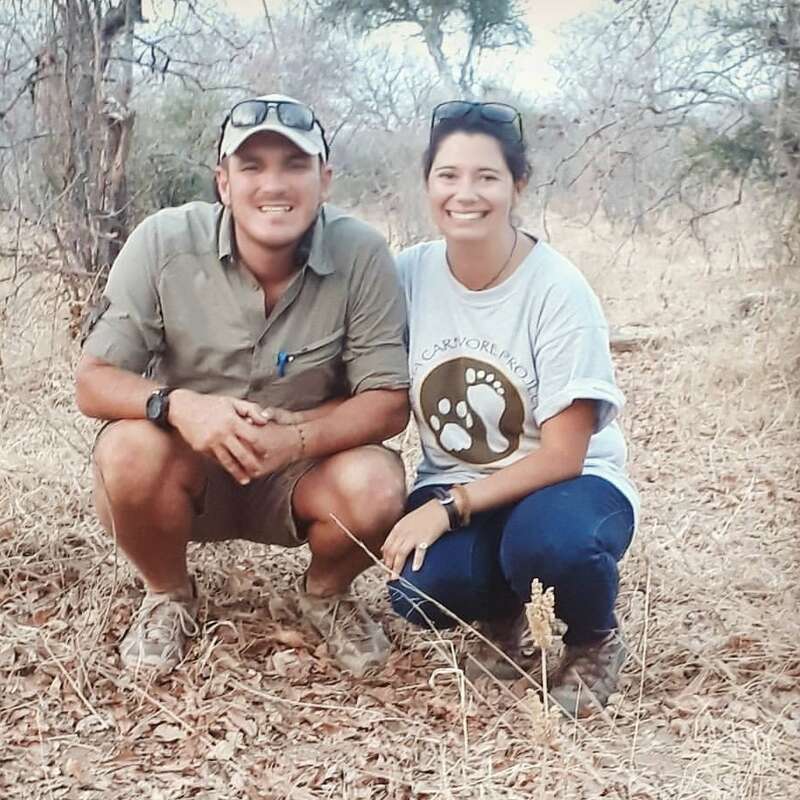About Olakira
Olakira Camp is a semi-permanent tented camp that moves twice a year between two locations within Tanzania’s ...
... Serengeti National Park, roughly matching the densest part of the wildebeest migration at that time. The camp is usually known as either Olakira Mara or Olakira Ndutu, depending on its current location.
Olakira is a comfortable, stylish and personal little camp. Its semi-permanent nature means that you really feel a part of the surrounding bush, without having to sacrifice comforts such as hot showers and flush toilets.
Accommodation
10 tents
Children
Best for 12+
Open
1st June to 1 Nov; 1 Dec to 31 Mar.
Activities

4WD Safari

Birdwatching

Hot air ballooning

Private activities
Traveller reviews of Olakira
73 real, un-edited reviews from Expert Africa's travellers.
Arrived 1 Mar 2024, 4 nights
"Olakira review"
Overall rating: Good
Arrived 24 Jan 2024, 3 nights
"Olakira review"
Overall rating: Excellent
Arrived 11 Sep 2023, 4 nights
"the wildebeest migration!"
Overall rating: Excellent
Arrived 2 Sep 2023, 4 nights
"Olakira review"
Overall rating: Excellent
Arrived 30 Aug 2023, 4 nights
"Olakira review"
Overall rating: Excellent
Arrived 27 Jul 2023, 4 nights
"Olakira review"
Overall rating: Excellent
Arrived 13 Jul 2023, 3 nights
"Olakira review"
Overall rating: Excellent
Arrived 5 Oct 2022, 3 nights
"Olakira review"
Overall rating: Good
Arrived 12 Sep 2022, 4 nights
"Olakira review"
Overall rating: Excellent
Arrived 9 Sep 2022, 3 nights
"Olakira review"
Overall rating: Excellent
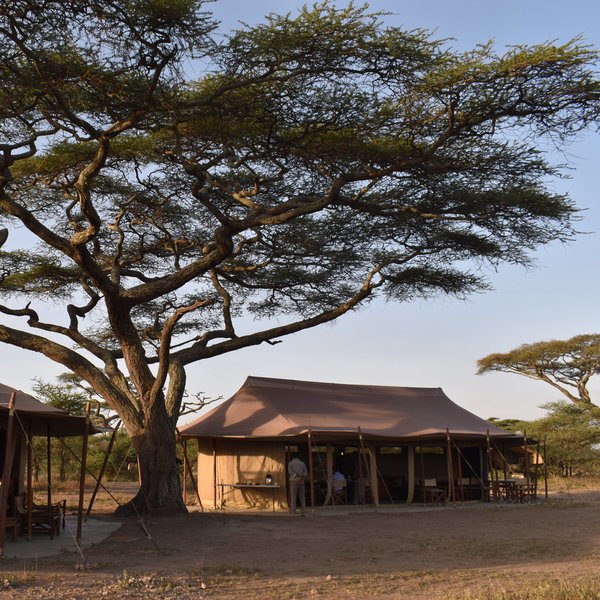
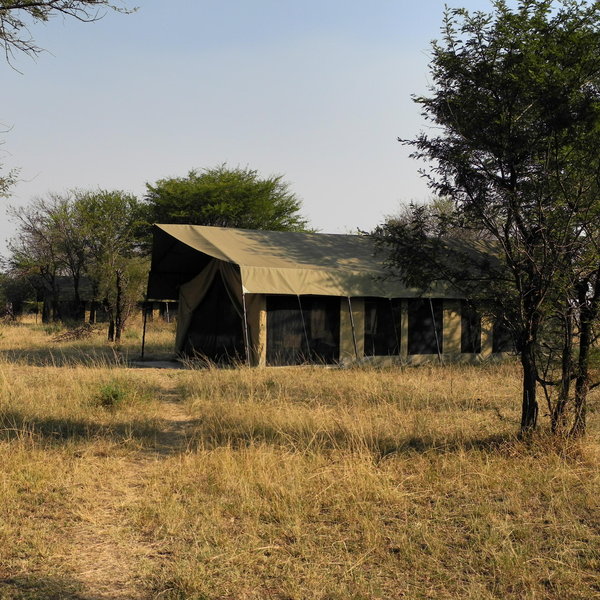
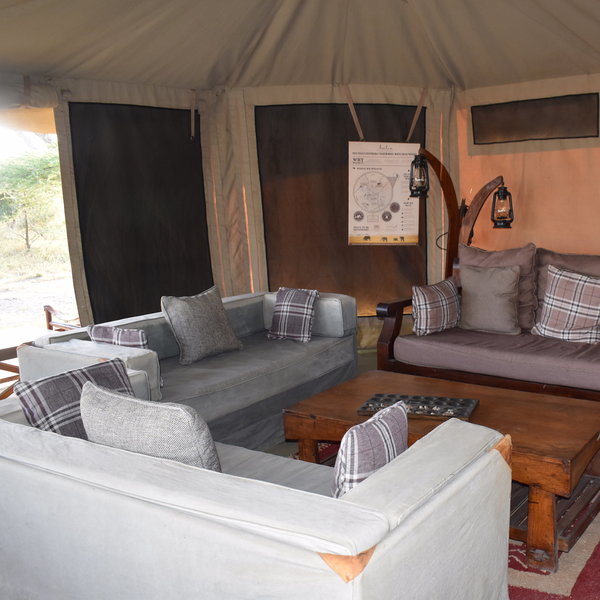
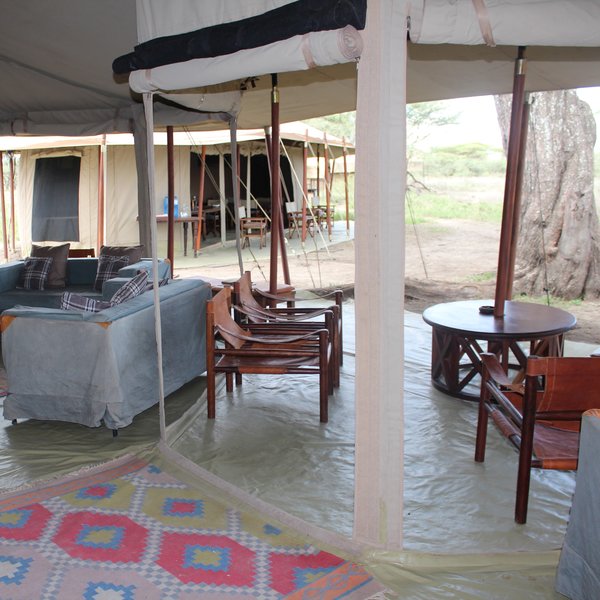
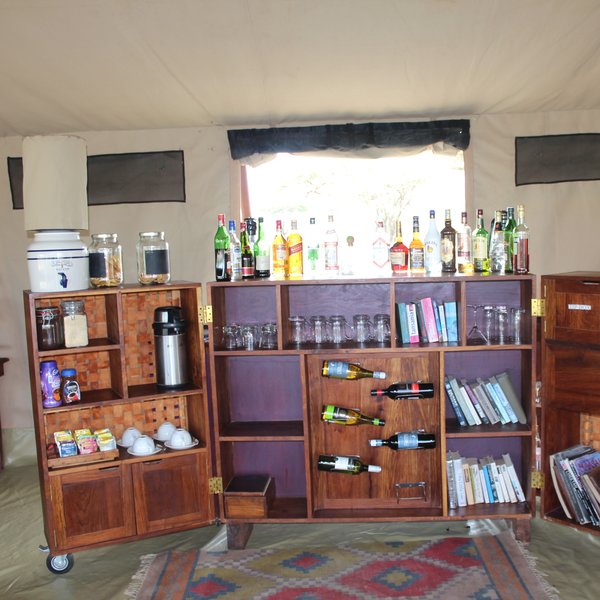
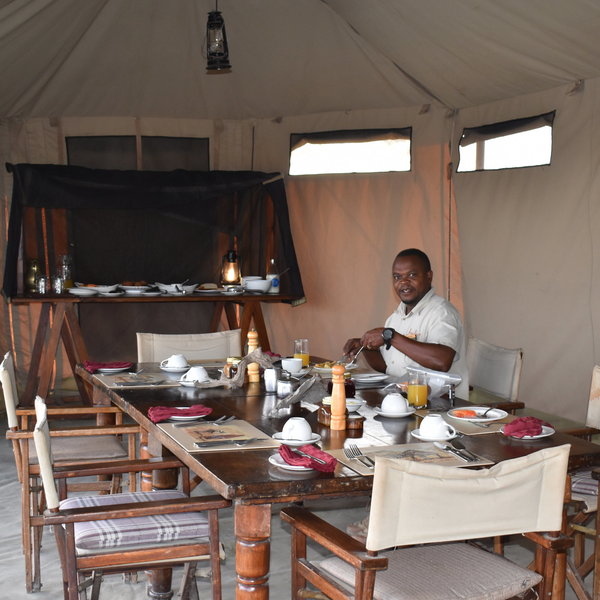
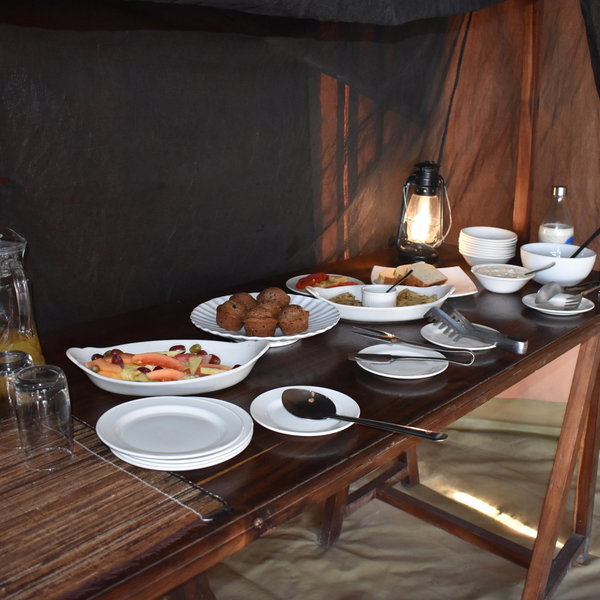
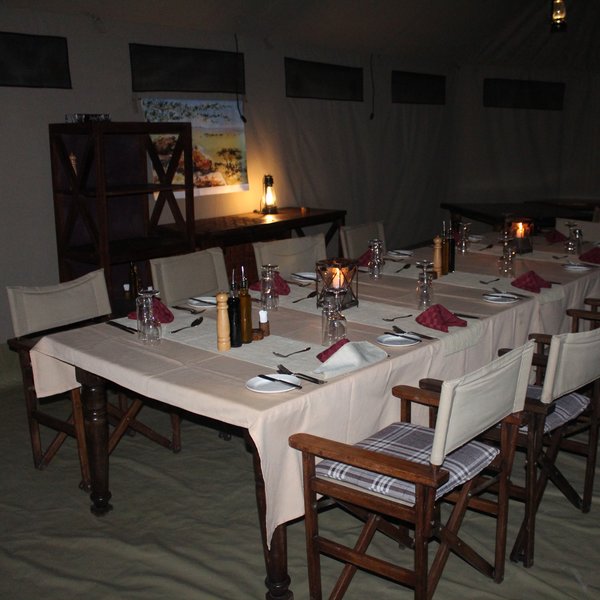
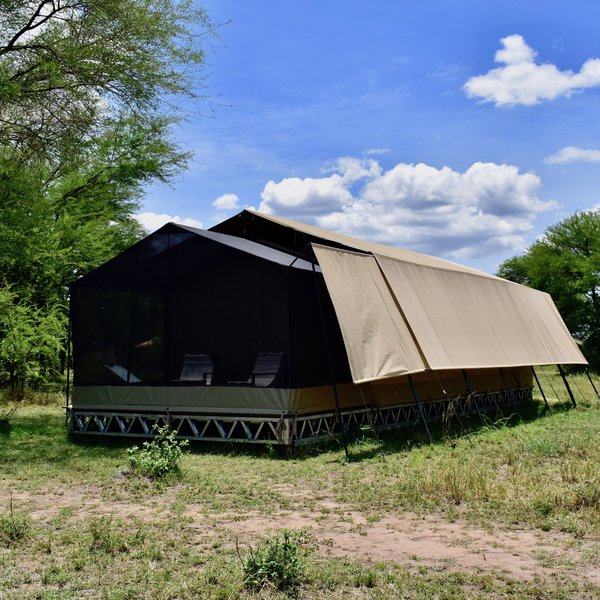
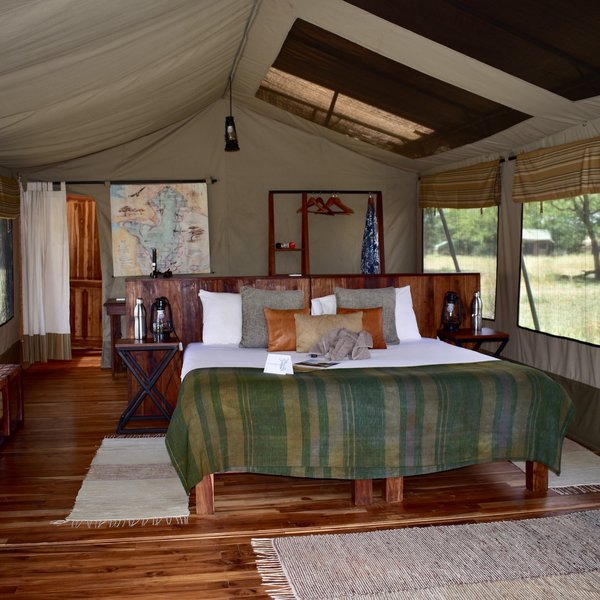
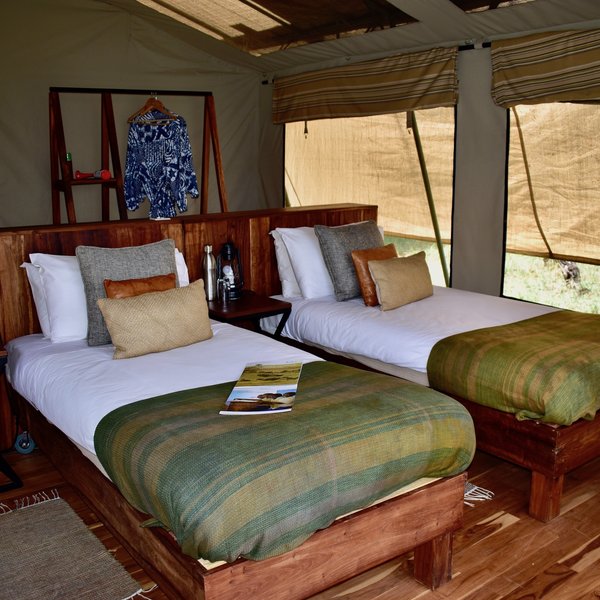
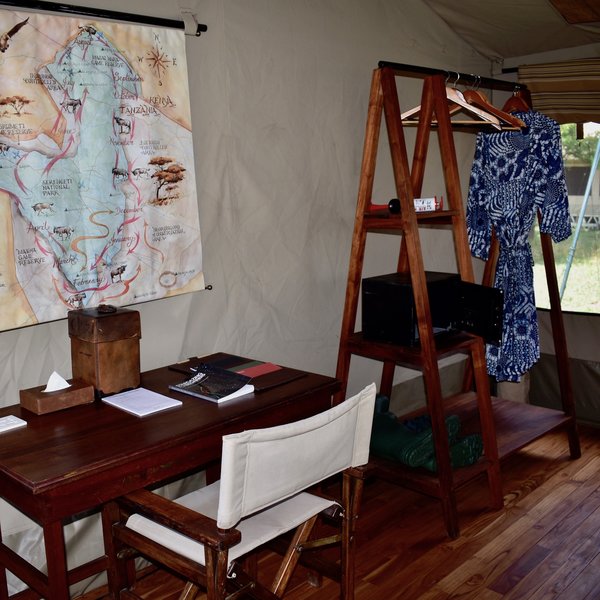
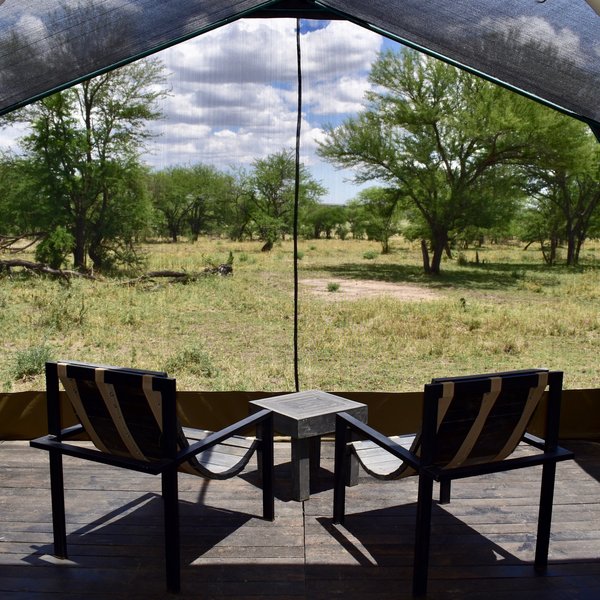
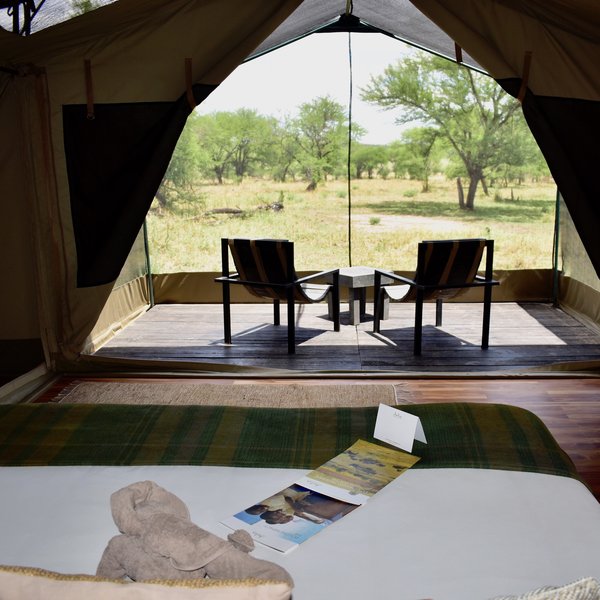
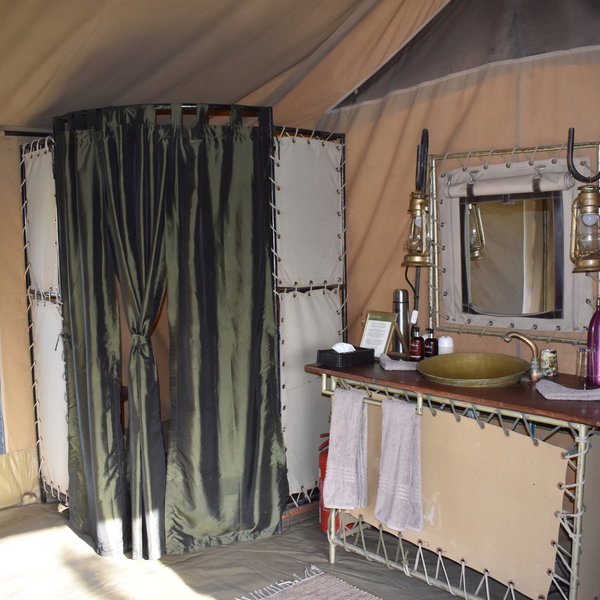
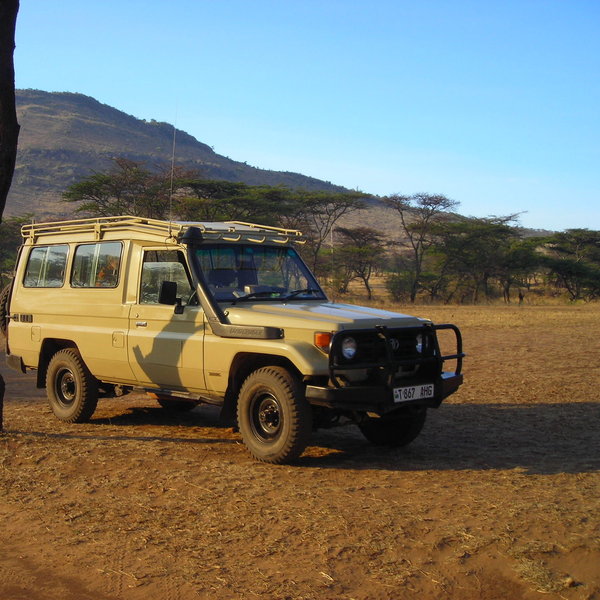
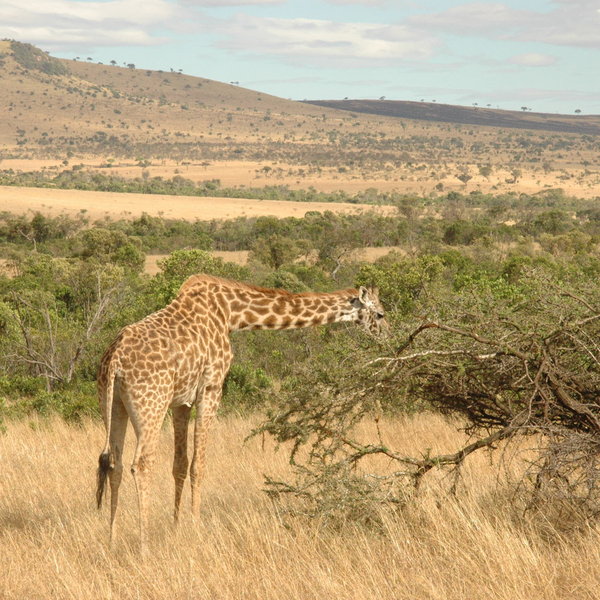
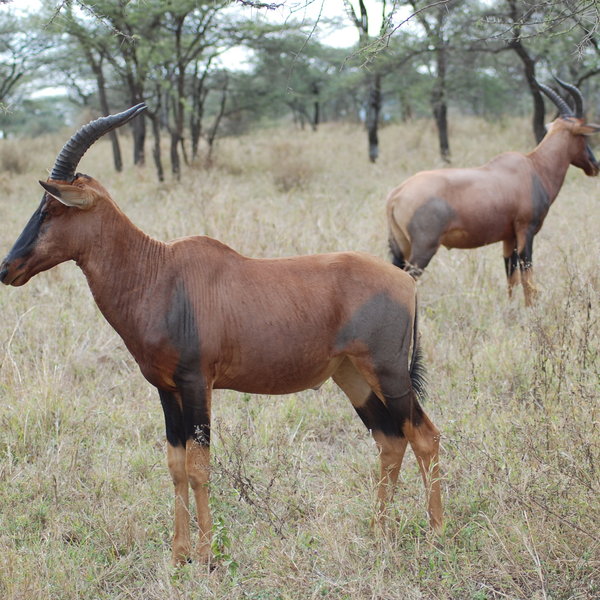
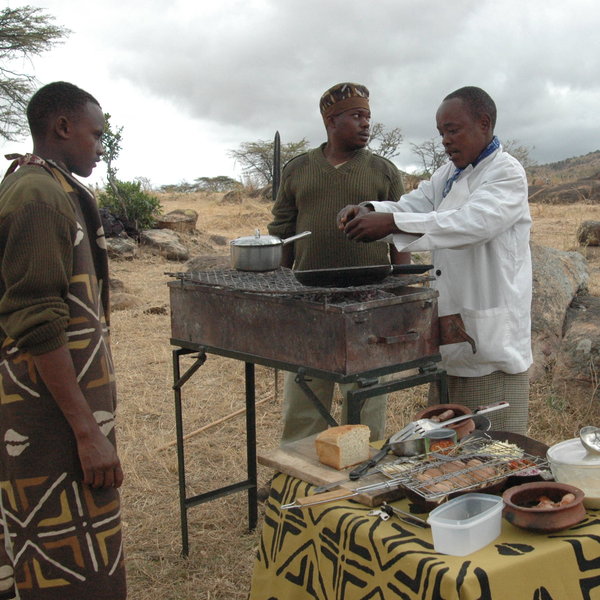
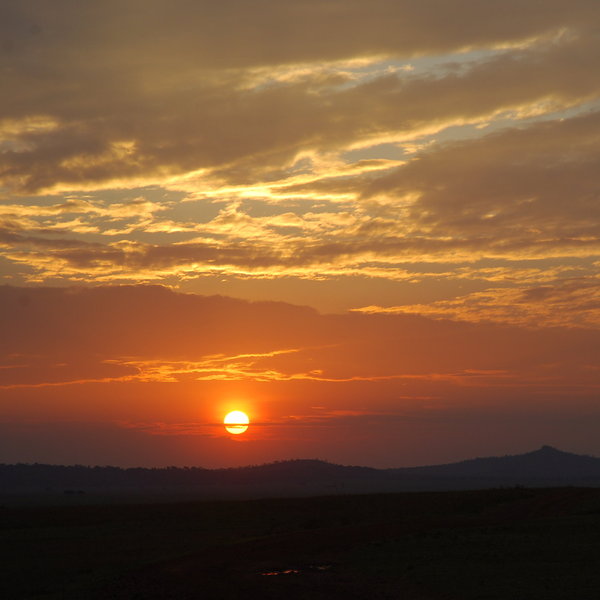
Expert Africa's gallery
When we travel we take lots of photos ourselves to give you a real and un-edited view of the safaris. See our 58 pictures and 1 videos of Olakira Camp to get the candid view.
View gallerySafaris visiting Olakira Camp
Just ideas, we'll always tailor-make a trip for you
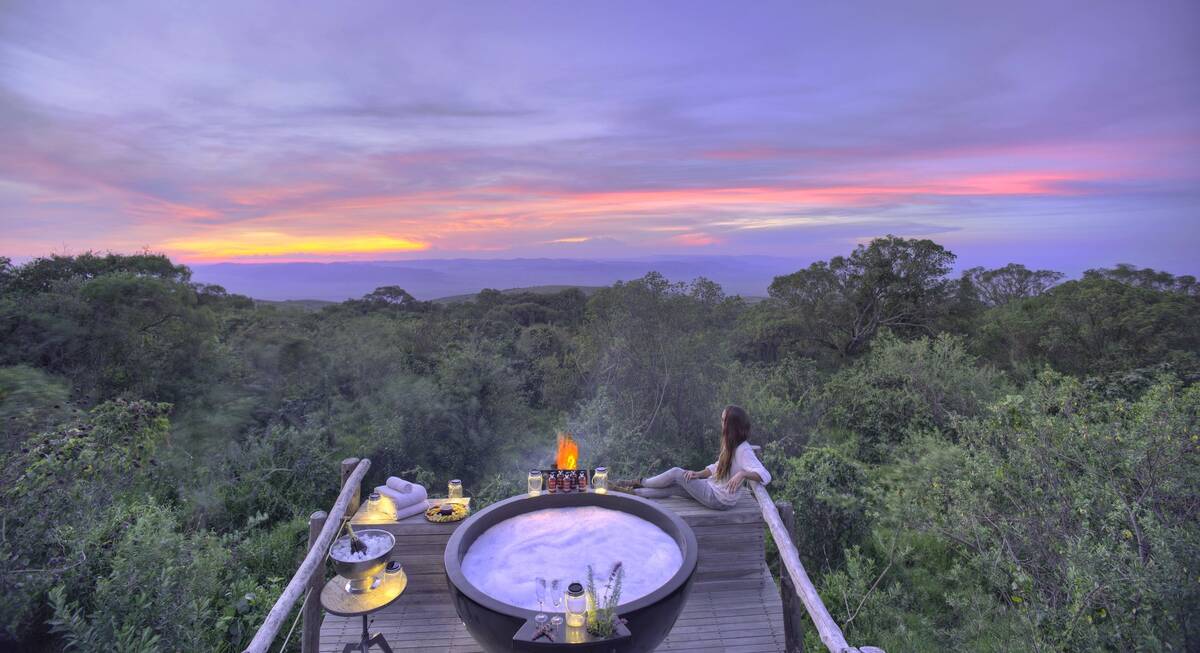
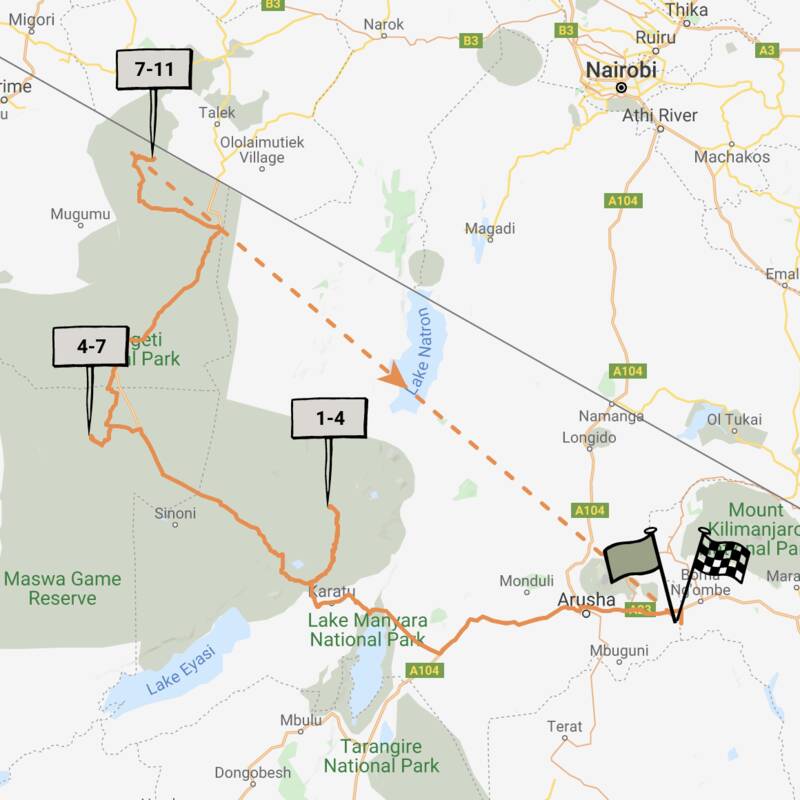
Flufftail Guided Safari
10 days • 3 locations • 1 country
KILIMANJARO AIRPORT TO KILIMANJARO AIRPORT
Stay in three unique camps as you safari across the Ngorongoro Crater and the iconic Serengeti Plains with your private guide and 4WD vehicle: a trip of comfort and autonomy, with excellent wildlife.
Visiting Serengeti, Ngorongoro Crater
US$12,990 - US$18,900 per person
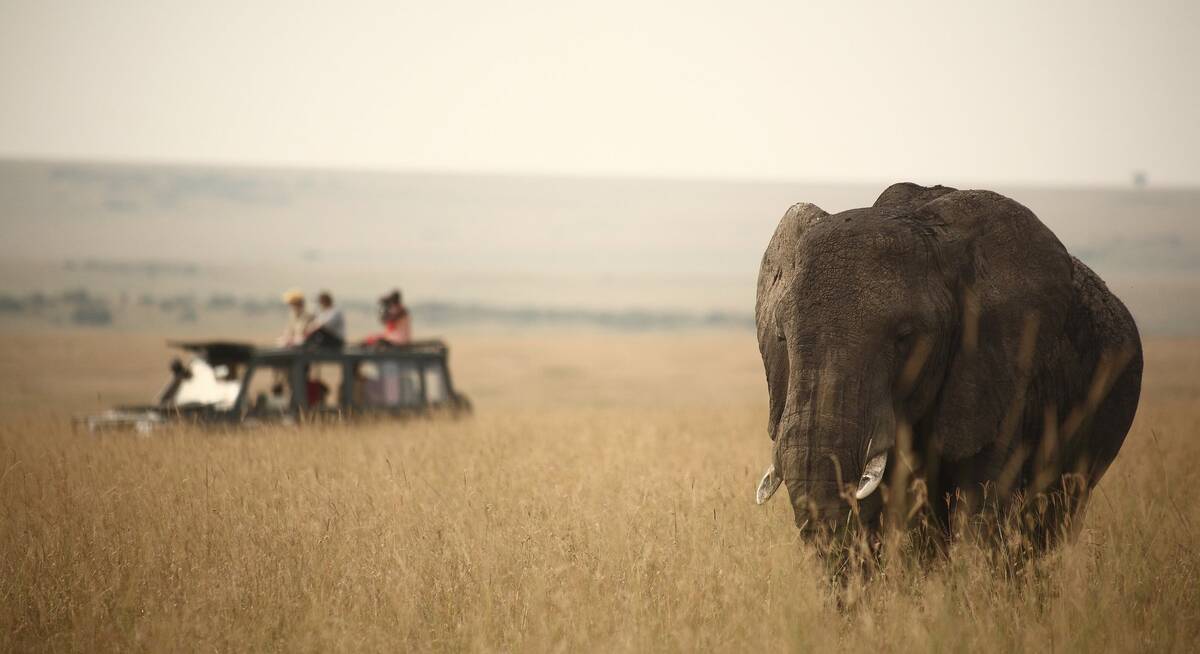
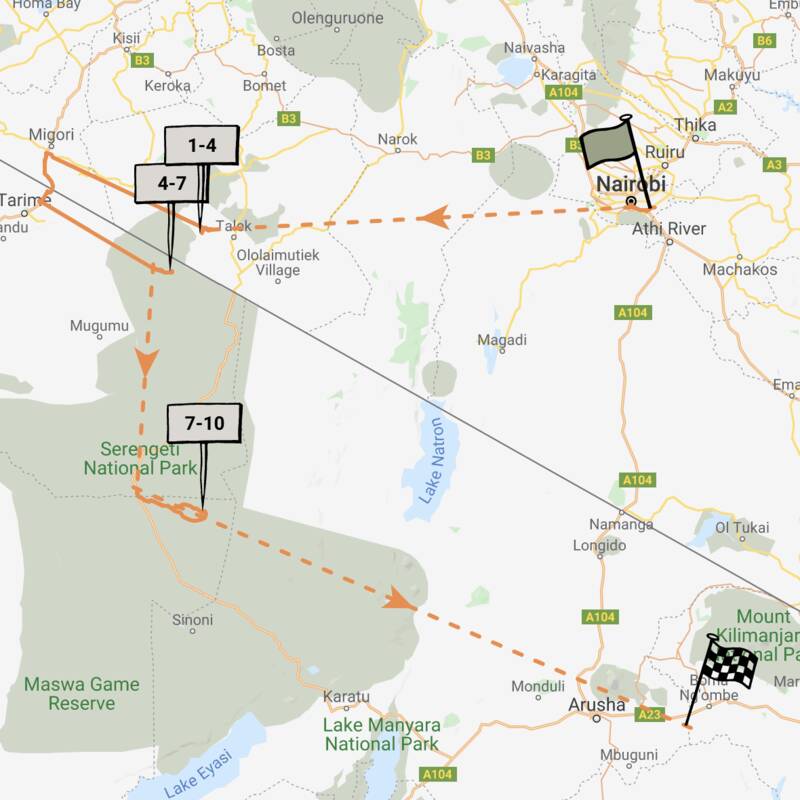
Martial Eagle Fly-in Safari
9 days • 3 locations • 2 country
NAIROBI AIRPORT TO KILIMANJARO AIRPORT
This stylish fly-in safari visits two of Africa’s most iconic parks, the Maasai Mara National Reserve in Kenya and Tanzania's Serengeti National Park.
Visiting Serengeti, Maasai Mara
US$12,720 - US$17,740 per person
Olakira: Our full report
Olakira Camp is a semi-permanent tented camp that moves twice a year between two locations within Tanzania’s ...
... Serengeti National Park, roughly matching the densest part of the wildebeest migration at that time. The camp is usually known as either Olakira Mara or Olakira Ndutu, depending on its current location.
Between June and November, Olakira Camp is located on the Mara River in the far north of the Serengeti, near the makutano wildebeest crossing point ('makutano' means 'crossing' in Swahili), where the Bologanja stream enters the Mara. This is a great base to witness the migration roughly from August to the end of October, but it's also worth staying here either side of these months for the resident game in the area. Along with plenty of lions, relaxed leopards, regularly sighted cheetahs and a very healthy population of plains grazers, we have seen black rhinos in this area, and hippos often graze around the tents.
From beginning of December to the end of March, Olakira relocates from the Mara River to the Ndutu area in the far south of the Serengeti ecosytem, which is the best area for witnessing the migration when it is spread out across the southern plains. Please study our moving map of the migration to see where the animals are at different times of the year – though do note that there can be considerable variation year on year and at any one time. For example on our last visit in June 2023, the herds were largely in the west, making their way towards the Mara River.
Olakira itself is a comfortable tented camp, the sister camp of four others in the migration area: Ubuntu, Dunia and Sayari. Its 10 safari tents are spacious, cool and quite stylish, yet also practical, if pitched relatively close together. Thanks to a recent refurbishment, the tents are now raised up on wooden decks. At night this decked area is covered with a mosquito net, and the bed can be wheeled into the space, to allow guests to sleep out under the stars. Quite a special experience!
Inside, neutral colours and tones of charcoal grey accents give a rustic, understated style. The groundsheet floors are scattered with small rugs, and comfortable double, twin or triple beds have dark grey blankets. Bedside lamps (with 24hr power from solar panels), a writing desk, a day bed, and a seating area with a pair of leather-latticed chairs complete the picture. For families, one of the tents can sleep up to six, while in the north, honeymoon couples are generally given tent numbers 4 and 8 for the privacy and the views.
Against the partition leading into the ensuite bathroom, an open sided shelves and hanging cupboard is provided for personal belongings, as well as bathrobes made from beautiful local fabrics.
Large insect-proof windows with canvas flaps can be left open to catch the breeze, or closed for privacy. When we were last at Olakira, we left one of the canvas flaps up and were lucky enough to see a hippo grazing next to our tent in the middle of the night.
A curtain separates the bedroom from the en-suite bathroom, where you will find twin brass basin set into a wooden plinth, a selection of toiletries. More curtains enclose a flushing toilet and separate plumbed shower, with plentiful hot water. There is cold running water (mineral water is provided for drinking and brushing teeth) and a Thermos of hot water which is replenished regularly. Washing powder is provided for ladies to wash their underwear.
In Olakira's lounge tent was recently given a soft refurbishment, now with natural browns and earthly greens, creams to create a rustic yet stylish effect. At night, this is enhanced by atmospheric brass ceiling lampshades. Either side of a large drinks cabinet, two comfortable seating areas feature large sofas gathered around brass drum coffee tables, and additional low set, string woven chairs and benches at the front of the tent. The staff will serve you drinks from the well-stocked bar, but guests may help themselves to coffee and tea at any time.
The dining tent, usually known as 'the mess', has canvas directors' chairs set around square wooden tables, although communal dining at one long table is the norm. In the evenings, guests tend to gather around a fireplace in front for a few convivial drinks in the company of other guests and the guides.
Activities from Olakira are all vehicle-based 4x4 game drives. Guests may either explore the Serengeti with their own private driver/guide or use the guides and vehicles based at the camp. Typically you'll make a plan with your guide the evening before, choosing either to head out for a full day with a packed lunch, or to do morning and afternoon game drives, returning to the camp during the heat of the day. Timings are very flexible.
There are opportunities to arrange bush breakfasts and sundowners in camp or the surrounding area. Perfect for honeymooners or anyone celebrating something special.
Activities
4WD Safari
Birdwatching
Hot air ballooning
Private activities
Families & children
- Attitude towards children
- Children are welcome.
- Property’s age restrictions
- A 6-plus age restriction is sometimes applied at the Ndutu site.
- Special activities & services
- The is a special childrens menu, and the camp can arrange earlier meal times for children.
- Equipment
- No special equipment.
- Generally recommended for children
- Olakira is a fun and friendly camp whose team will go out of their way to make families feel welcome. Due to the wild nature of the camp, however, it is best suited to children over the age of 12.
- Notes
- Parents should be aware that children should not be allowed to wander around unescorted, and are their responsibility at all times.
Food & drink
- Usual board basis
- Full Board & Activities
- Food quality
- The food at Olakira Camp is of a good standard and is fresh and very tasty. When we last stayed, in June 2023, they were serving a variety of international dishes based on fresh ingredients.
Timings for breakfast or brunch were flexible, depending on what we wanted to do in the morning. For breakfast there was a variety of cereals, a cooked breakfast with eggs, plus fruit and yoghurt. Brunch was similar, but with the addition of robust options such as hot open sandwiches and quiches.
For lunch, we were served individual chicken pies, with a selection of salads, dressings and bread which was most enjoyable.
At around 7.00pm, guests start to gather around the campfire for a drink. The chef then announces dinner. This consisted of three set courses. When we last stayed we were served green banana soup and chapatti to start, deliciously season chicken curry, with an assortment of homemade salas and chutneys, followed by a creamy, rich chocolate mousse. - Dining style
- Group Meals
- Dining locations
- Indoor and Outdoor Dining
- Further dining info, including room service
- Tea and coffee is brought to the tents.
- Drinks included
- Most drinks are included. Champagne and certain imported wines and spirits are extra.
Our travellers’ wildlife sightings from Olakira Camp
Since mid-2018, many of our travellers who stayed at Olakira have kindly recorded their wildlife sightings and shared them with us. The results are below. Click an animal to see more, and here to see more on our methodology.

100% success

100% success

100% success

96% success

96% success

92% success

92% success

88% success

87% success

81% success

71% success

40% success

32% success

29% success

20% success

10% success

7% success

0% success
Getting there
- Location
- Serengeti Migration Area, Tanzania
- Ideal length of stay
- Spend at least 3 or 4 nights here to explore the area properly – or longer if you have the time.
- Directions
- When the camp is in the south most guests will drive to Olakira with their vehicle and guide, and then drive away again when they move on. When it is in the more remote north you may choose to fly in; the camp is about 30 minutes from the airstrip.
- Accessible by
- Fly-and-Transfer
Special interests
- Solo safaris
- Olakira Camp can be an inspired choice for solo travel in Tanzania. You'll share your safaris with other guests, and a top safari guide, and everyone dines communally so it's very friendly.
- See ideas for Solo safaris in Tanzania
- Wildlife safaris
- Olakira Camp is a semi-permanent tented camp that moves twice a year, in order to optimise its location for the Serengeti’s wildebeest migration. With careful planning (talk to us about this), it can be the perfect base from which to witness one of nature's greatest spectacles.
- See ideas for Wildlife safaris in Tanzania
- Luxury safaris
- Olakira has undergone a recent refurbishment, and the tents now have a luxurious star gazing deck, allowing guests to wheel the bed out to the front of the tent and sleep out under the stars. Quite a special experience!
- See ideas for Luxury safaris in Tanzania
Sustainability
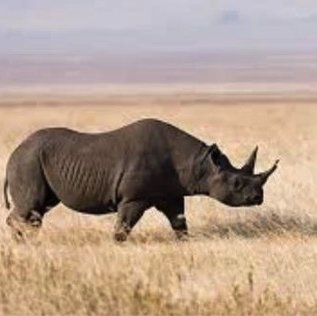
Olakira’s black rhino repatriation project
As a semi-permanent tented camp moving twice a year to follow migration, Olakira Camp is commitment to ‘leave nothing behind but footprints’. Run exclusively by Tanzanian staff, what sets Olakira Camp apart is its dedication for preserving biodiversity. It not only offers green safari experiences, but also guides local communities to bring a positive contribution towards protecting the environment.
The camp supports the well-known Serengeti Lion Project, run by the University of Minnesota, by providing funding and support for the researchers. Moreover, with an all-time low of 2,300 individuals in the wild and less than 100 in Tanzania, Olakira Camp is deeply involved in the Rhino Repatriation Program in order to ensure the survival of the black rhino in Serengeti and stimulate population growth. To this extent, Frankfurt Zoological Society trained all of the camp’s guides and drivers to identify the individual rhinos in the northern Serengeti and participate in ongoing research by reporting and recording all individuals found in this area.
In 2010, the first six rhinos were repatriated. However this was only the beginning, as the final goal of Olakira Camp is to help repatriate 32 black rhinos from South Africa to Serengeti National Park within five years.
See more great sustainability projects in Tanzania
Communications
- Power supply notes
- Power is available 24 hours a day as there is a back-up generator. There are multiple UK-style 3-pin sockets in the lounge tent for charging batteries, as well as one three pin plug and USB charging point in the tents.
- Communications
- The camp has a satellite phone that can be used in emergencies. There is also intermittent cellphone reception around the camp. The tents have two-way radios and there is a computer with online access in the office that guests may use in an emergency. There is WiFi in the main areas with a range of 100m so some tents will have a signal.
- TV & radio
- There is no TV or radio at the camp but there is a TV in the staff camp which guests can watch when major sporting events are taking place.
- Water supply
- Transported in
- Water supply notes
- The main water supply comes by bowser from a nearby borehole. Filtered drinking water is supplied to guests.
Health & safety
- Malarial protection recommended
- Yes
- Medical care
- The senior staff are first-aid trained and there is first-aid equipment for minor injuries. The camp has links to a medical evacuation service, which may be used in a medical emergency.
- Dangerous animals
- High Risk
- Security measures
- There are guards from the local community and armed government guards on duty. Members of the team escort guests around the camp at night.
- Fire safety
- The camp has a firebreak, and each tent has a fire extinguisher, which all staff are trained to use.
Useful info
- Disabled access
- On Request
- Laundry facilities
- Laundry is included free of charge. It is hand-washed and line-dried and is returned with 24 hours depending on the weather. However, ladies' underwear cannot be washed: soap powder is provided in bathrooms. Please note that when the area is very dusty, it is not ideal for line-drying clothes.
- Money
- Each tent has a small safe. There are no currency-exchange facilities at Olakira Camp.
- Accepted payment on location
- Olakira Camp can accept cash in US dollars, GBP, Tanzania shillings and euros. Although cash is preferred it is sometimes possible to pay with Visa and Mastercard, with a 4% surcharge, which does not apply on small item purchases and camp tips.
Plan and book your trip with Expert Africa
All of our trips are tailor-made, so we'll always adapt them to suit you. Talk to an Expert and let us plan and arrange your perfect trip.

Talk to an Expert
Call or email us now! We’ll match you with the Specialist in our team who is best suited to help you. Then together we can start planning your trip.

Set up your itinerary
Based on our experience and your ideas, your specialist will create a detailed, costed itinerary. We’ll refine it together, until we have a trip that you’re perfectly happy with.

Prepare for your trip
The same Specialist will make the seamless arrangements for your trip, send you detailed travel documents, and be available to answer any questions before you depart.

Travel with peace of mind
After you set off, you’ll be cared for by our partners in Africa, most of whom have worked with Expert Africa for decades. And if you ever need us urgently, we’re available 24/7.

When you return
We love to learn about your trip, and so will always be grateful if you’ve the time to give feedback to your Specialist when you return.
Olakira's location
Look closer at the environment and surroundings of Olakira Camp.
Excursions from Olakira Camp
Optional extra day-trips and excursions possible whilst you're staying at Olakira Camp. Talk to us: these are usually best arranged before you go.
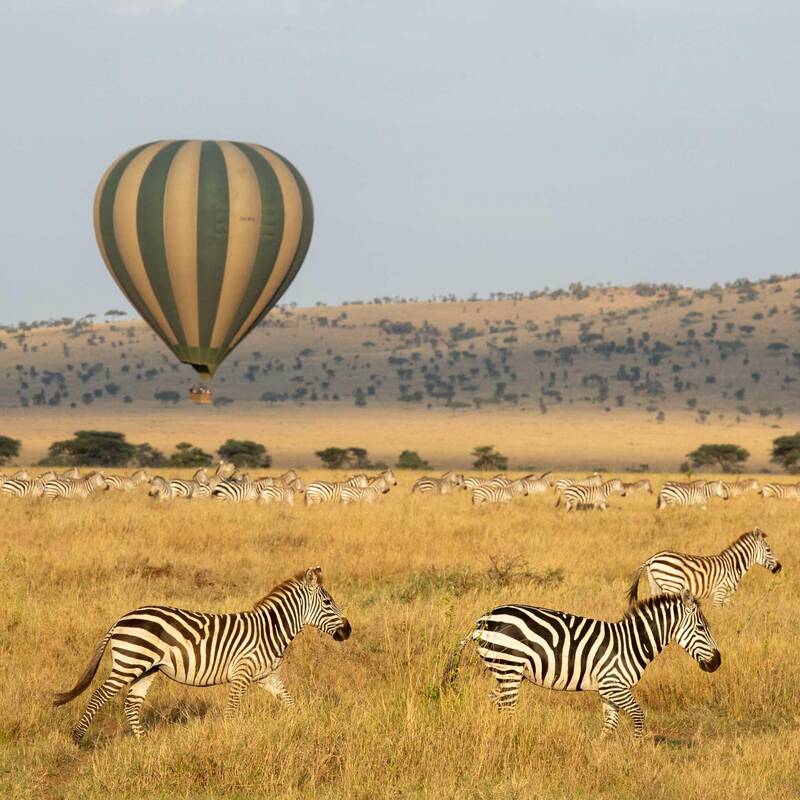
Balloon Safari over the Serengeti
Three hours - approx. one hour flight
As the sun rises over the Serengeti National Park in northern Tanzania, climb aboard for an extraordinary adventure. For an hour you’ll float in a hot air balloon over beautiful savannah and woodland and a diversity of plains wildlife.
More about Balloon SafariOther lodges in Serengeti Migration Area
Alternative places to stay in this same area.
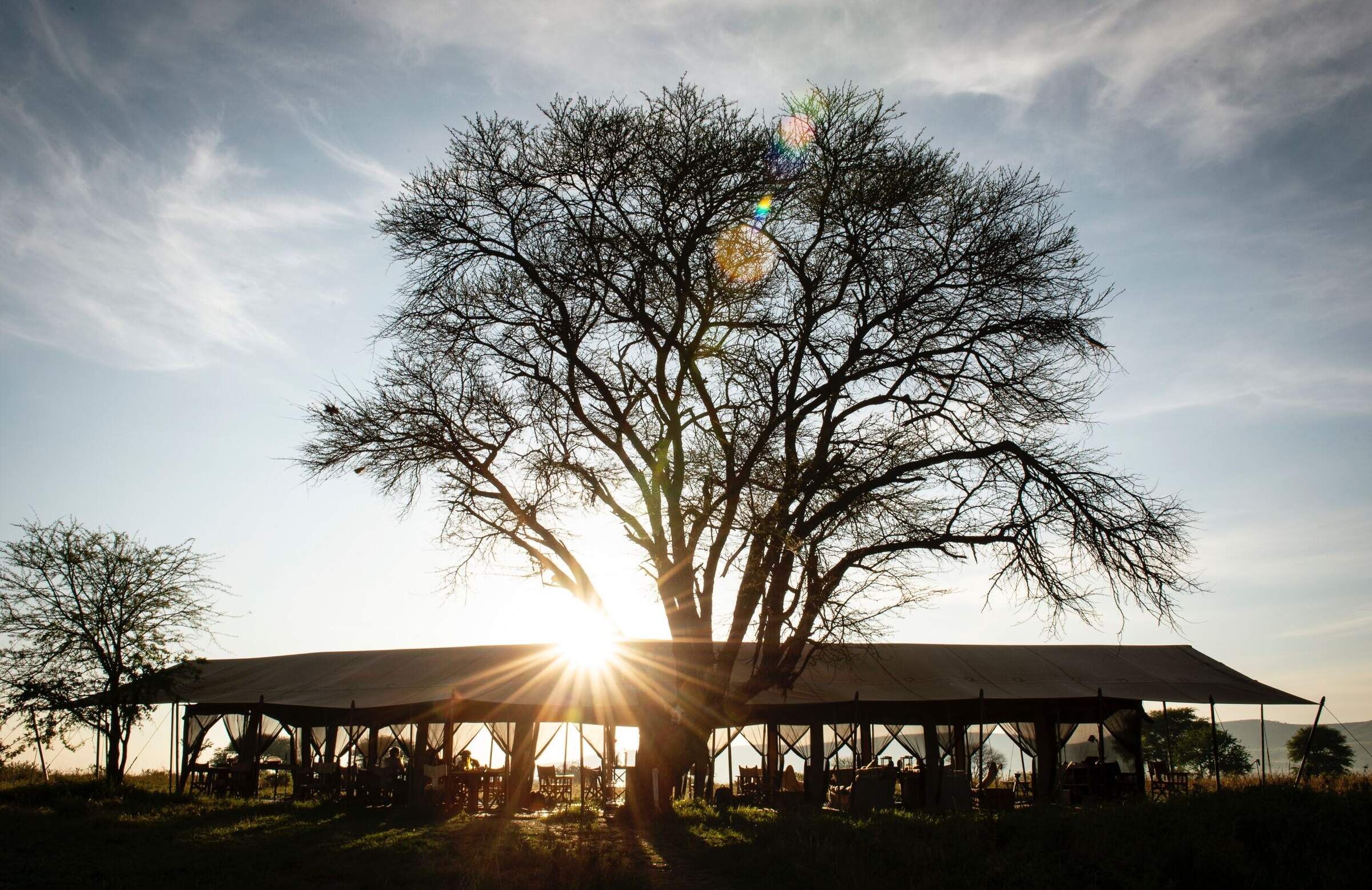
Nomad Serengeti Camp
Serengeti Safari Camp is a well-appointed tented camp that moves several times a year to follow the predicted path of the migration.
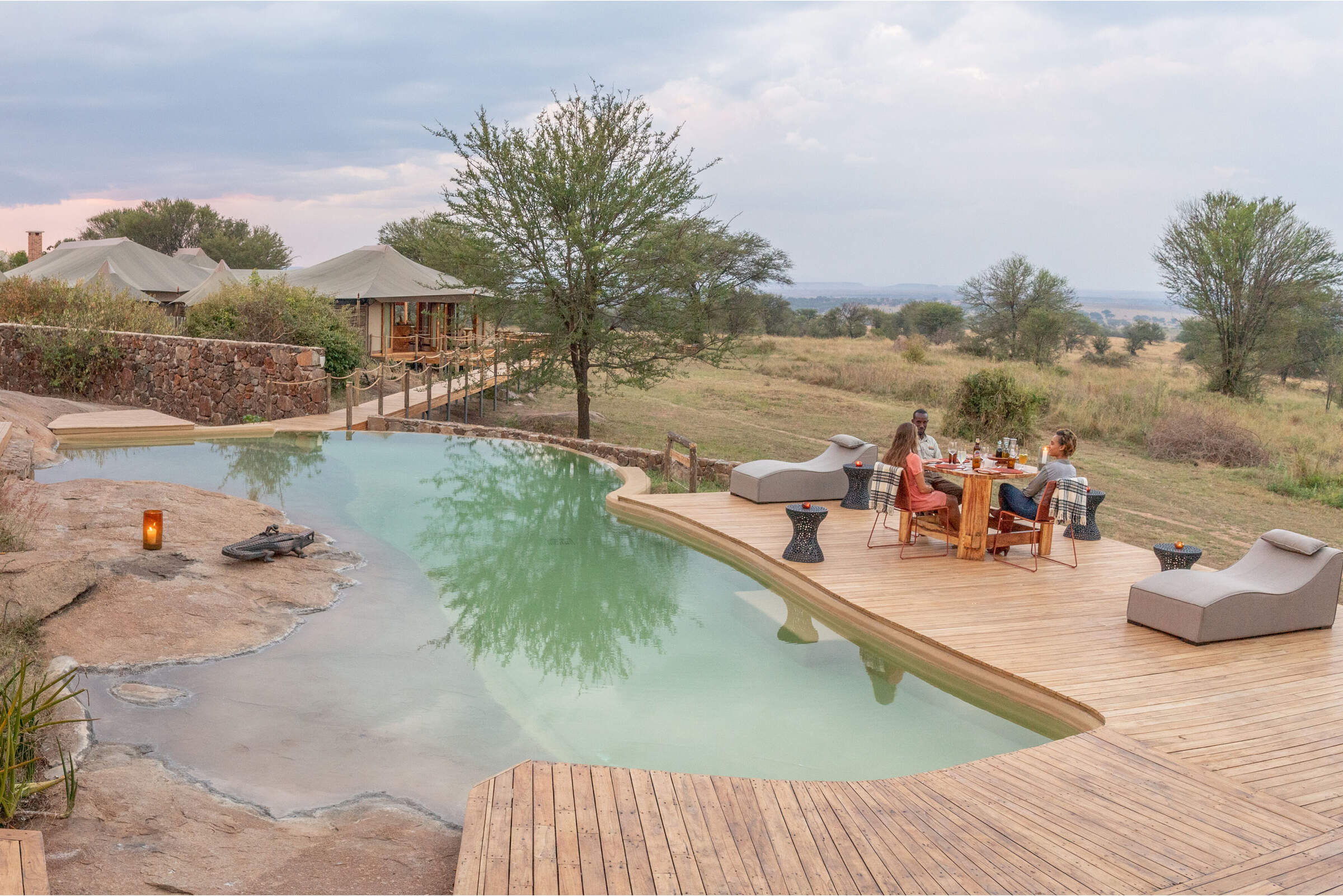
Sayari Camp
In the northern Serengeti, near the Mara River, luxurious Sayari Camp offers excellent wildife all year – boosted further by the wildebeest migration.
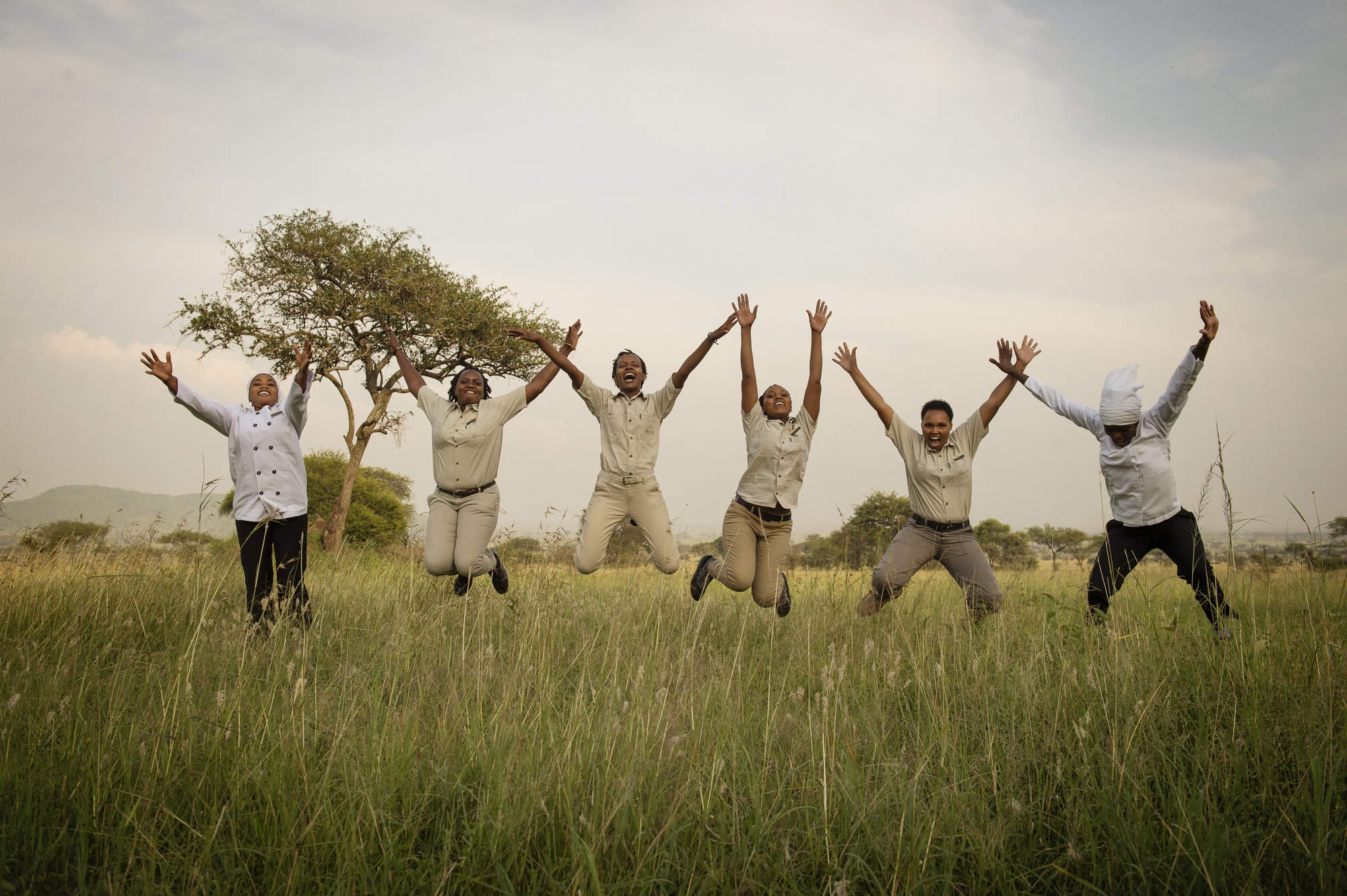
Dunia Camp
Dunia Camp is well located for the migration from December to March, and has excellent game viewing for the rest of the year.
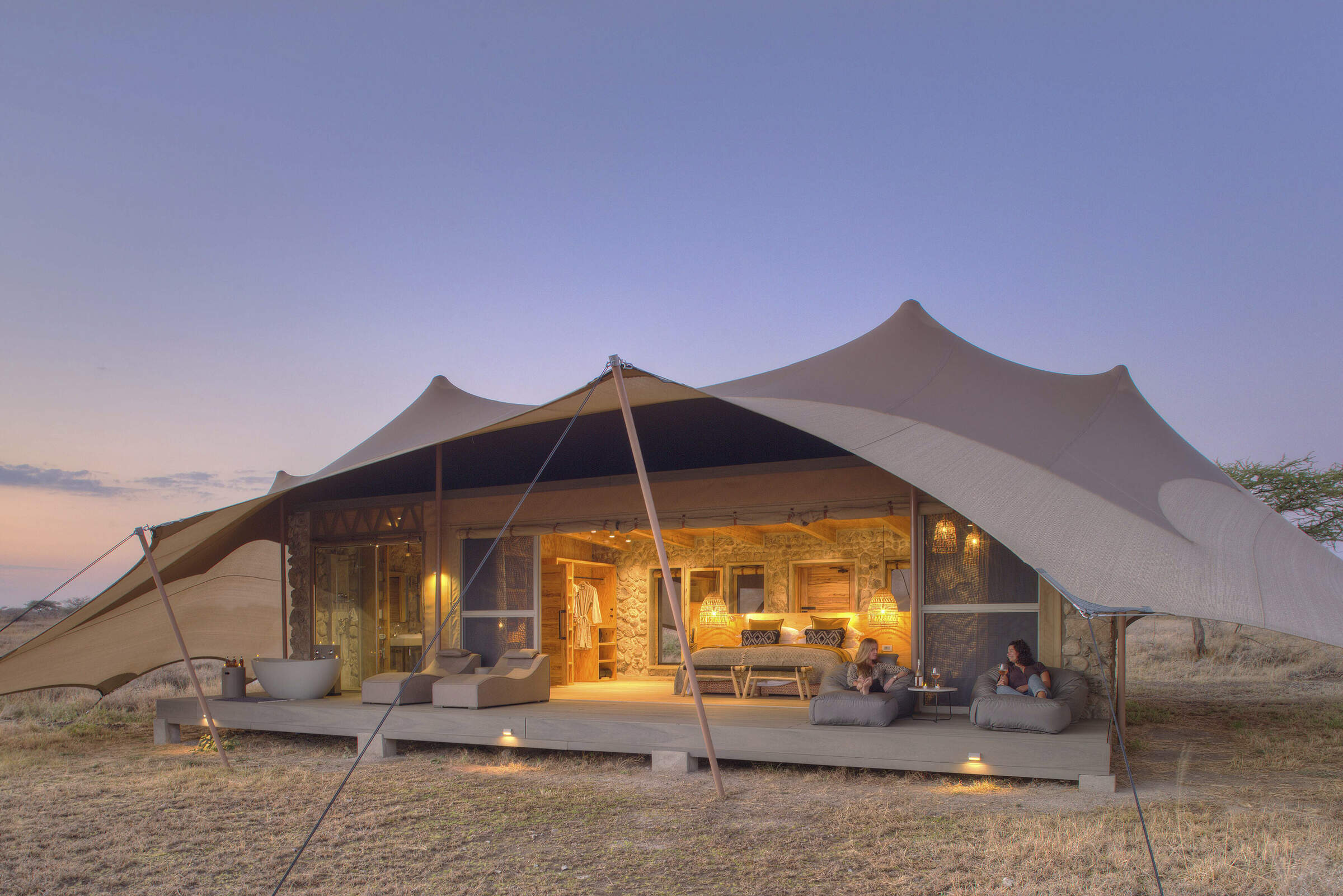
Namiri Plains Camp
Namiri Plains is one of the best camps in the Serengeti and its remoteness ensures a fantastic wildlife experience away from the crowds.
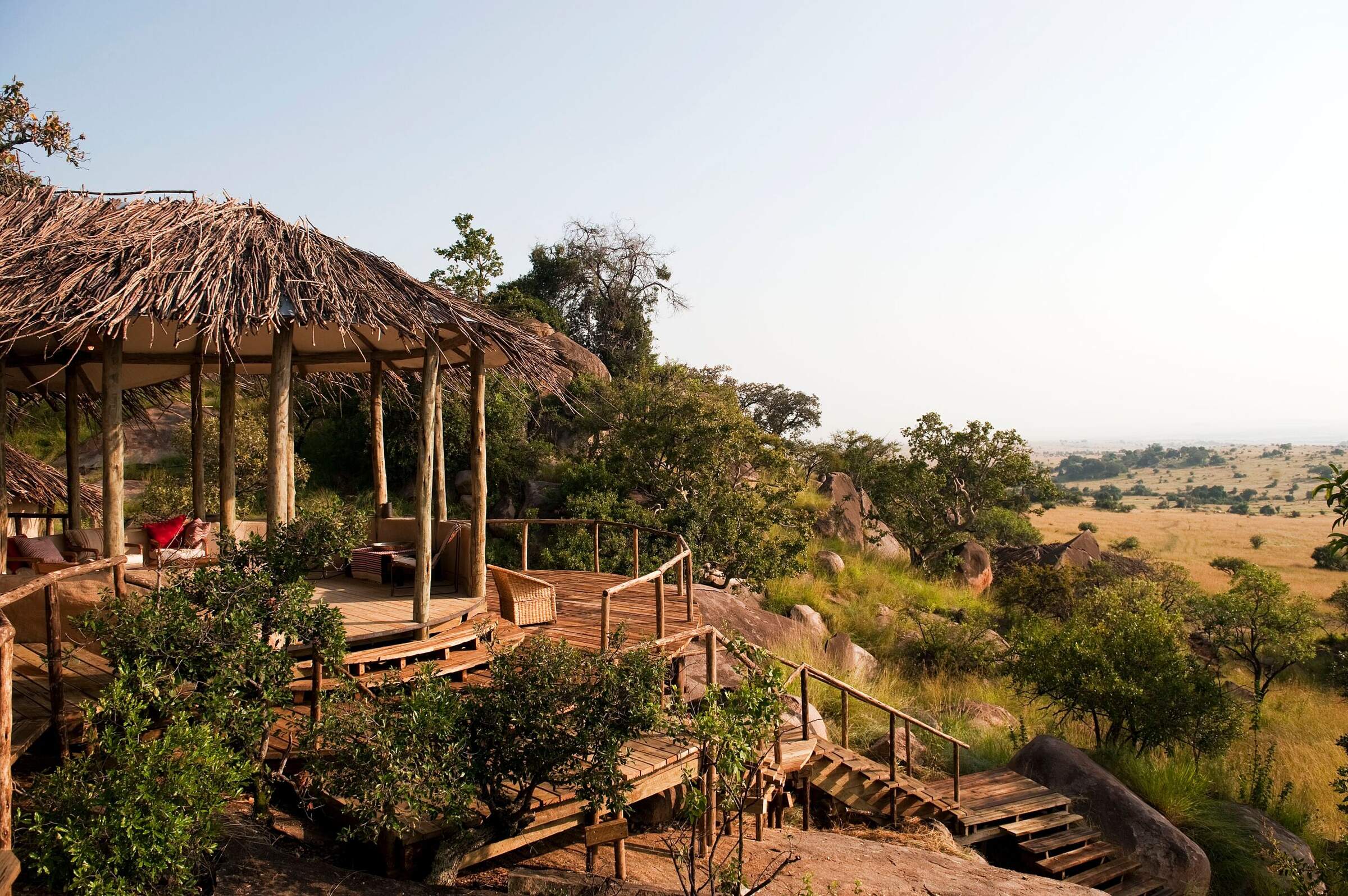
Lamai Serengeti
Set high in the kopjes with fantastic views, Lamai Serengeti offers top service and guiding and good migration sightings from Jul-Oct.
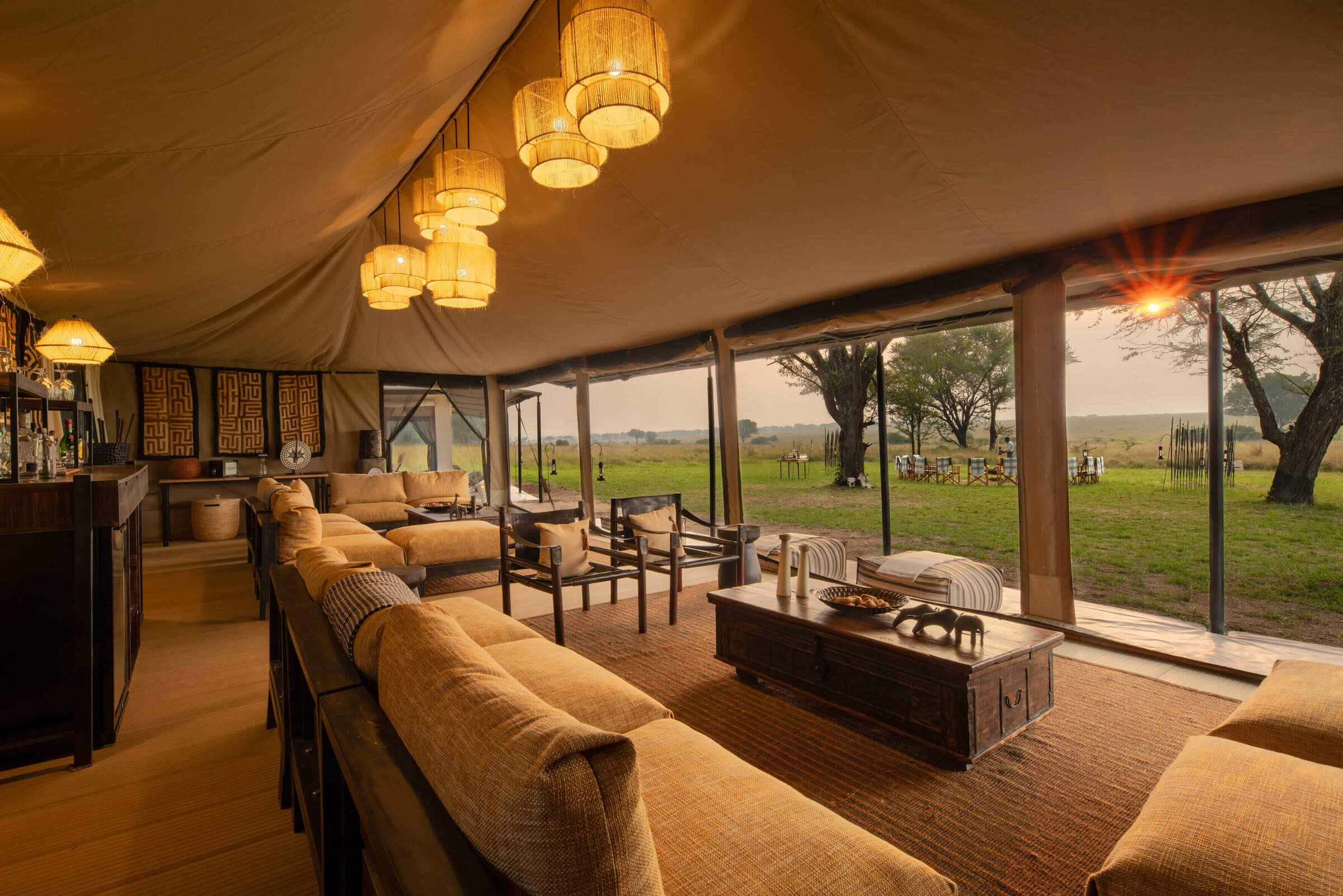
Ubuntu Camp
Ubuntu Camp has several locations in the Serengeti, following the wildebeest migration, so it is often in a great location to see the herds.
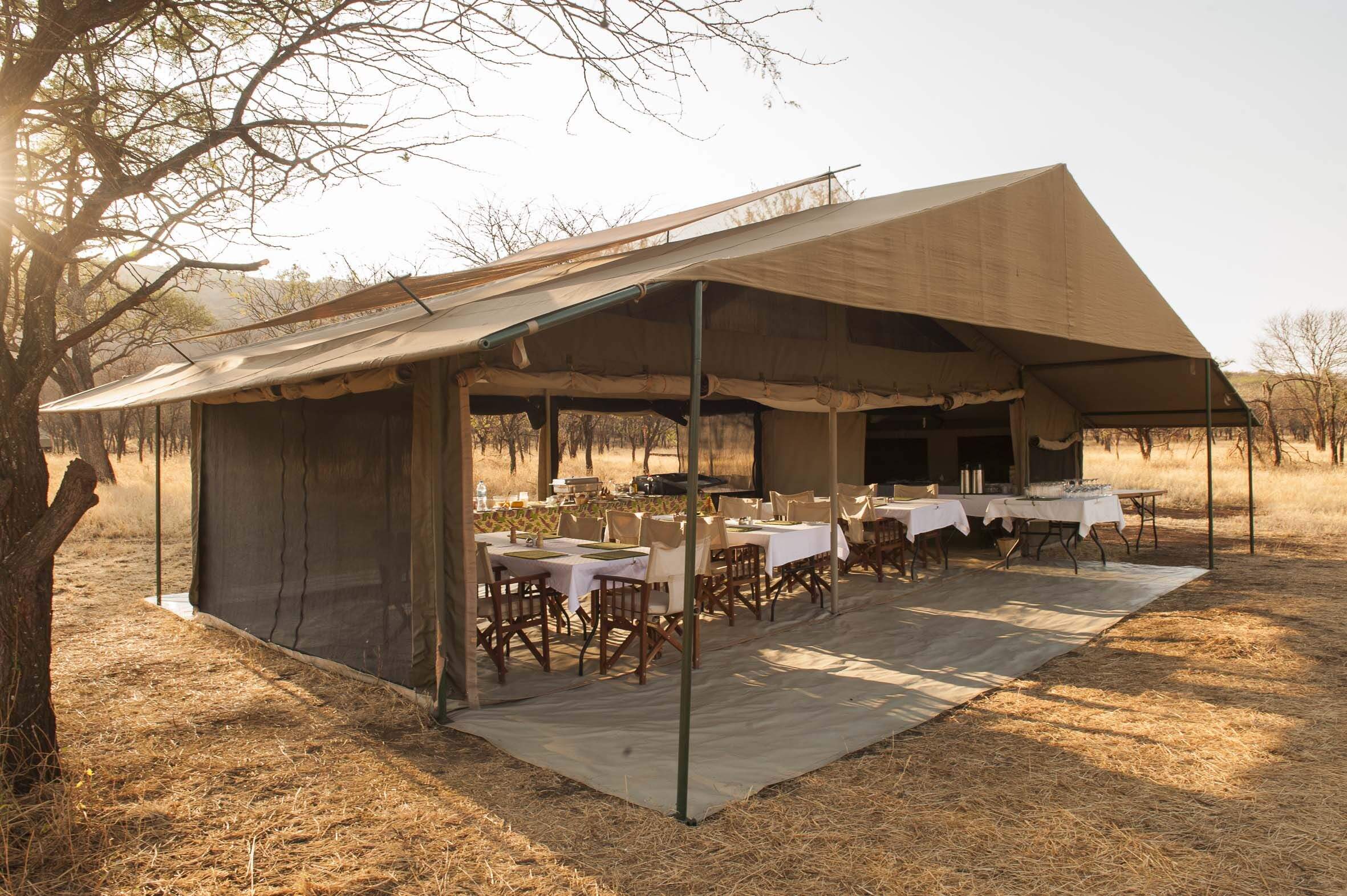
Kati Kati Camp
Kati Kati is a small, very simple bushcamp, which is well-positioned to explore the wildlife-rich Seronera area.
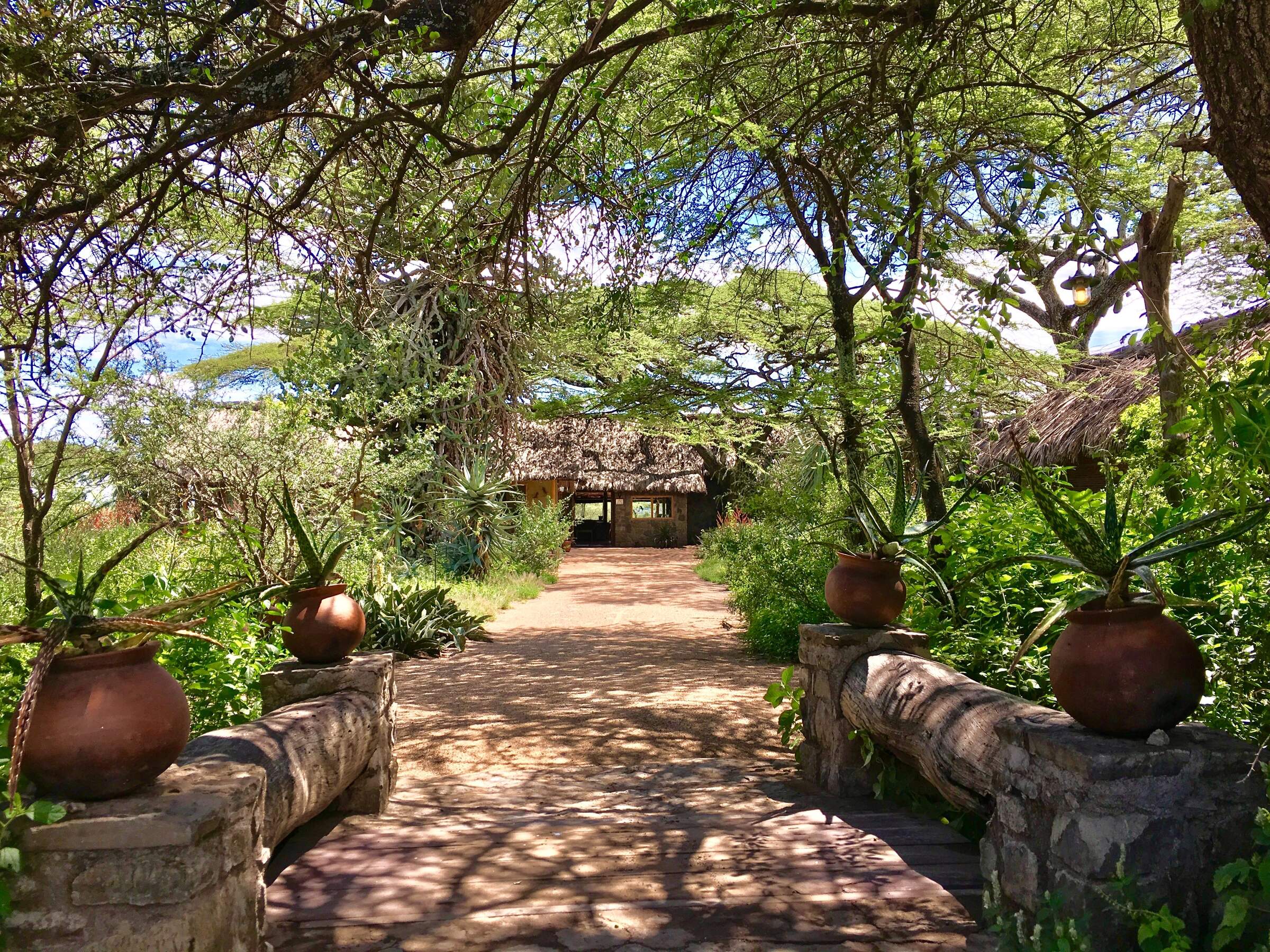
Ndutu Safari Lodge
Large and economical, but not luxurious, Ndutu Safari Lodge is well located in the southern Serengeti, so book early to get space.
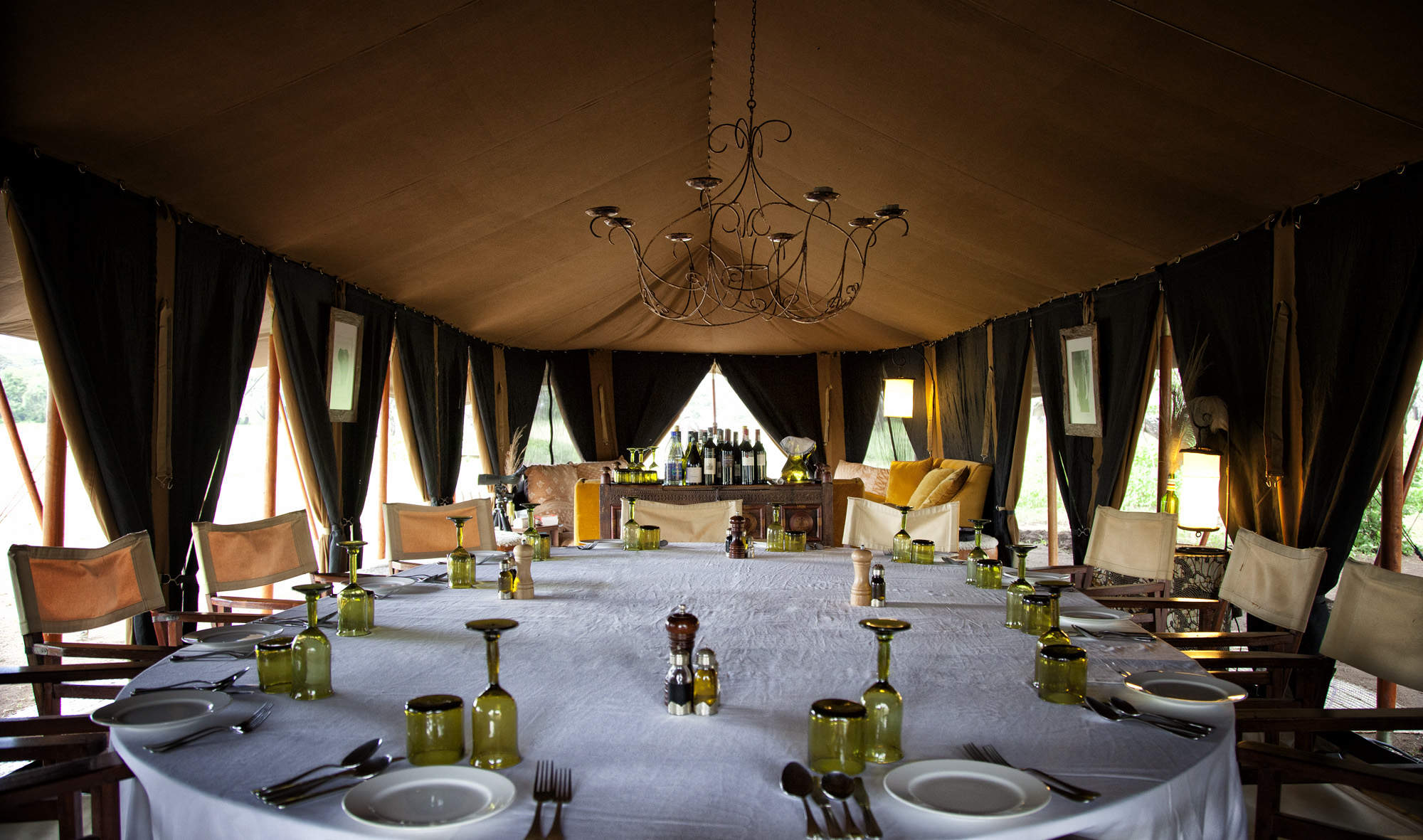
Serian Serengeti
Serian Serengeti is a mobile tented operation run by Alex Walker which moves between two locations following the wildebeest migration.
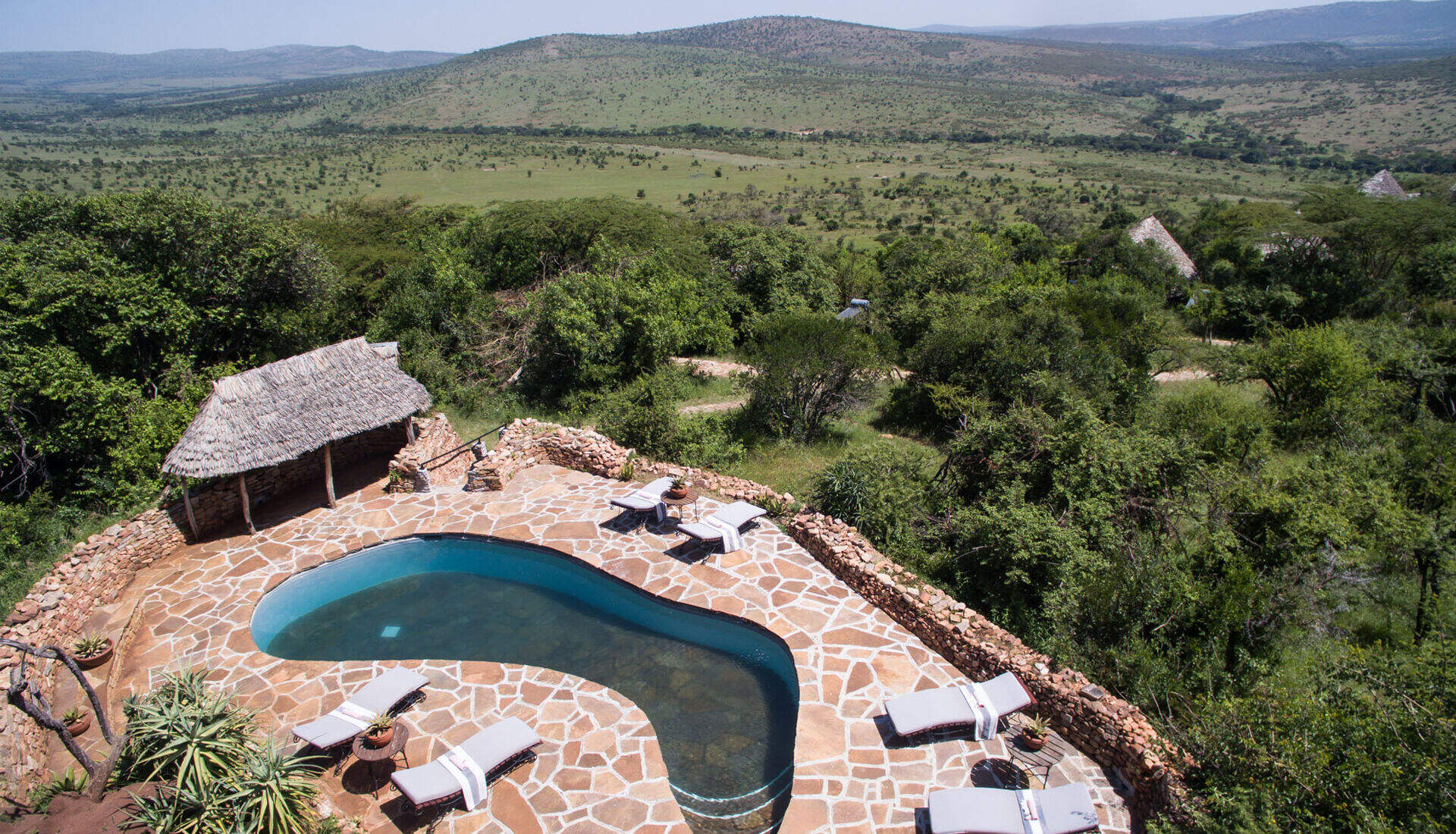
Klein's Camp
Klein's Camp, in a private area of the northern Serengeti, sets high standards. Activities include walks, nights drives and Maasai village visits.
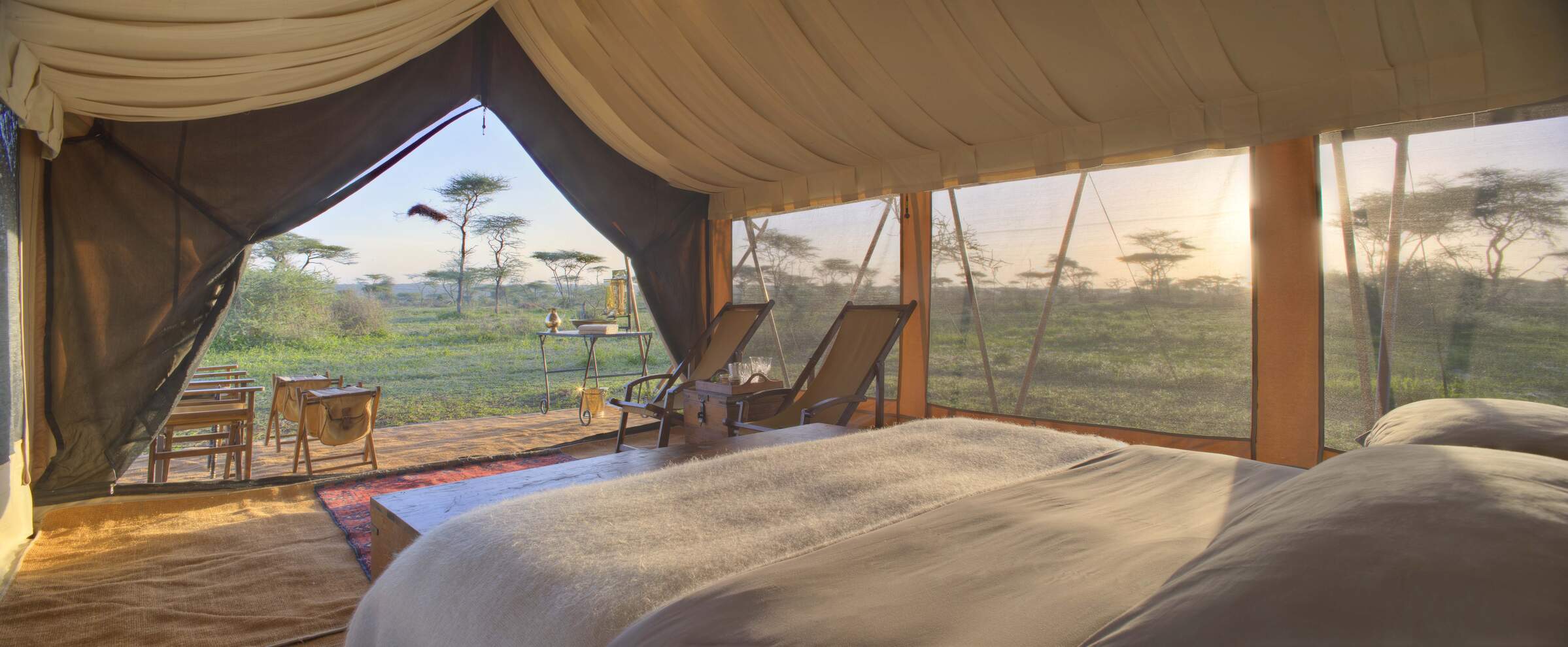
Serengeti under Canvas
Two of the three Serengeti under Canvas camps move through the Serengeti National Park every few months to follow the wildebeest migration.
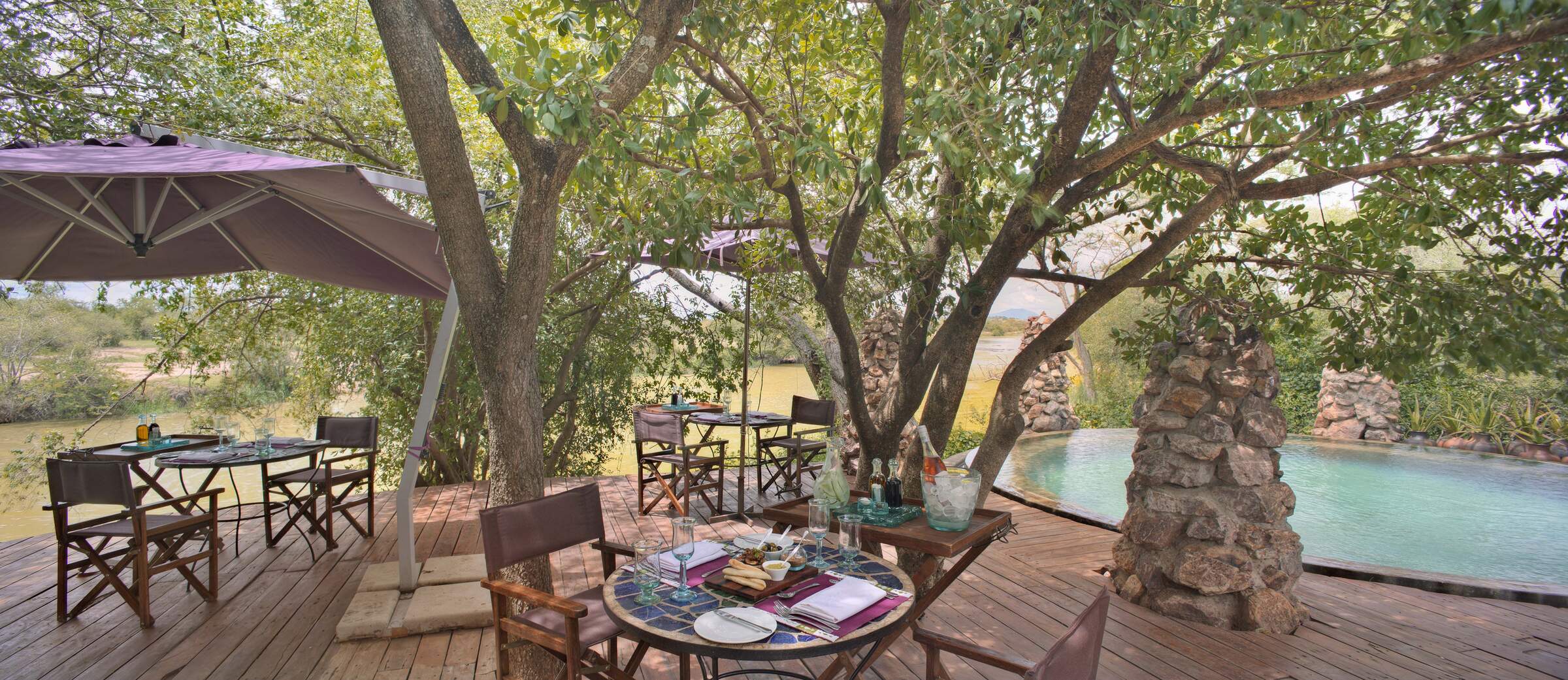
Grumeti River Camp
Grumeti River Camp offers a laid-back atmosphere combined with top service, first-rate food, expert guiding and an excellent location.
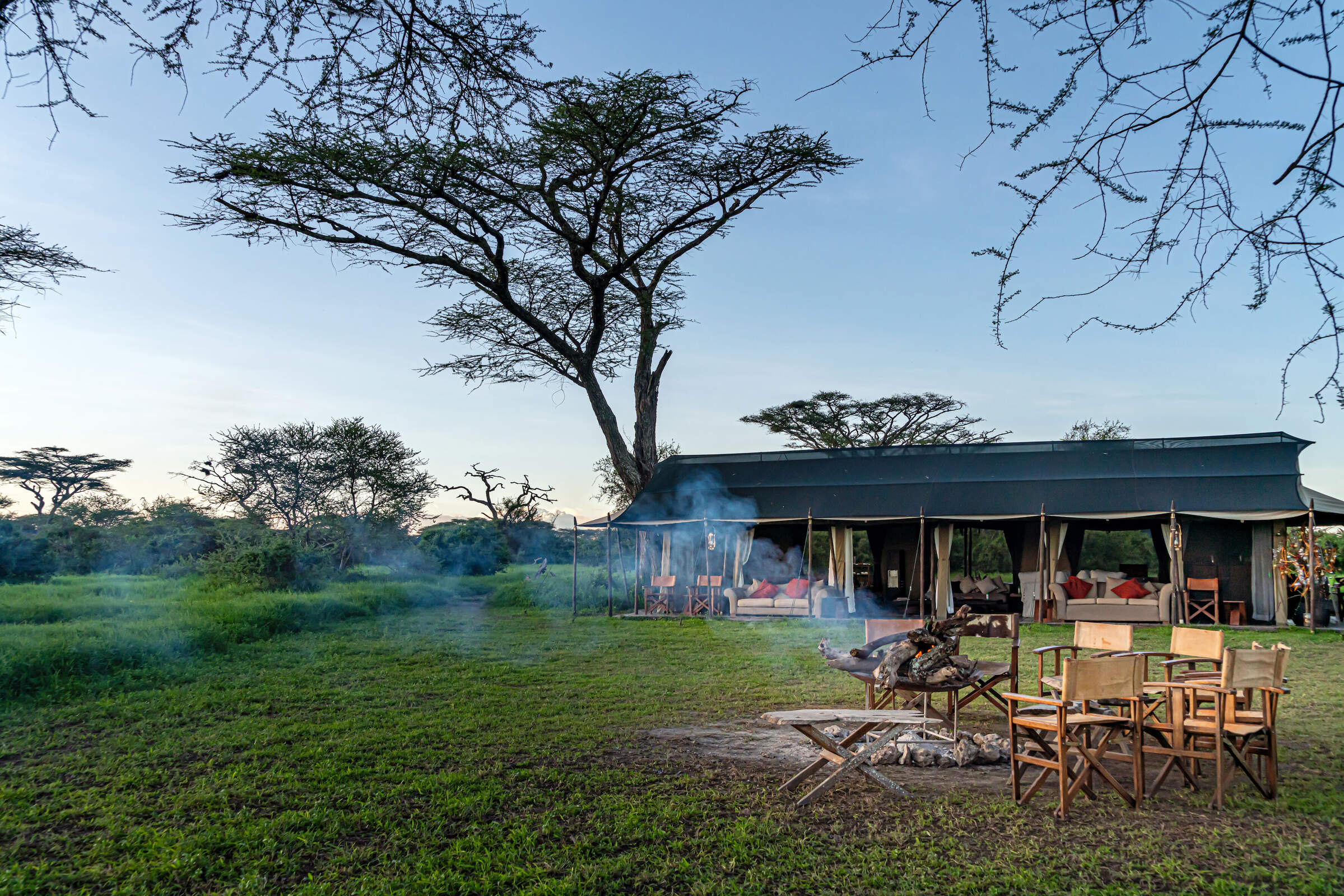
Lemala Mara-Ndutu
Lemala Mara-Ndutu is a semi-permanent camp that moves between the north and south of the Serengeti to witness the wildebeest migration.
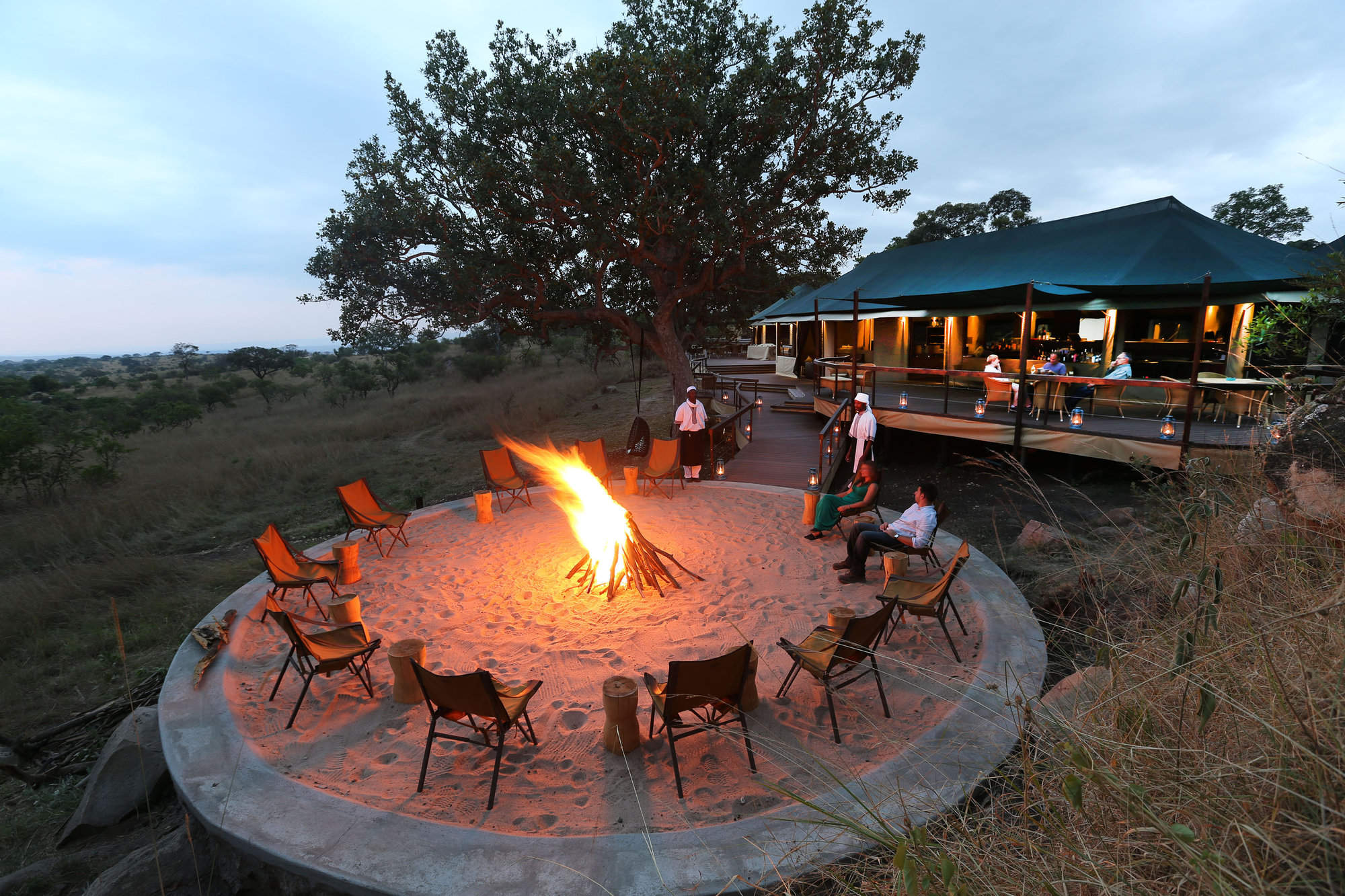
Lemala Kuria Hills
Lemala Kuria Hills is a luxury permanent camp that is ideally located for wildlife all year around, but especially during the wildebeest migration.
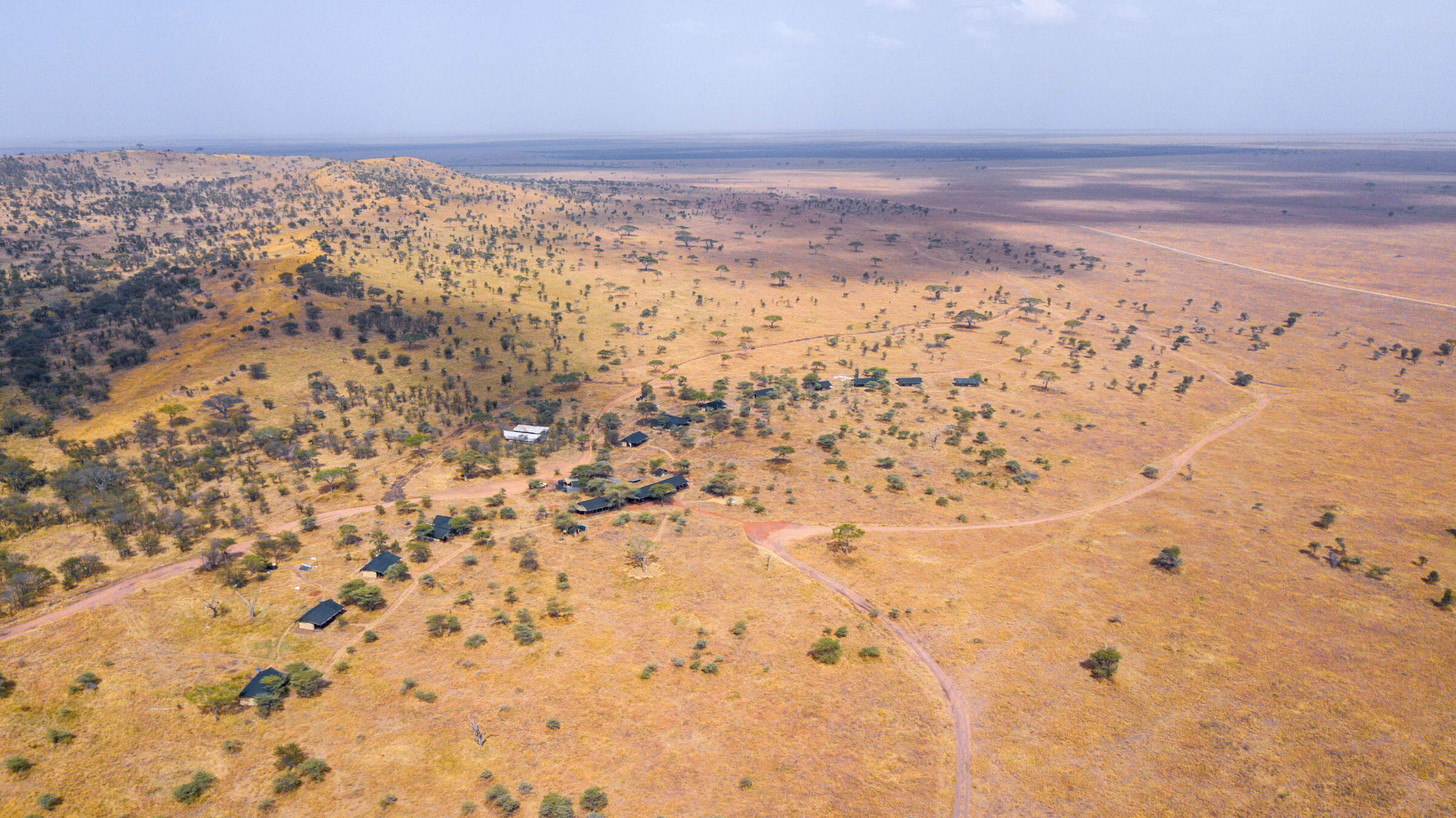
Lemala Ewanjan
Lemala Ewanjan is a comfortable and stylish tented camp in the Seronera area of the central Serengeti National Park.
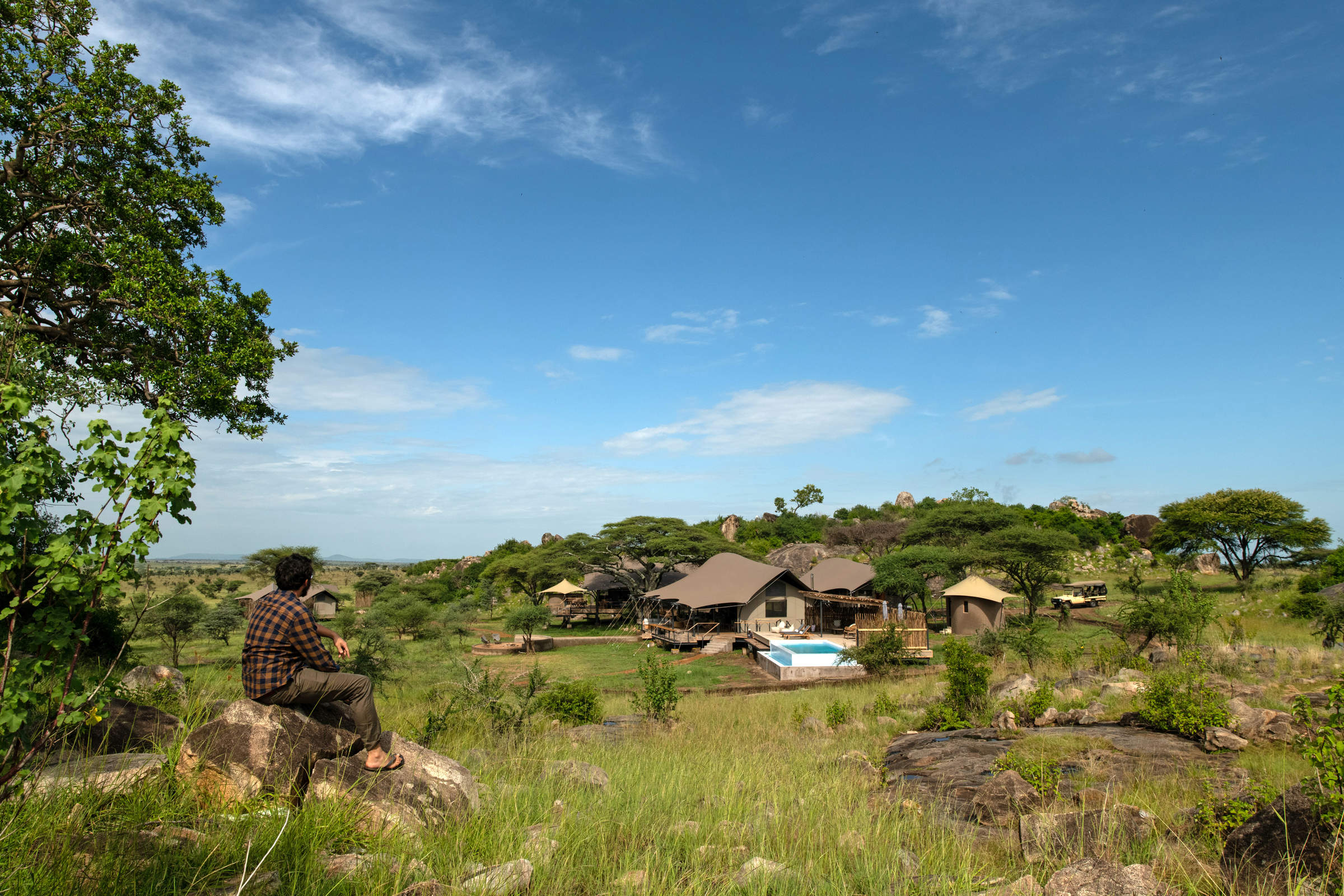
Lemala Nanyukie
Lemala Nanyukie is a stylish camp located in the quieter part of the central Serengeti.
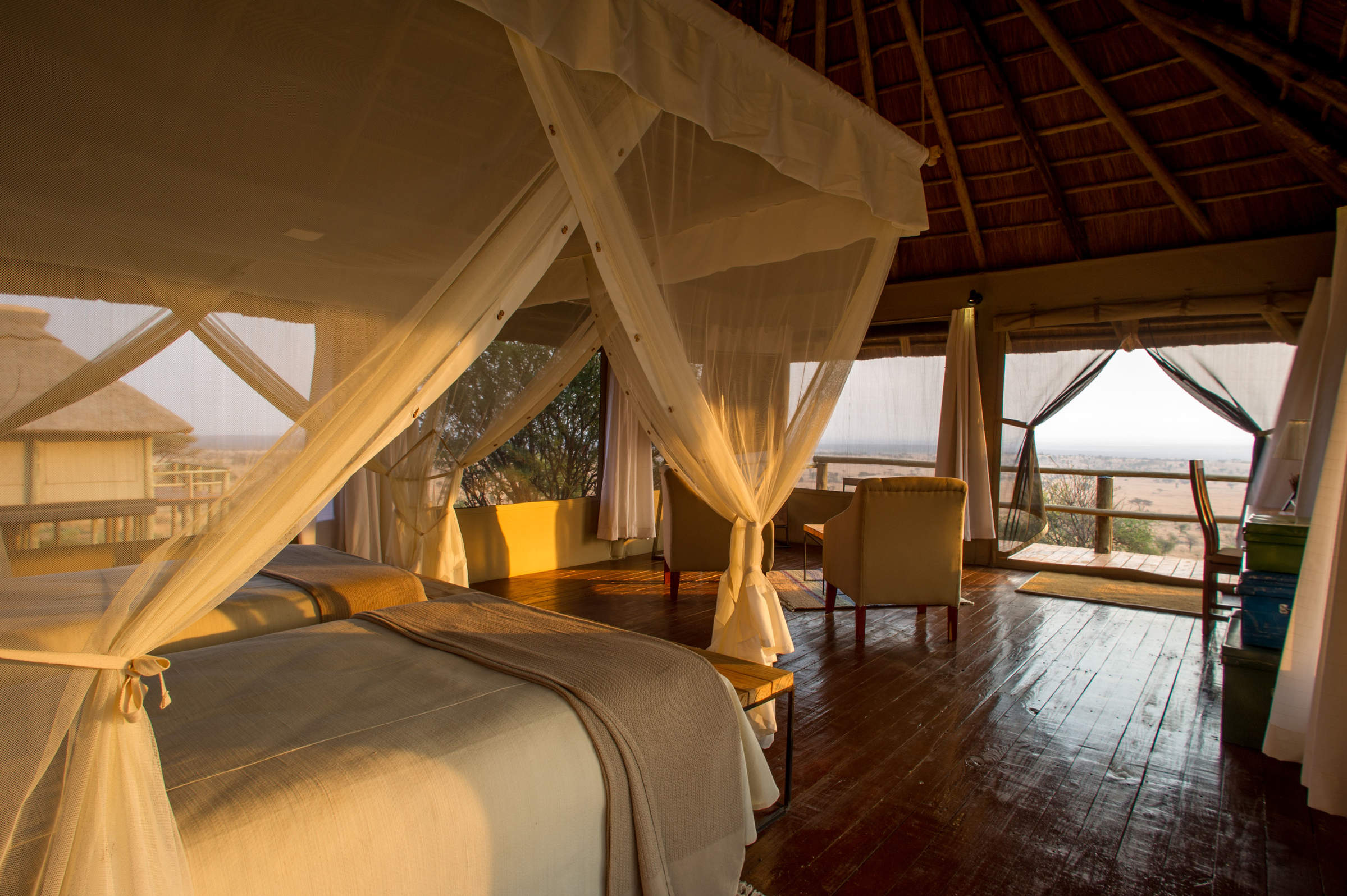
Kubu Kubu
Kubu Kubu is a contemporary, tented lodge, well located in the central Seronera area of the Serengeti National Park.
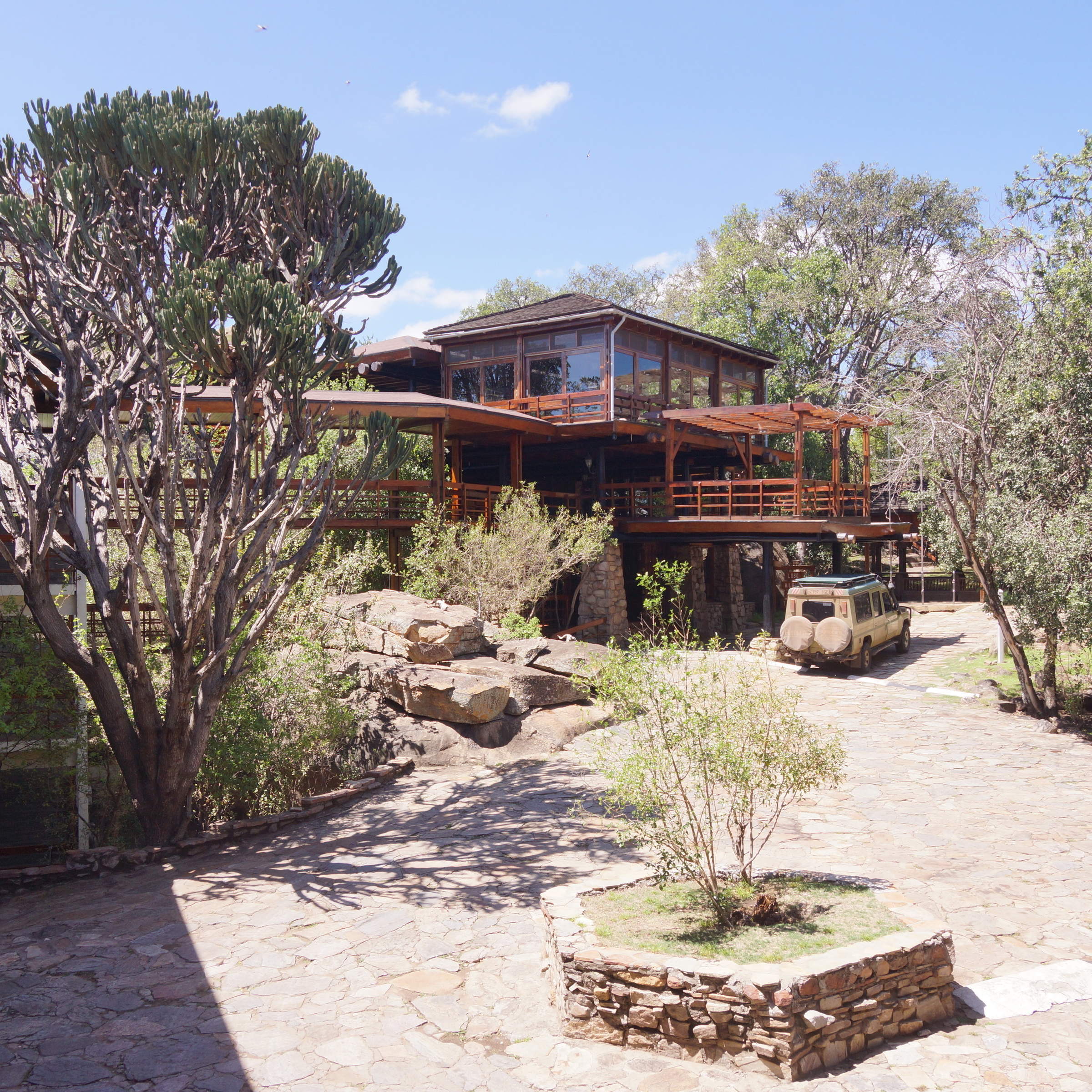
Lobo Wildlife Lodge
The large Lobo Wildlife Lodge has simple, functional rooms in a stunning location. It's a good base for exploring the north-eastern Serengeti.
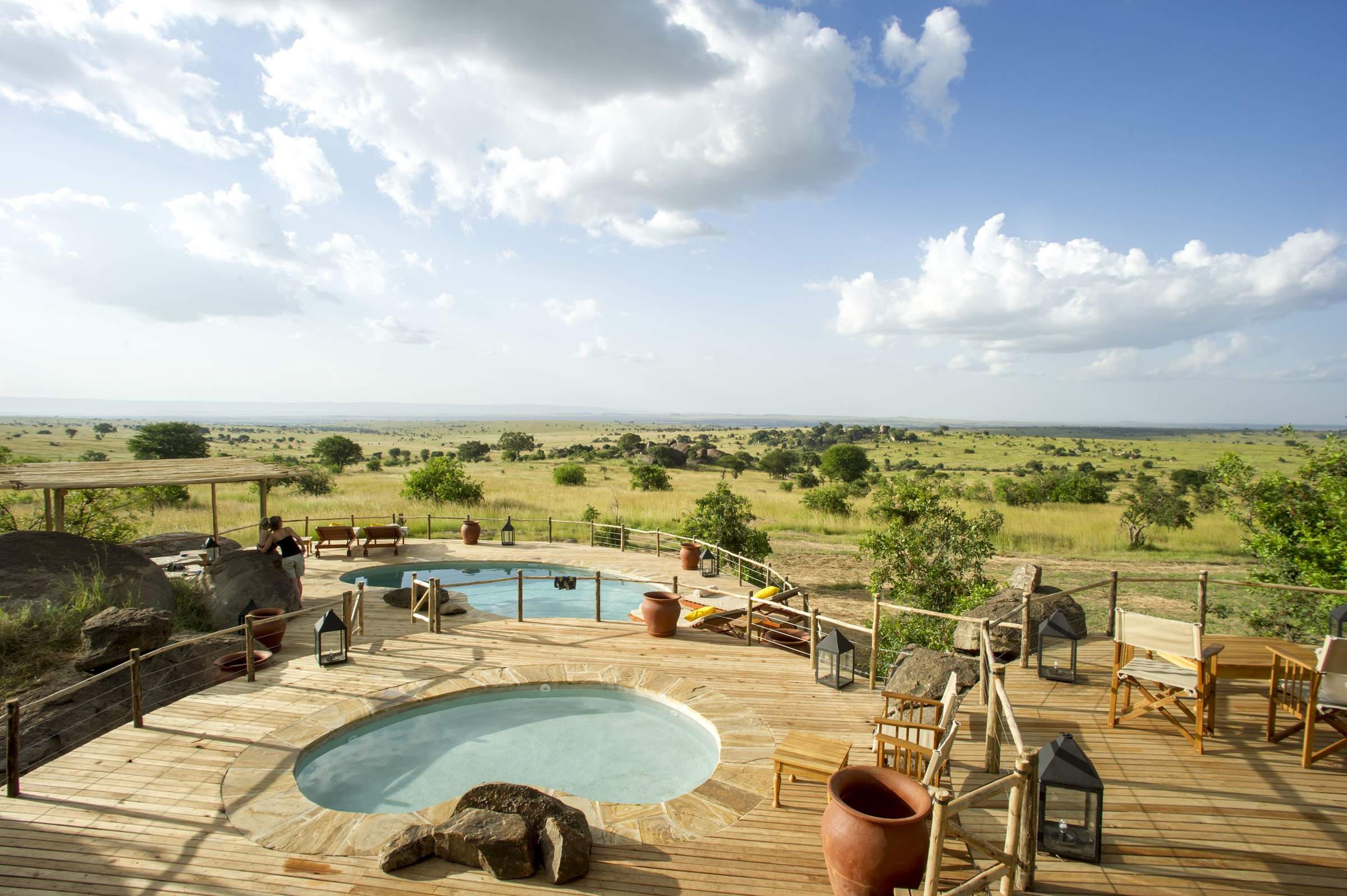
Mkombe's House Lamai
Mkombe's House Lamai is a fully staffed private house in the Wogakuria Kopjes district of Serengeti National Park.
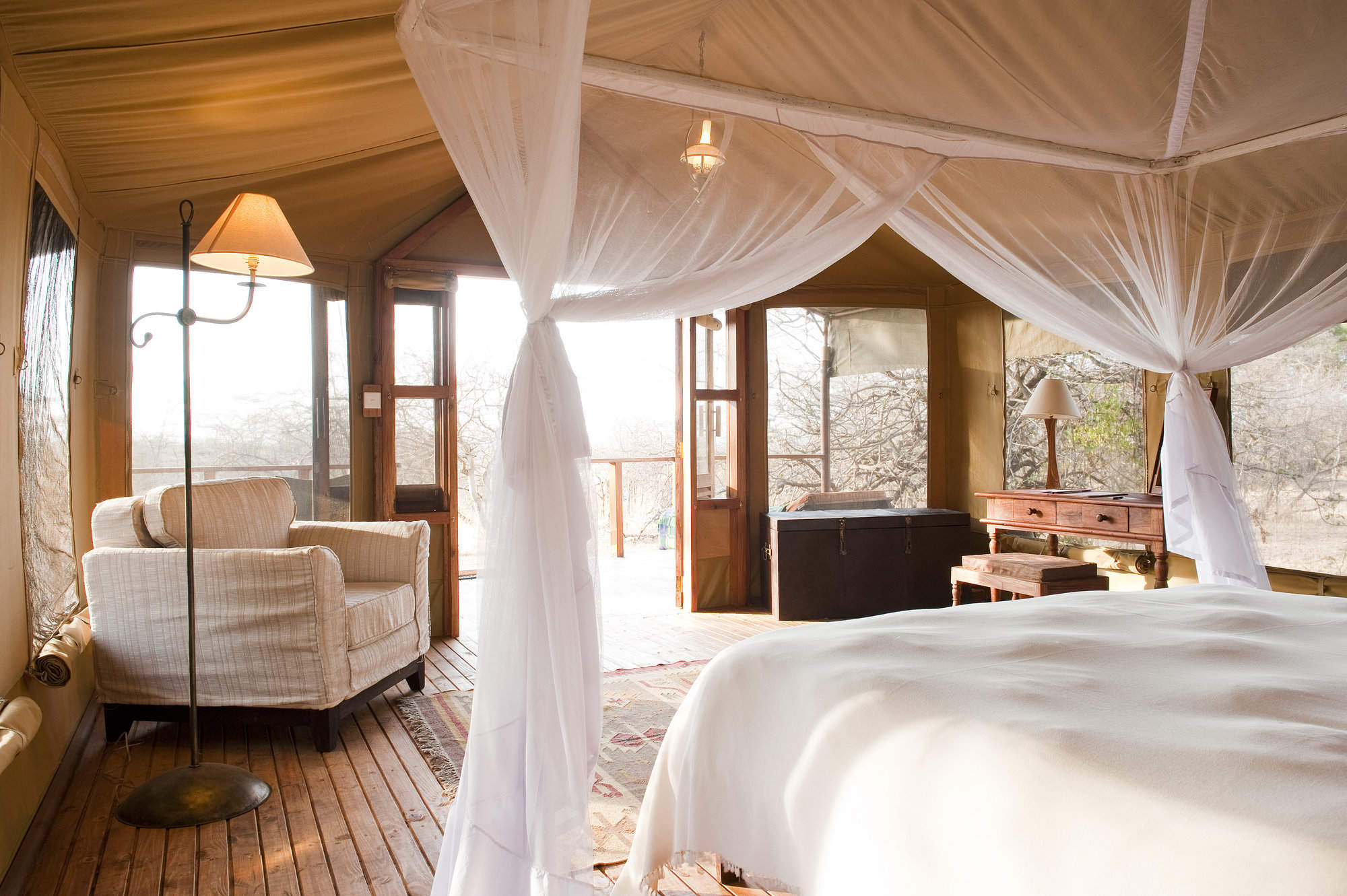
Kusini Camp
Kusini Camp is permanent, luxury camp located on a beautiful kopje in a quiet, wildlife-rich corner of the south-west Serengeti.
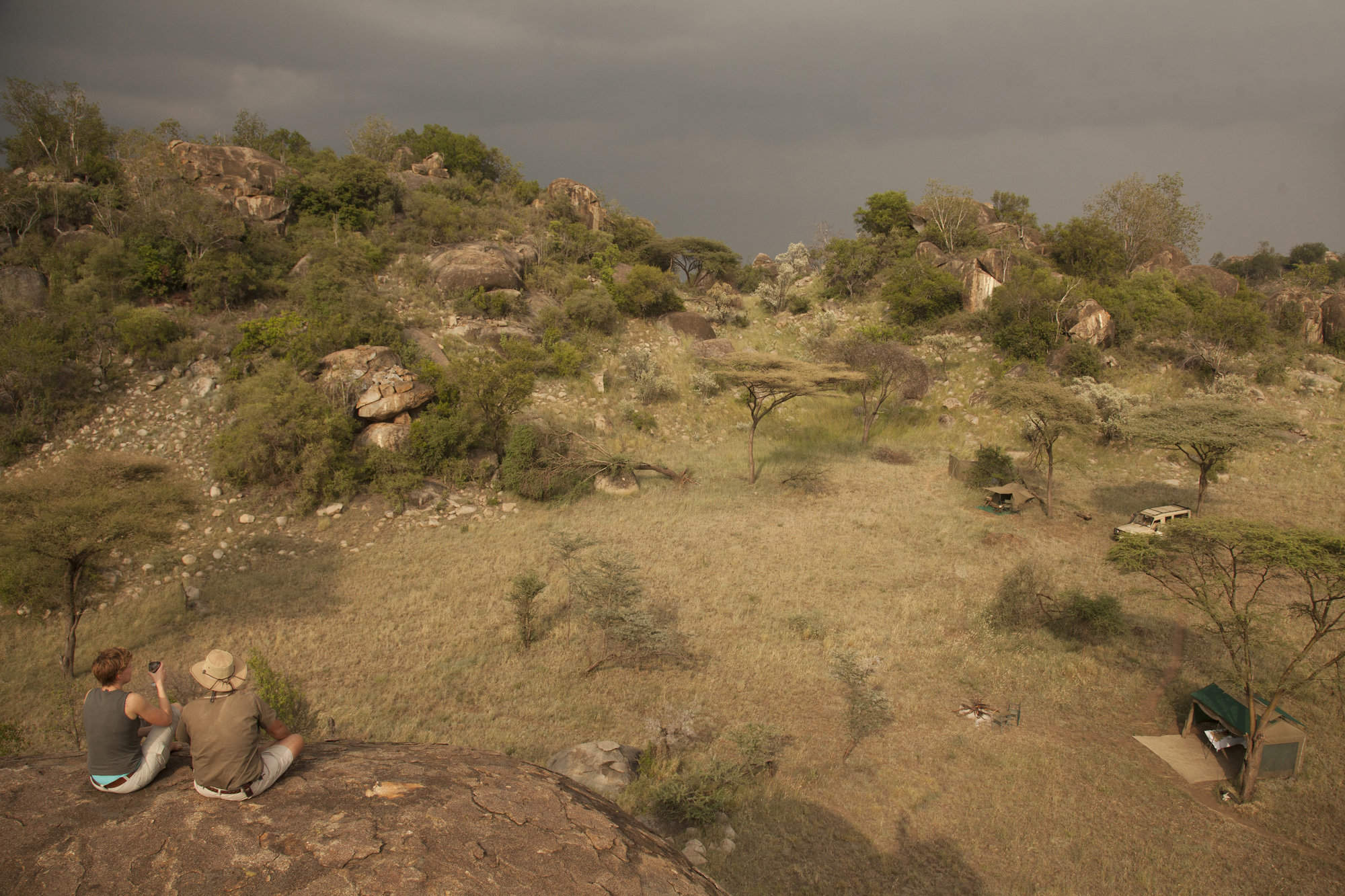
Serengeti Walking Mobile
This fairly simple camp offers only walking activities, but it's very well done and combines well with more conventional camps or lodges.
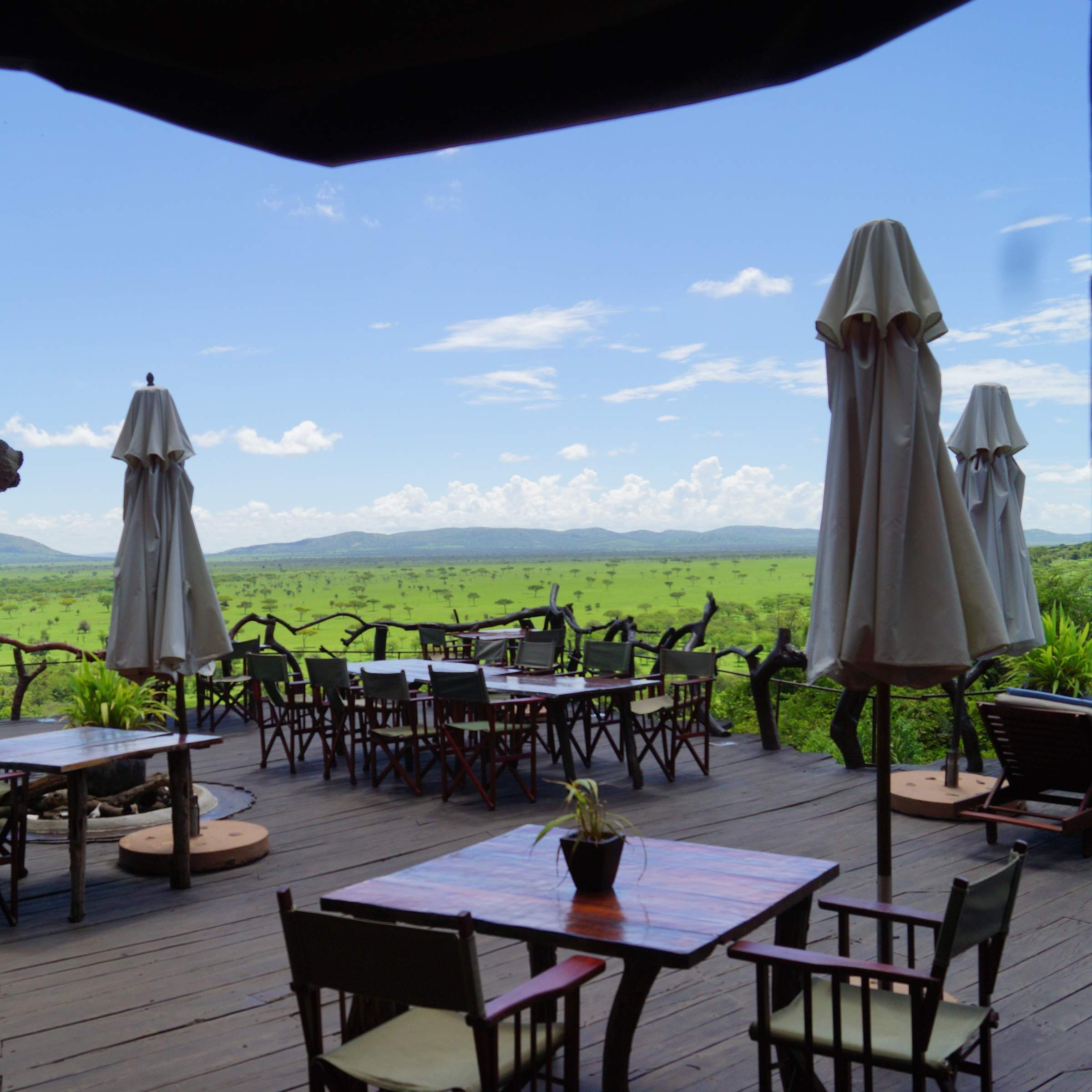
Mbalageti Lodge
Mbalageti is a well-run lodge in a quiet part of the Serengeti's western corridor – an ideal location during the Apr-Jun migration.
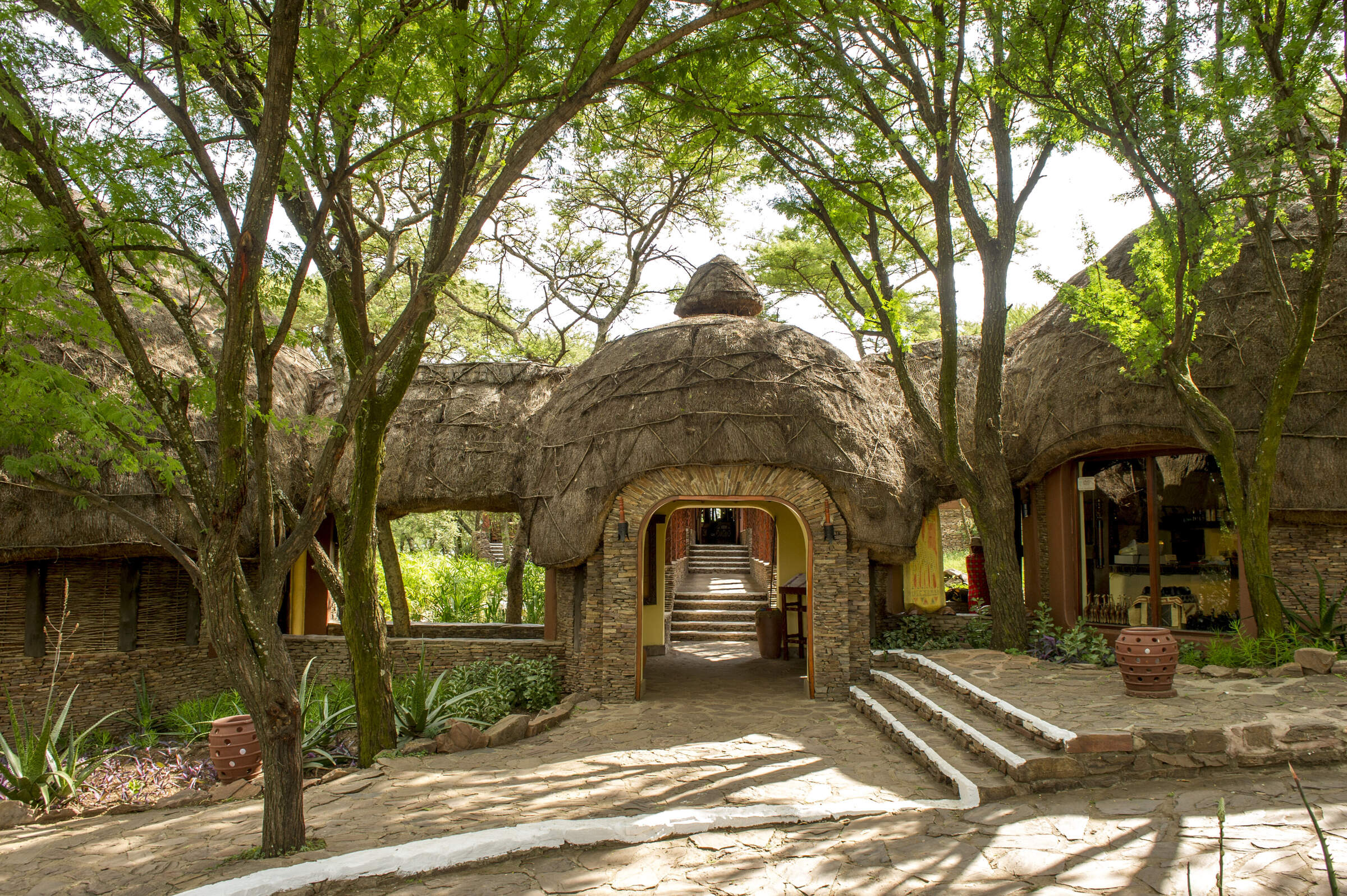
Serengeti Serena
The Serengeti Serena Safari Lodge is a large, hotel-style lodge and a good family-friendly base from which to explore the central Serengeti.
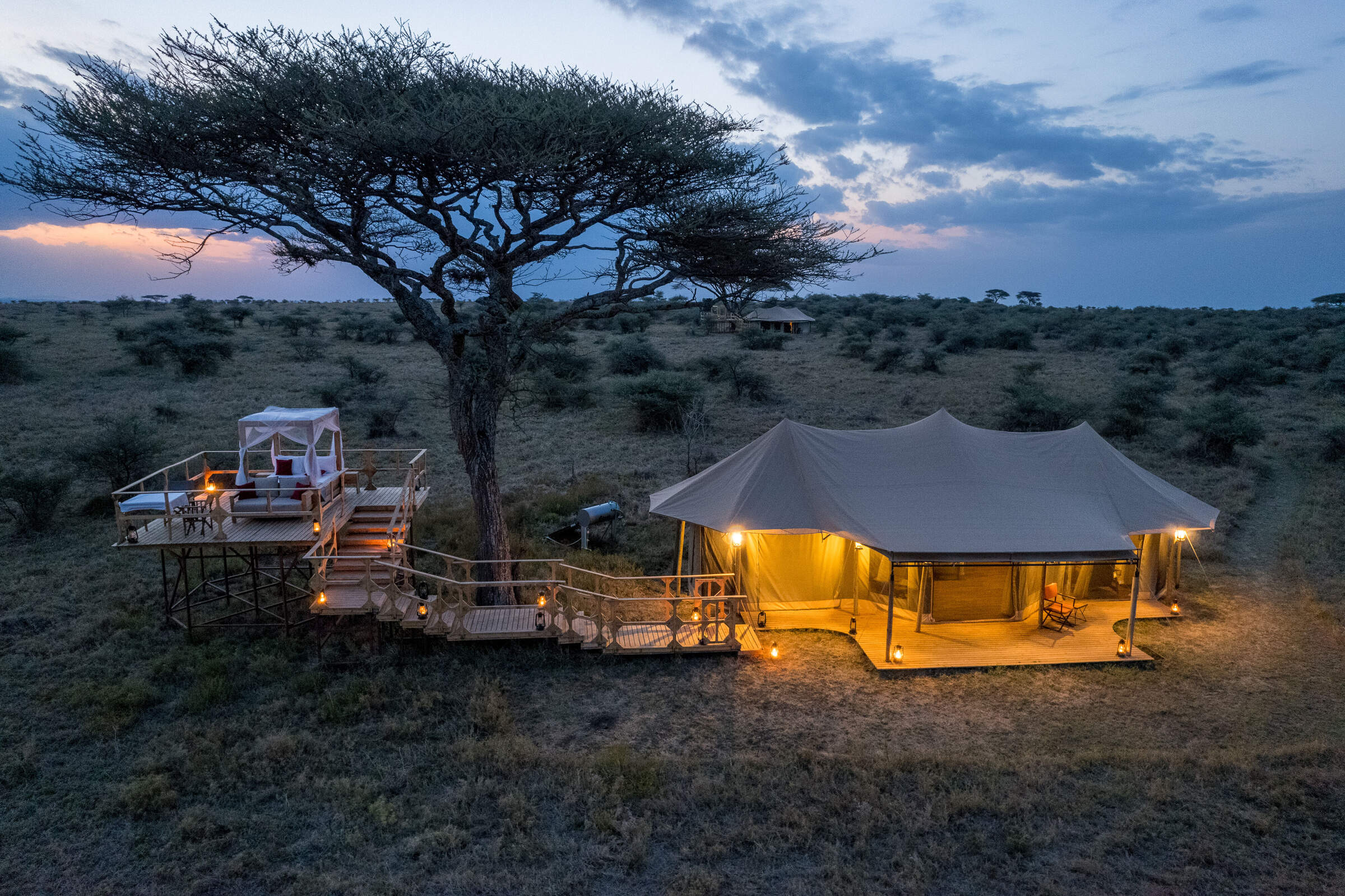
Olmara Camp
With just eight guest tents, including two family tents and three signature stargazer tents, Olmara is a simple, family-friendly camp with a wonderfully attentive team. The camp captures an authentic bush experience, welcoming travellers of every kind.
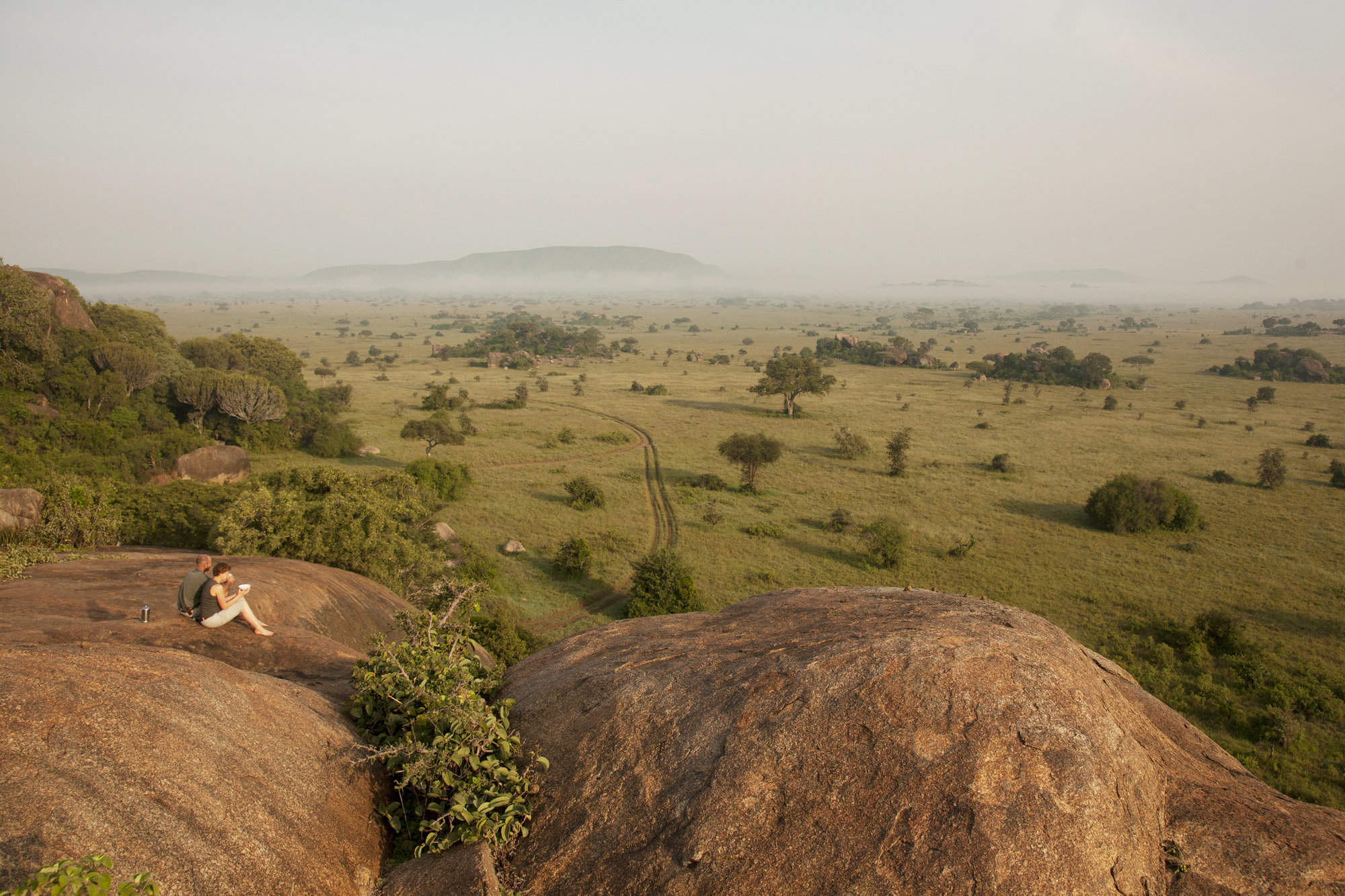
Serengeti Green Camp
Serengeti Green Camp is a comfortable camping experience, in your own private safari camp and at the heart of a great wildlife area.
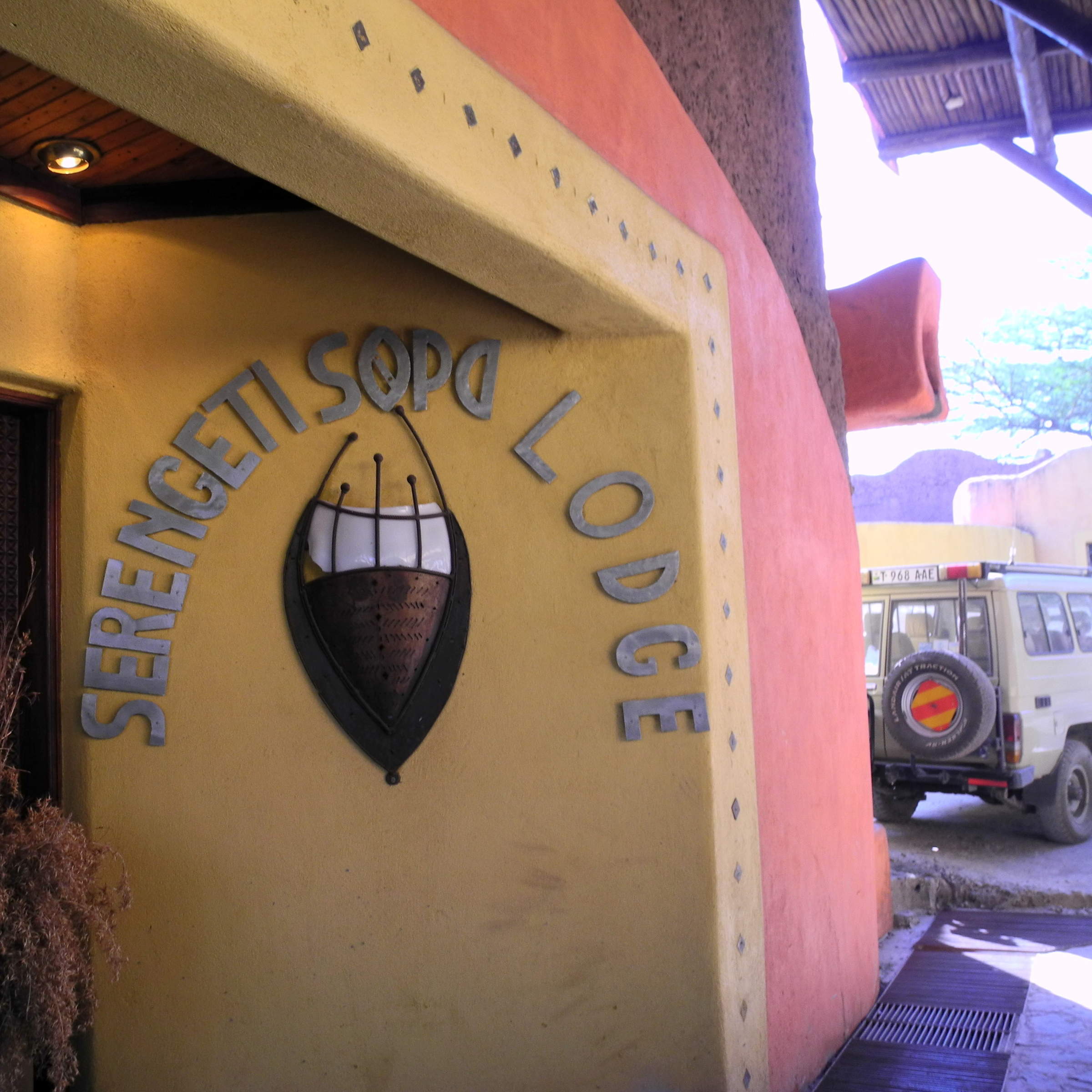
Serengeti Sopa Lodge
Serengeti Sopa Lodge is an international-style hotel offering good-value accommodation in the central Serengeti, with lovely views of the plains.
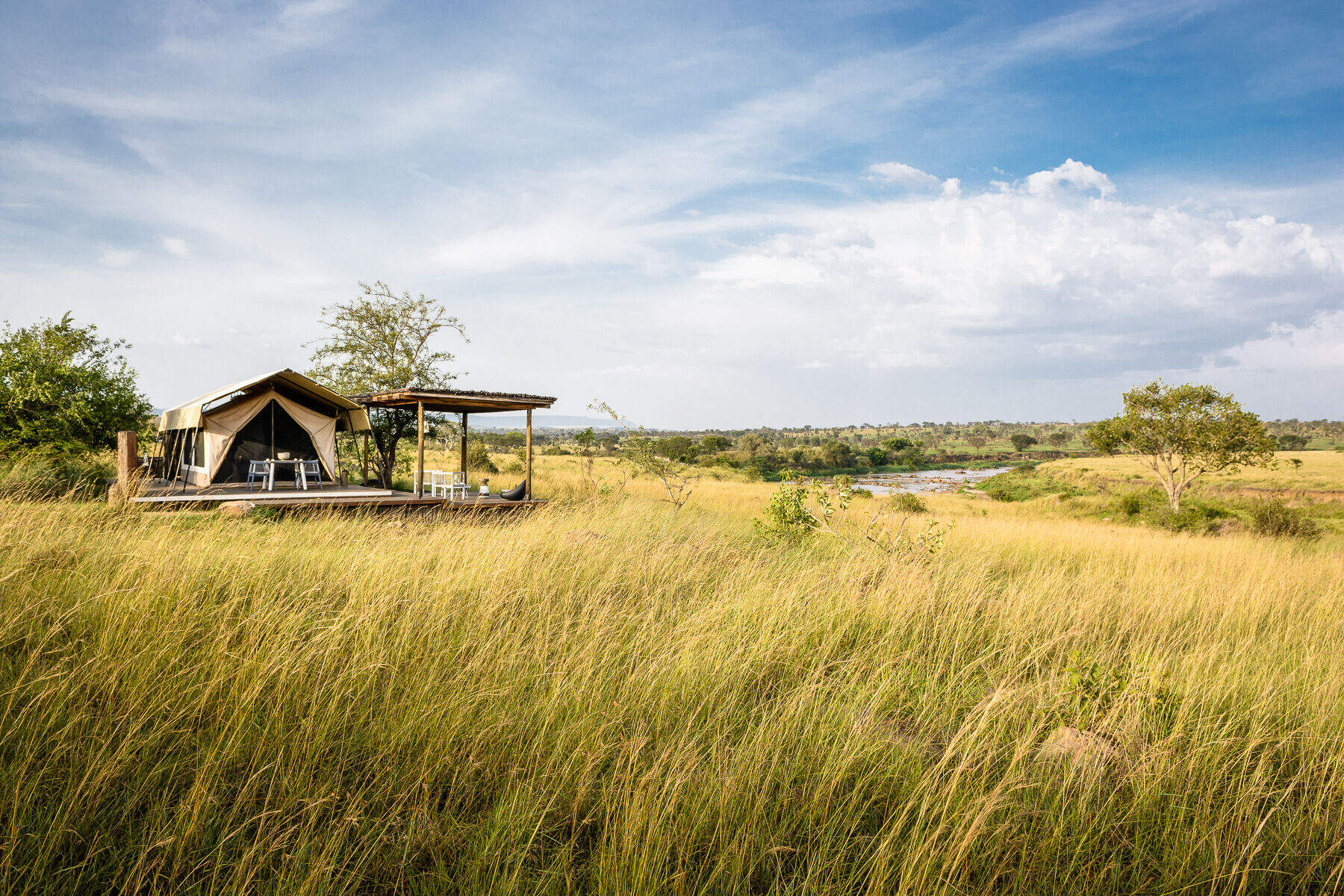
Singita Mara River
Singita Mara River Tented Camp is a luxurious camp in the isolated and rewarding Lamai wedge region of the northern Serengeti.
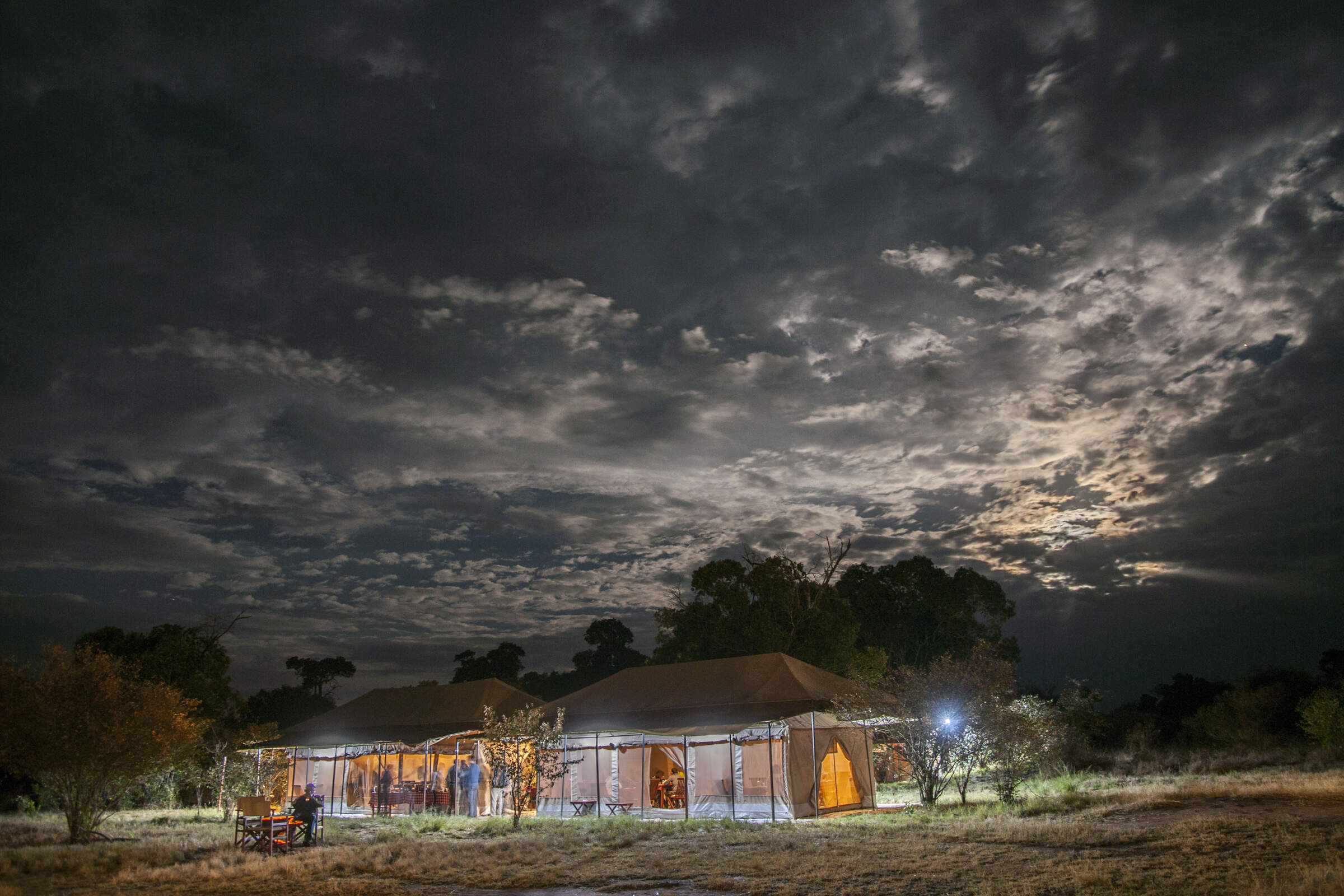
Migration Camp
Serengeti Migration Camp is a smart tented camp, good for the wildebeest migration from Jul–Aug, or to explore the Lobo Kopjes any time.
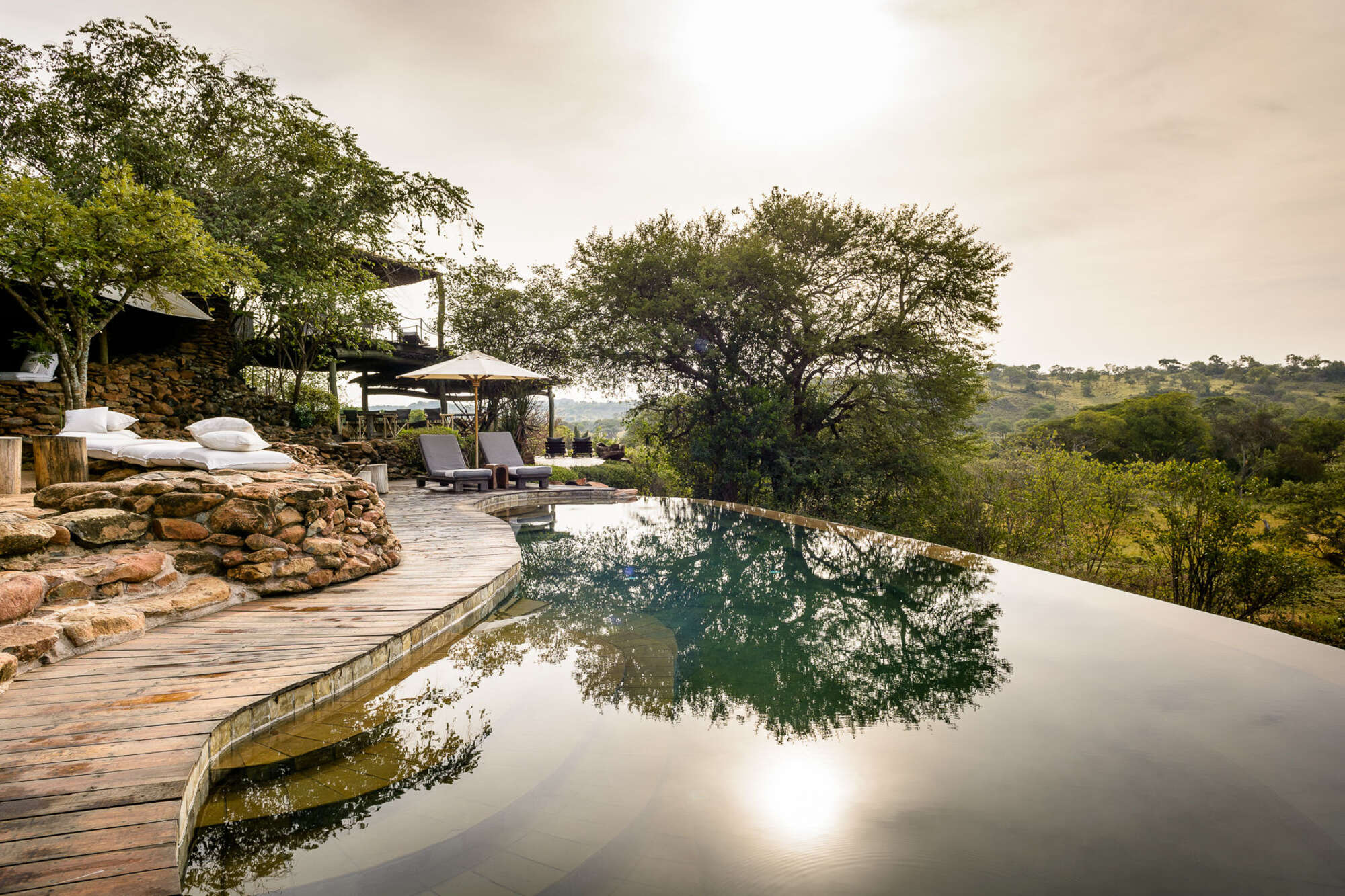
Faru Faru Lodge
On the north bank of the Grumeti River, Faru Faru is a small, chic hideaway in this exclusive corner of the Serengeti.
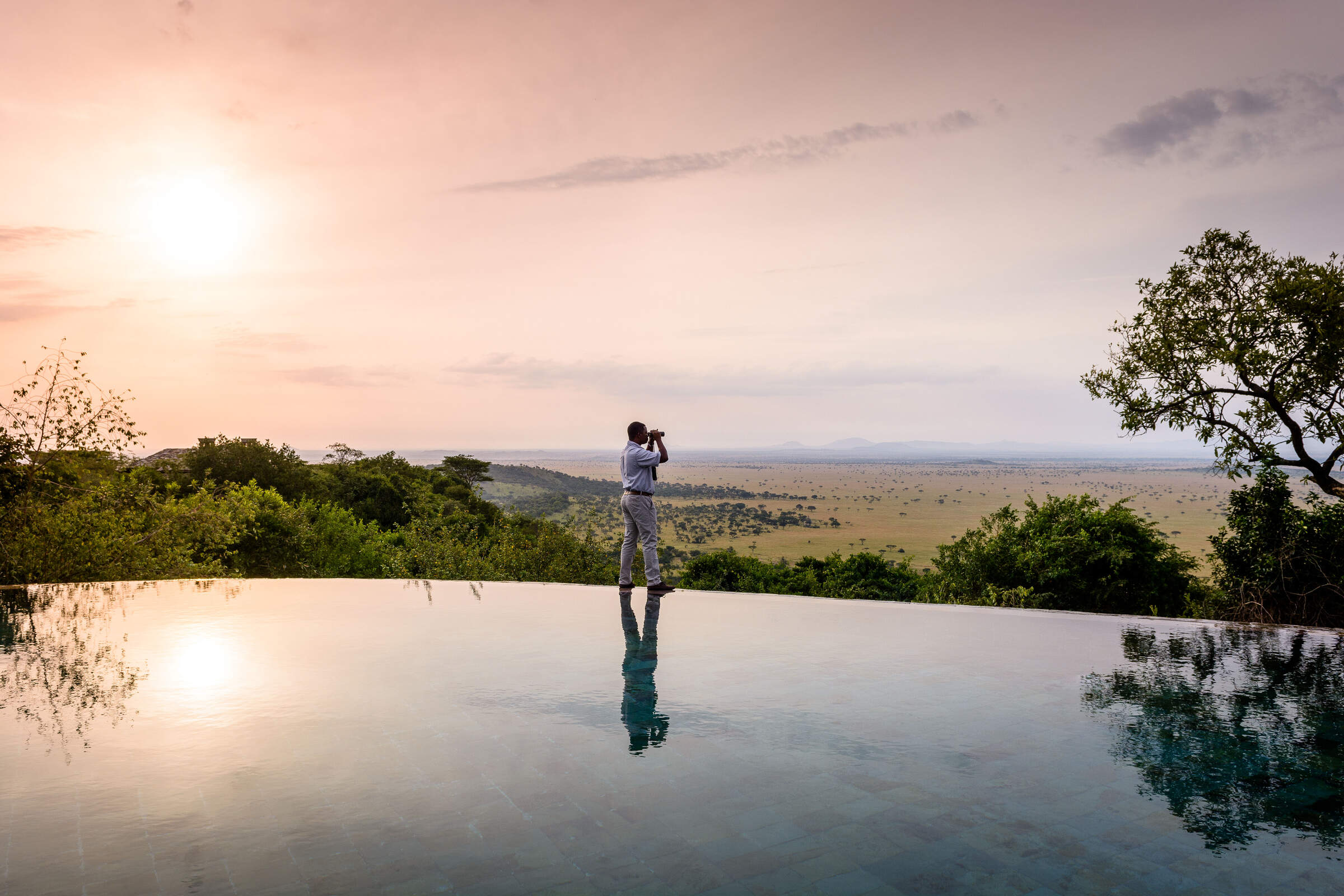
Sasakwa Lodge
On a hill looking over the Serengeti plains, Sasakwa Lodge is grand, luxurious safari camp, one of the most opulent properties in Tanzania.
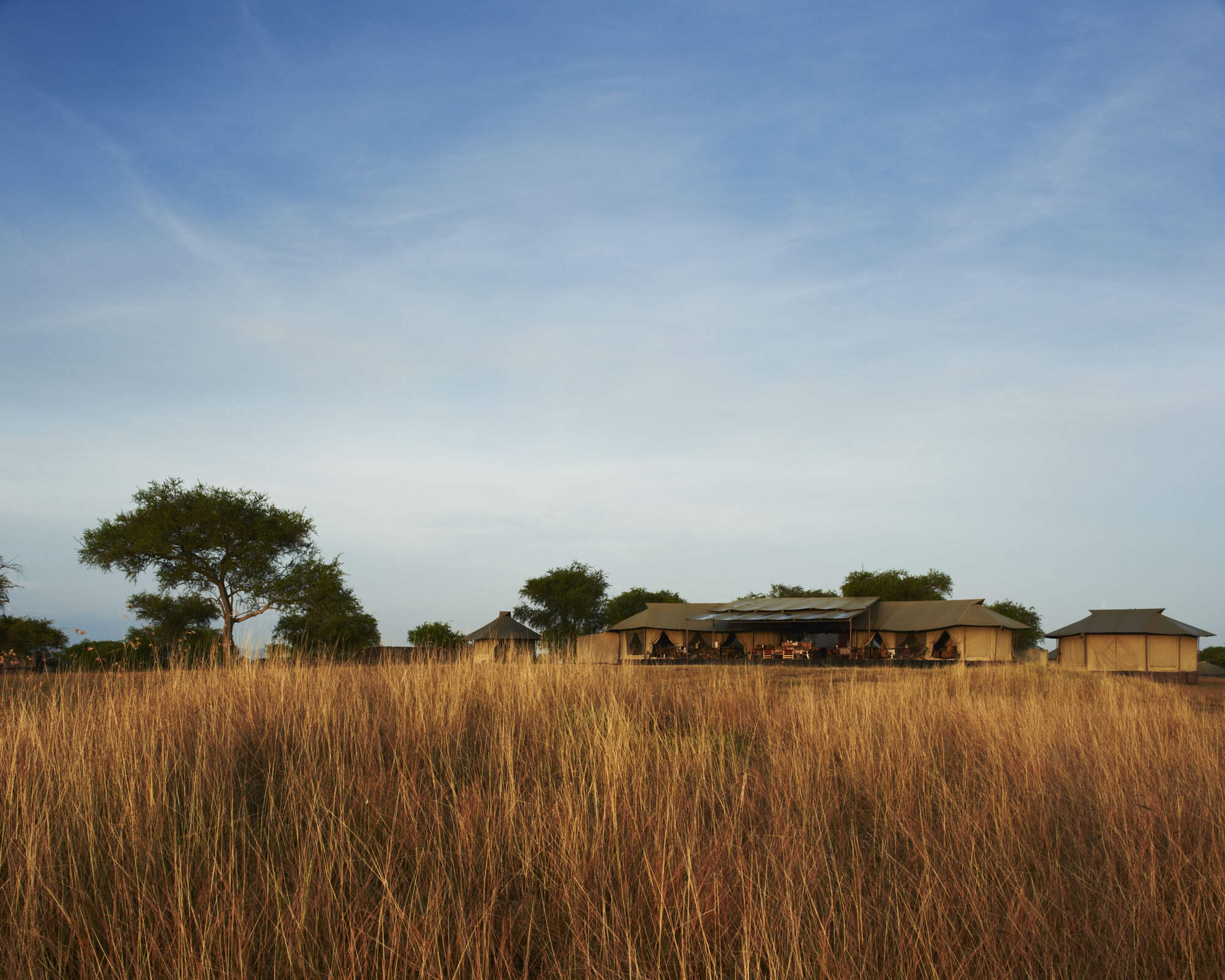
Sabora Tented Camp
Sabora Tented Camp is a smart tented camp – one of the most luxurious, professional and stylish properties to be found in Tanzania.
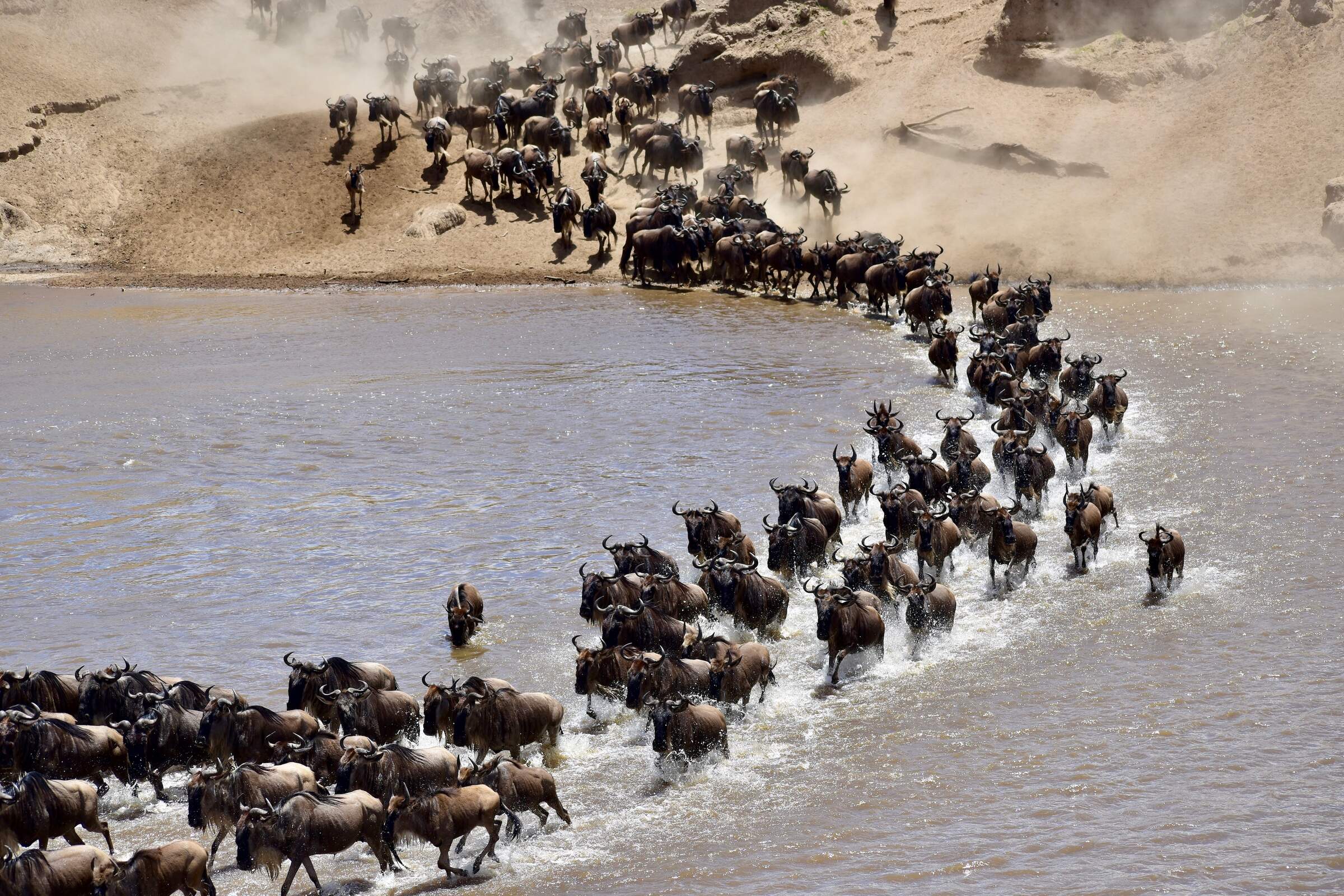
Kirurumu Migration Camp
Kirurumu is a rustic tented camp which moves around the Serengeti twice a year to follow the wildebeest migration.
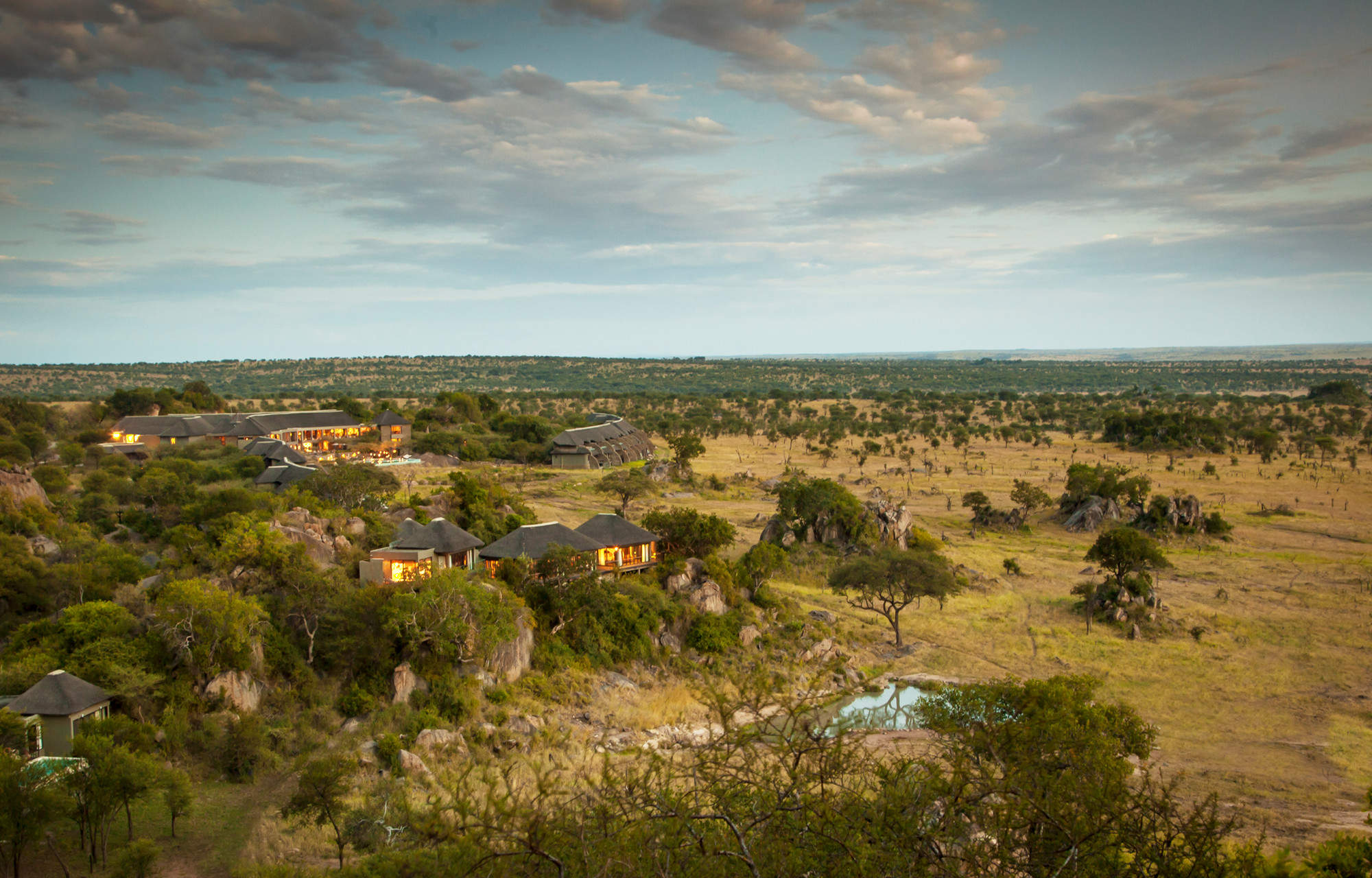
Four Seasons Serengeti
The Four Seasons Safari Lodge is the only hotel in the Serengeti offering international facilities such as a gym, spa and children’s club.
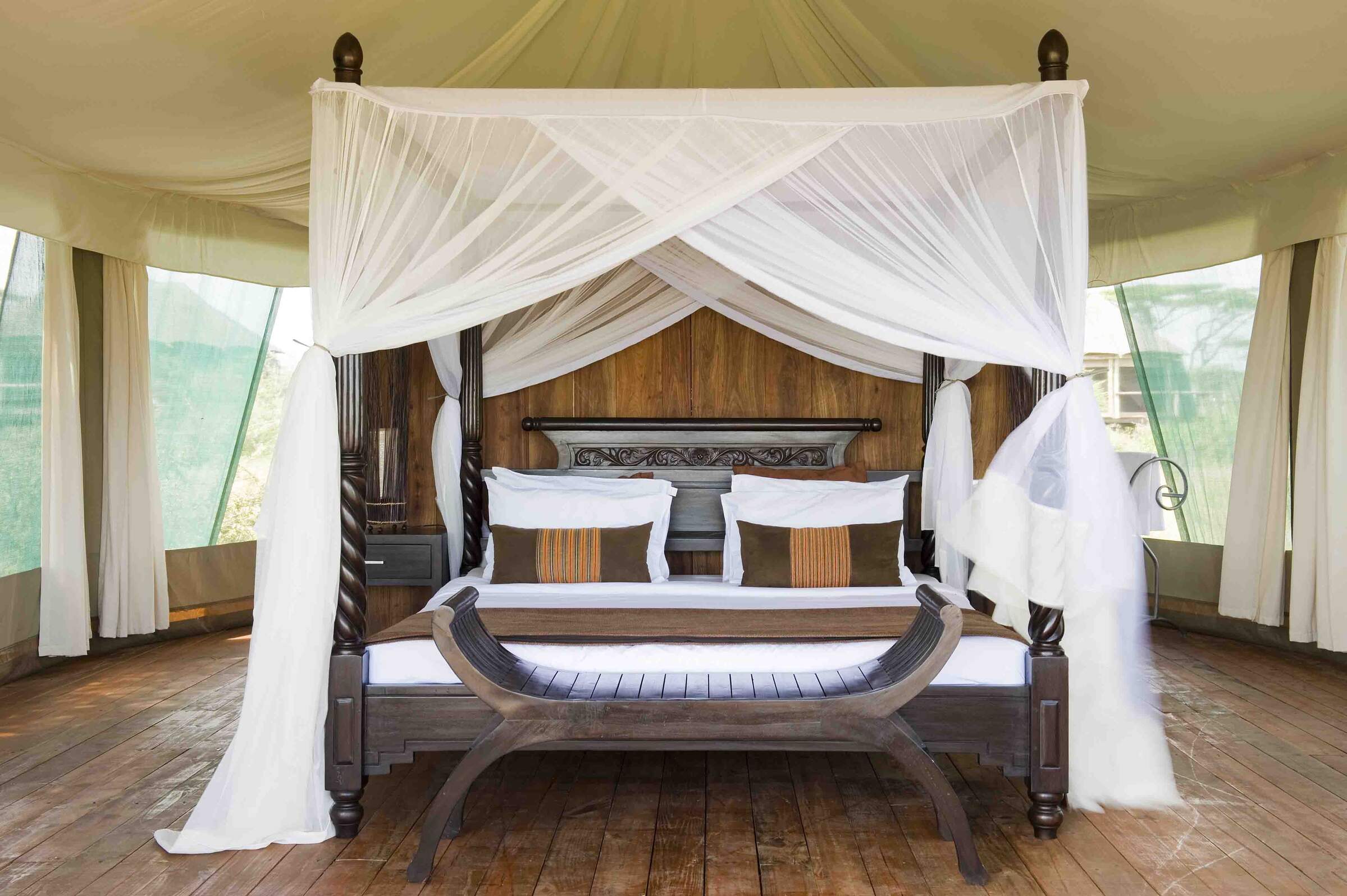
Lake Masek Tented Camp
Ideally located for the wildebeest migration from Dec–Apr, Lake Masek Tented Camp is a good, mid-market safari camp.
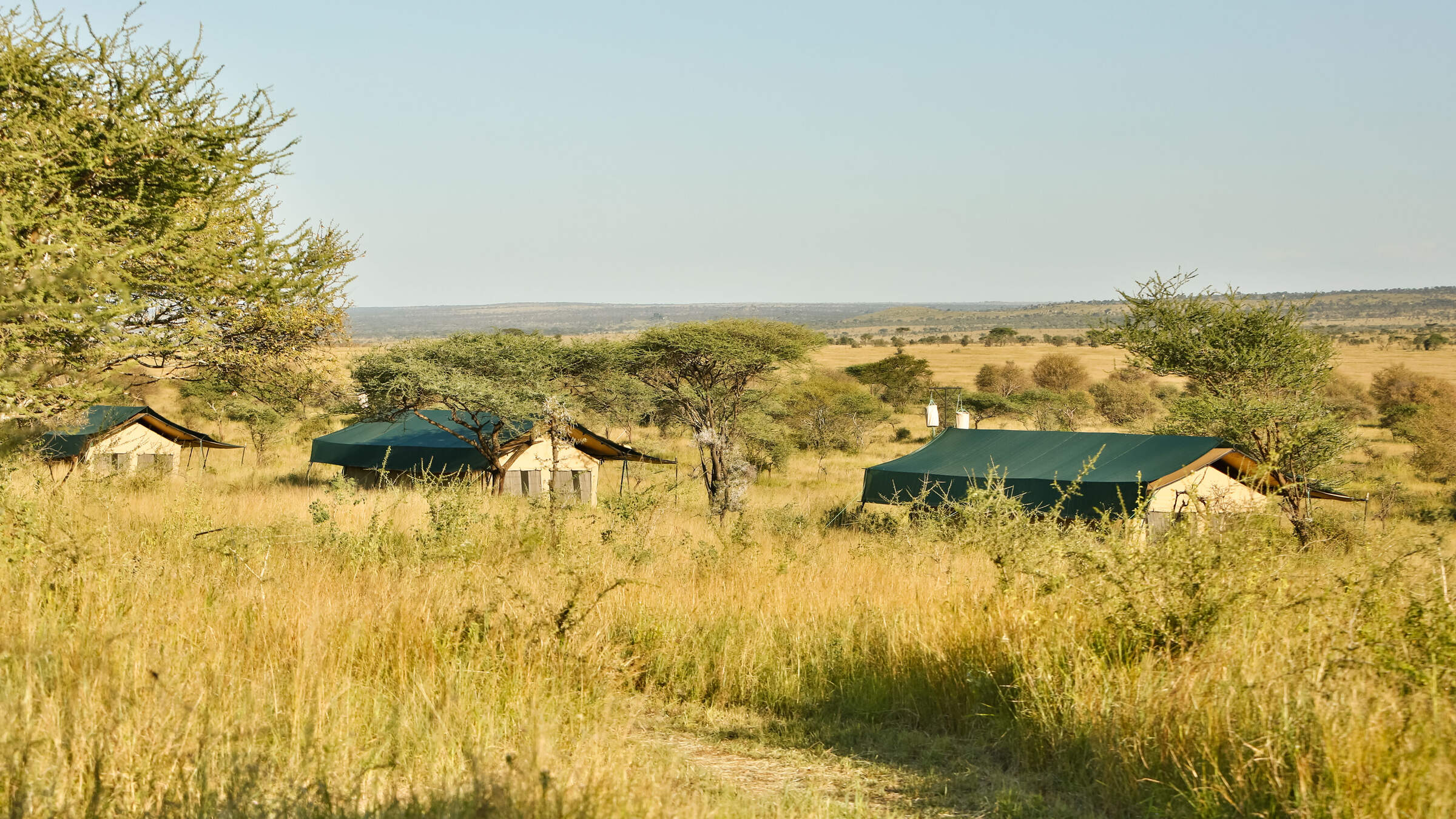
Nyikani Central
Nyikani Central is a comfortable tented camp located in the game-rich Seronera area of the central Serengeti.

Esirai Migration Camp
A season migration camp, with only 8 tents and 1 family tent and plenty of character. Esirai is ideally placed for excellent wildlife and enjoys a simplistic and comfortable under-canvas experience.
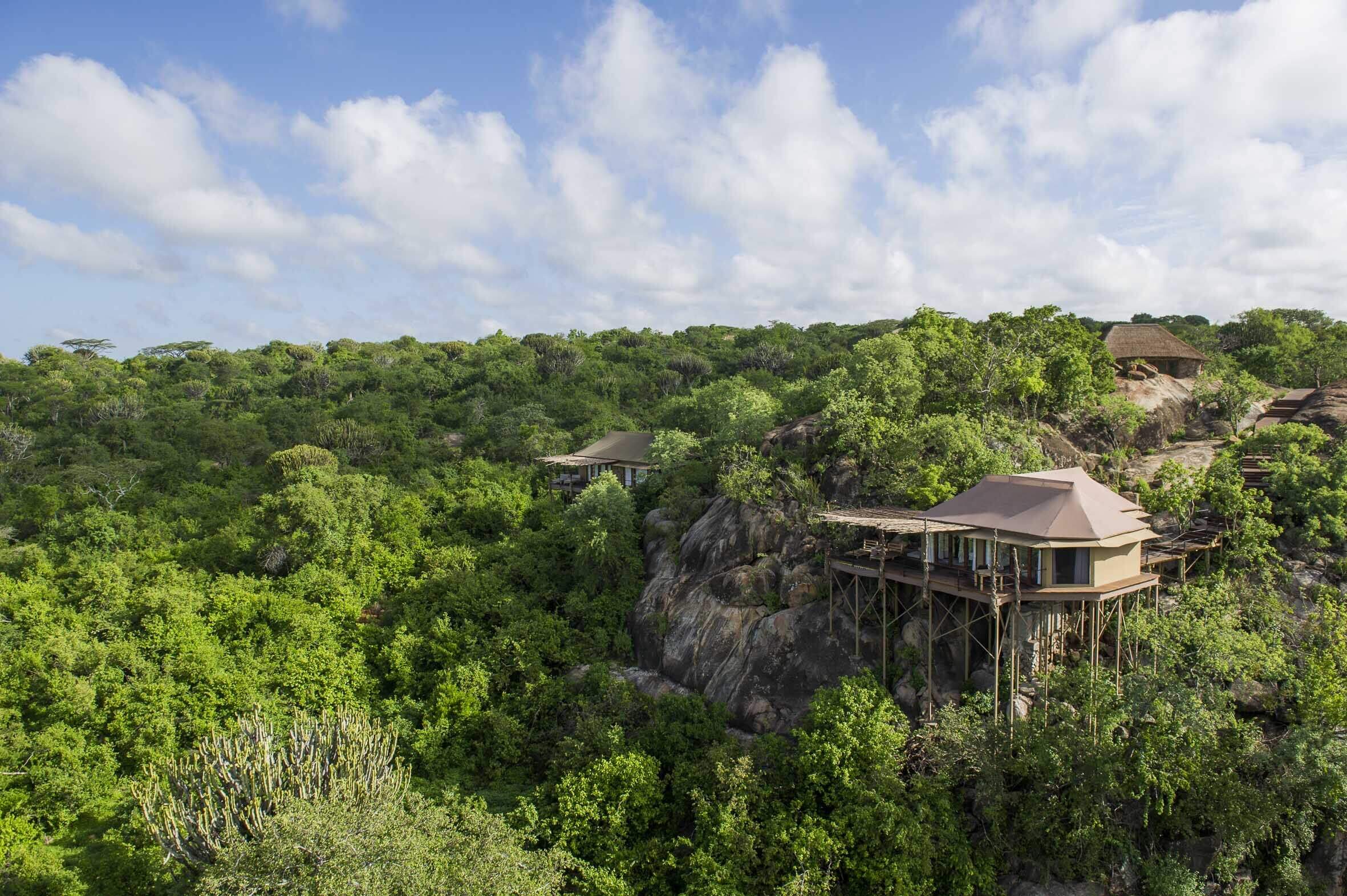
Mwiba Lodge
Mwiba Lodge is a luxurious property located on a private concession on the edge of the southern Serengeti.
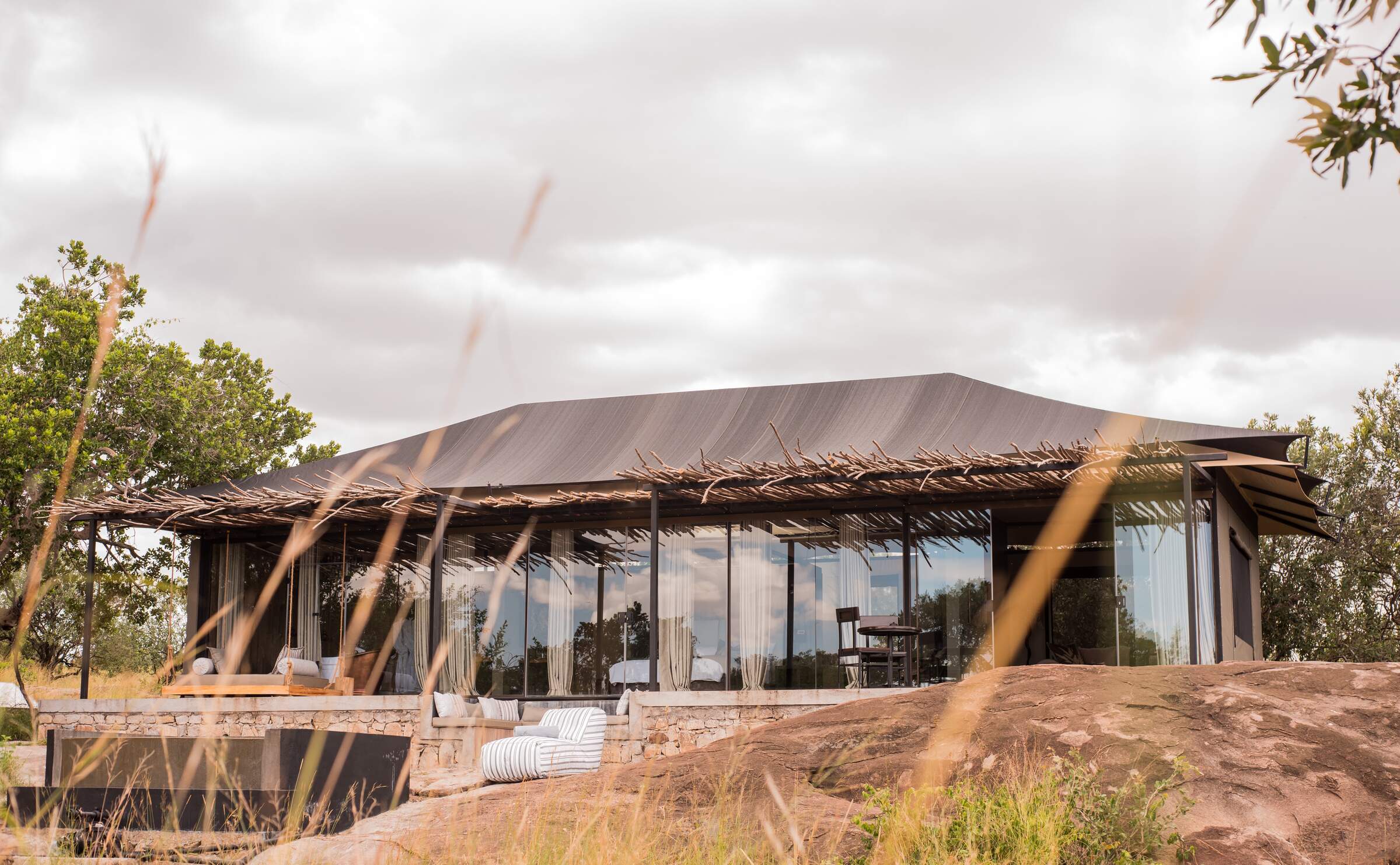
Nimali Mara
Nimali Mara is a luxurious safari lodge in a quiet region of the northern Serengeti with good access to the wildebeest migration.
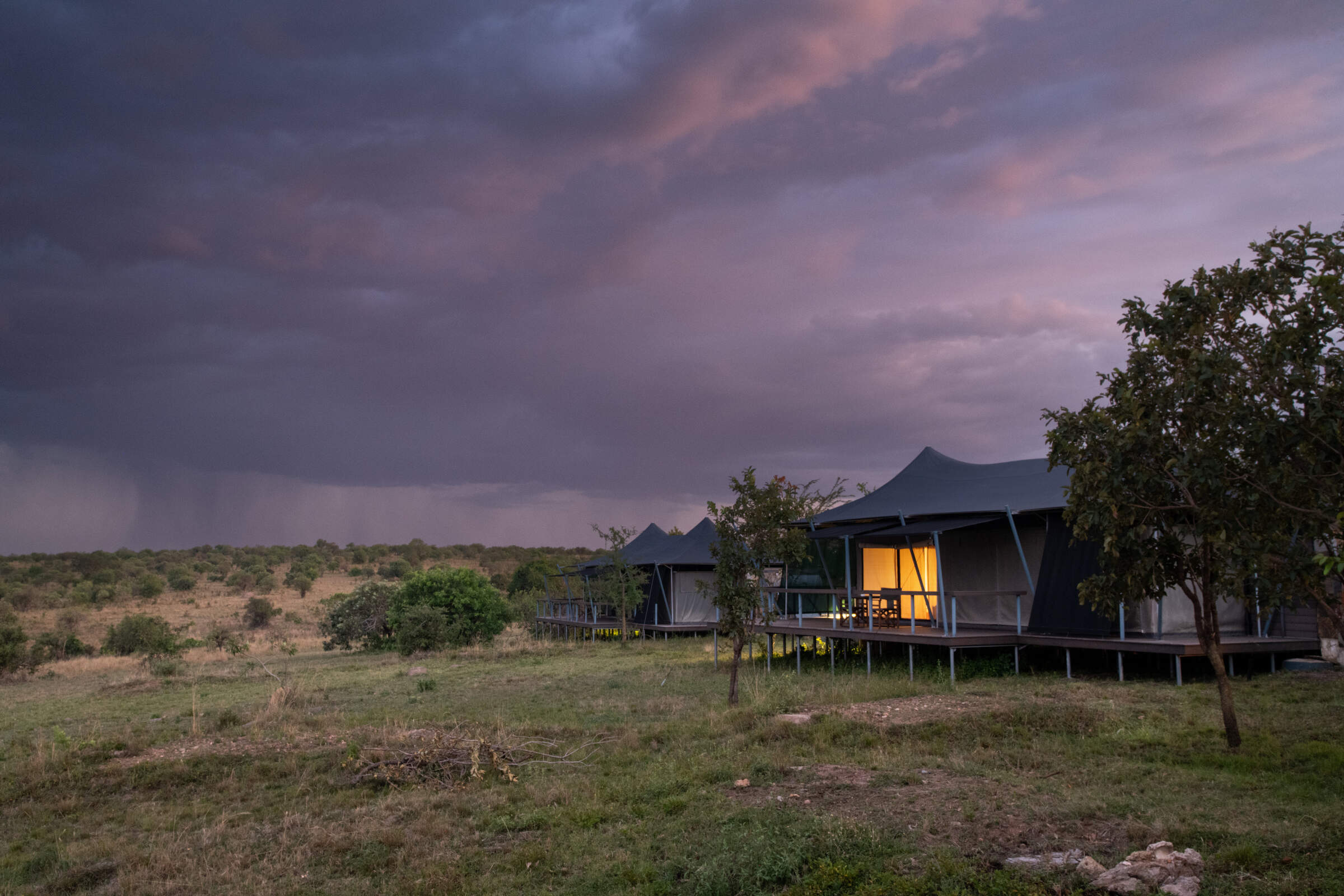
Mara Mara
Mara Mara is a smart tented camp in the northern Serengeti, situated on a small hill close to the Mara River.
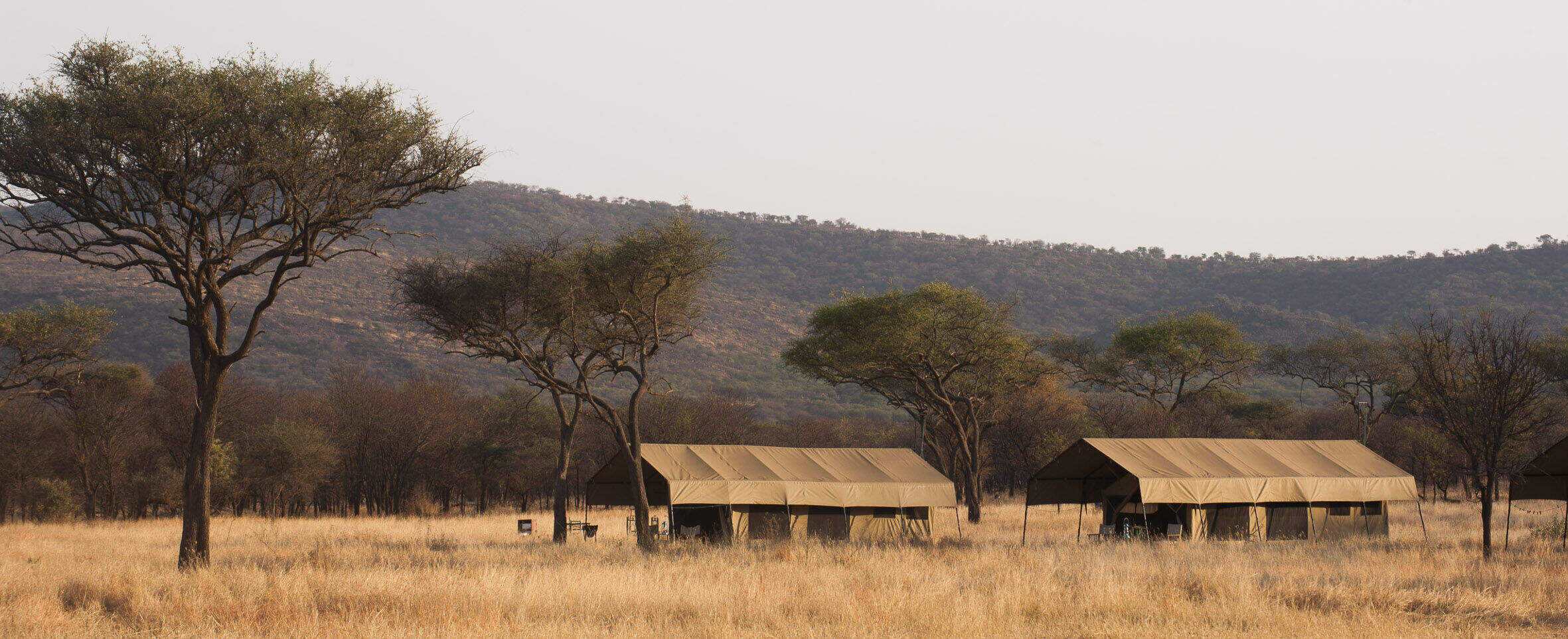
Ndutu Kati Kati
Ndutu Kati Kati is a seasonal tented camp, based in the southern Serenget from Dec-Mar, ideal for the migration as it passes through.

Olduvai Camp
Olduvai Camp lies between Ngorongoro and the southern Serengeti plains. It's a good base for the southern plains during the rainy season.
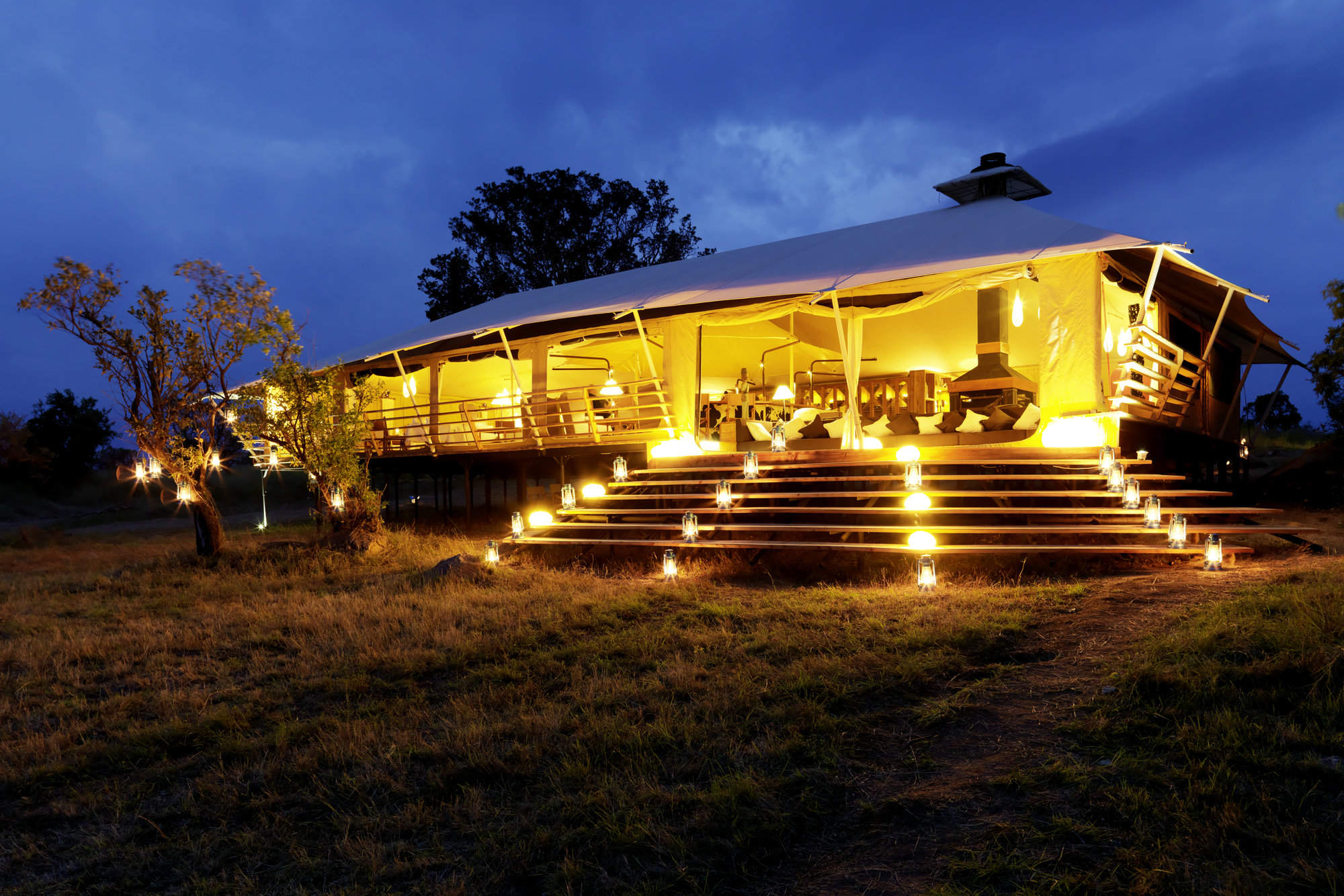
Bushtops
Serengeti Bushtops is a permanent luxury camp in the northern Serengeti, with spacious and private tents with their own hot tubs.
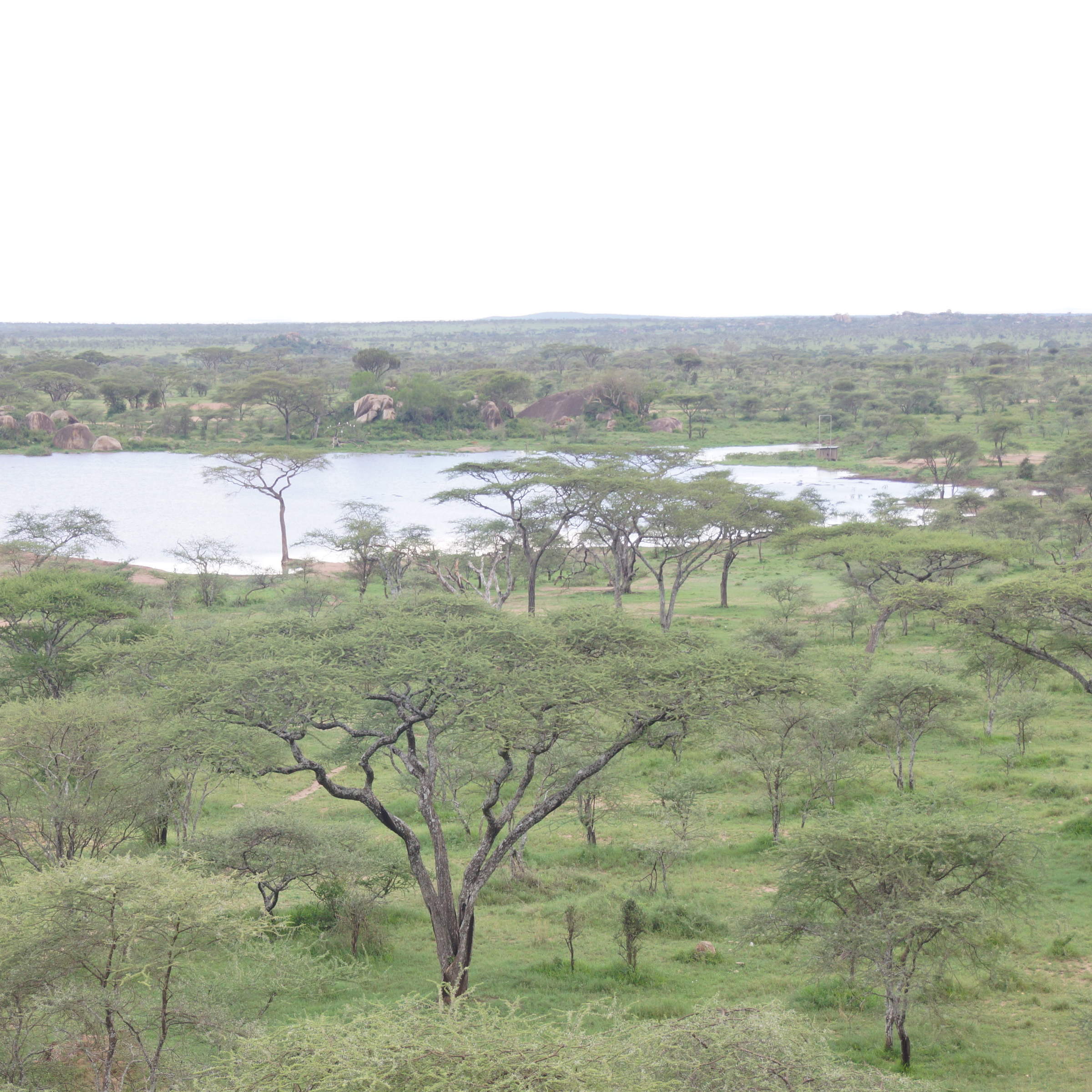
Seronera Wildlife Lodge
Seronera Wildlife Lodge is large hotel-style safari lodge in the heart of the Serengeti, offering good value and a great location.
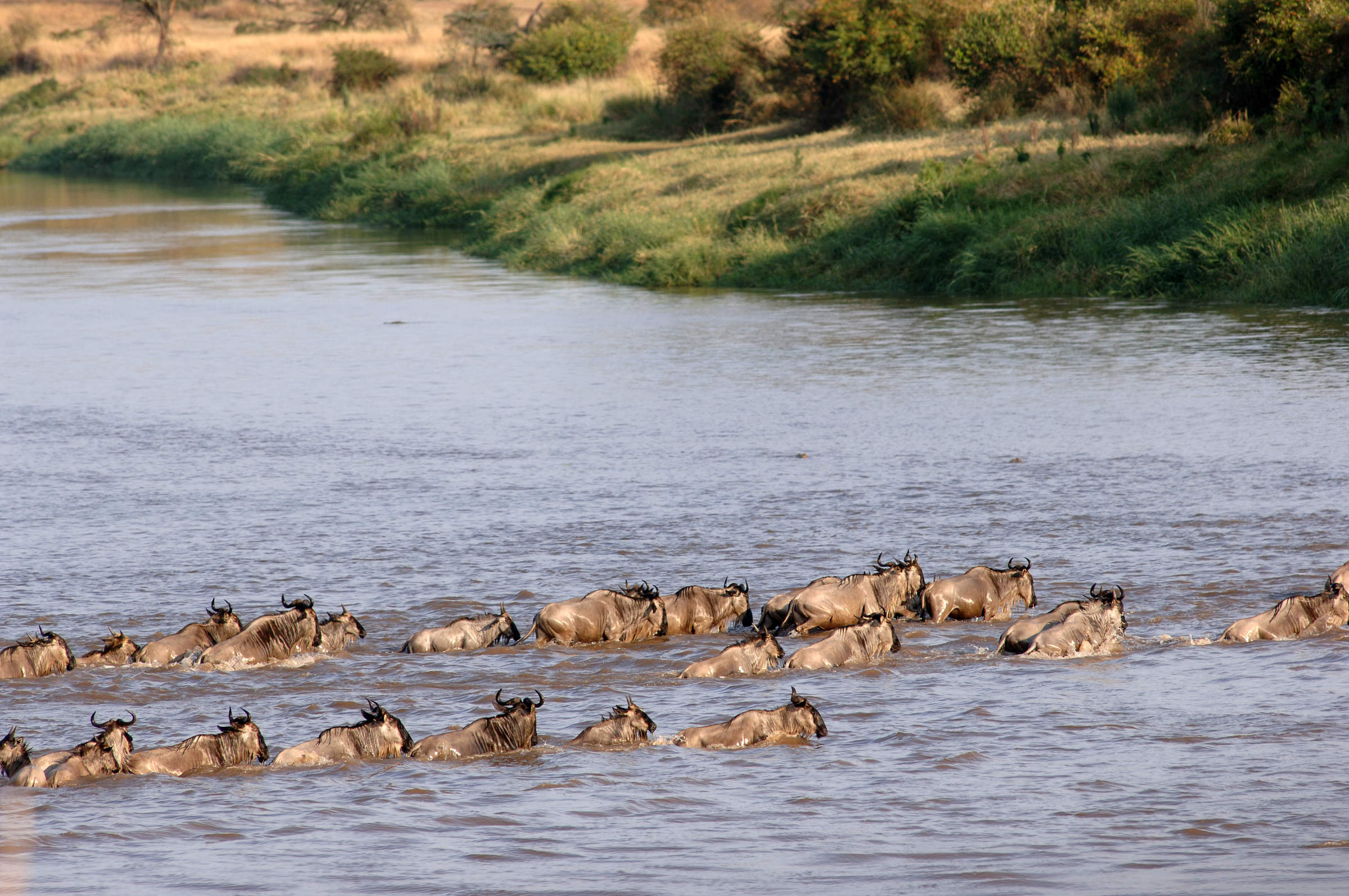
Mara Kati Kati
Mara Kati Kati is a simple bush camp in the northern Serengeti, based from Jul-Oct near the Mara River for the wildebeest migration.
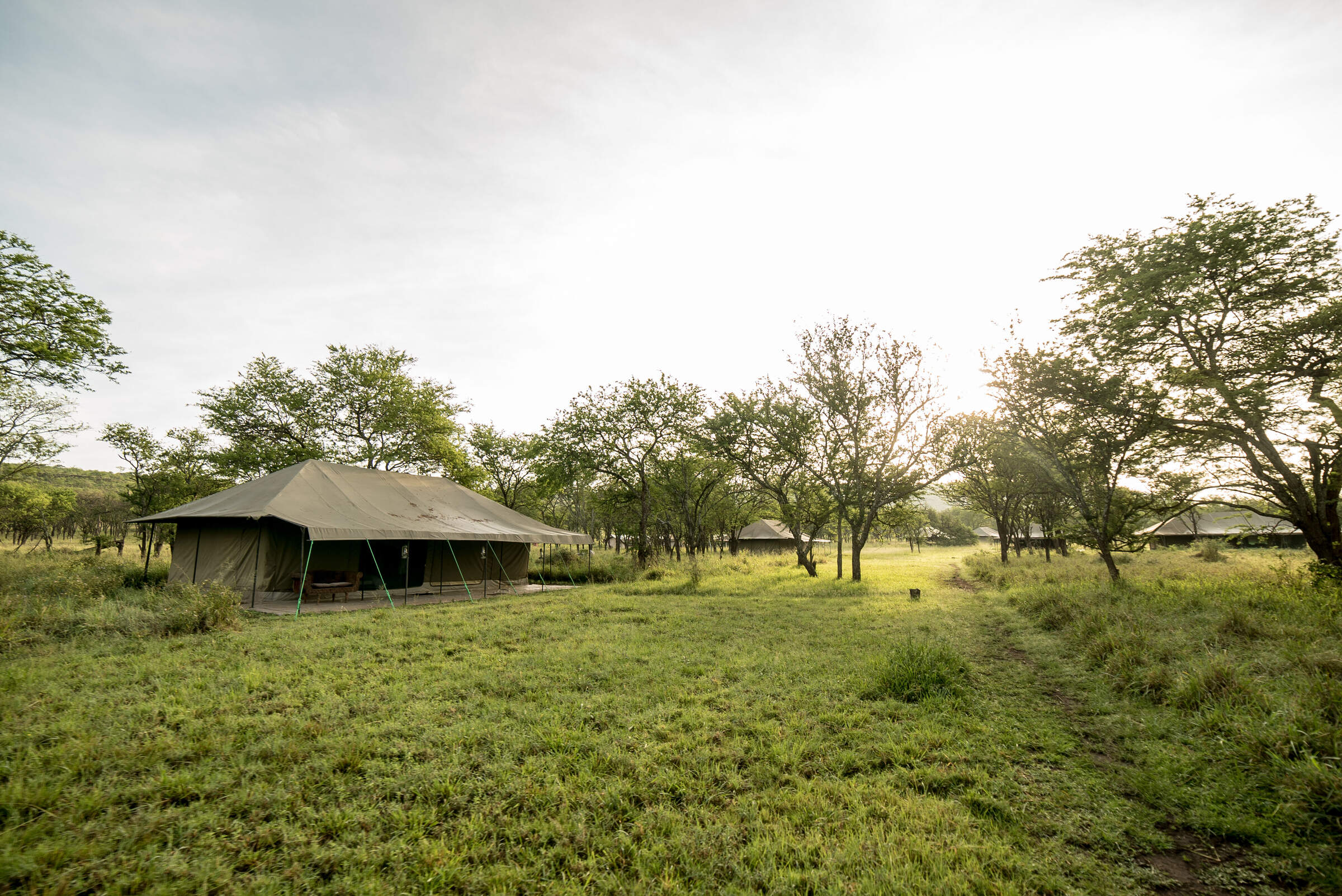
Nasikia Naona
Naona Camp is a small tented camp, located in the Moru Kopjes, west of the Serengeti central area
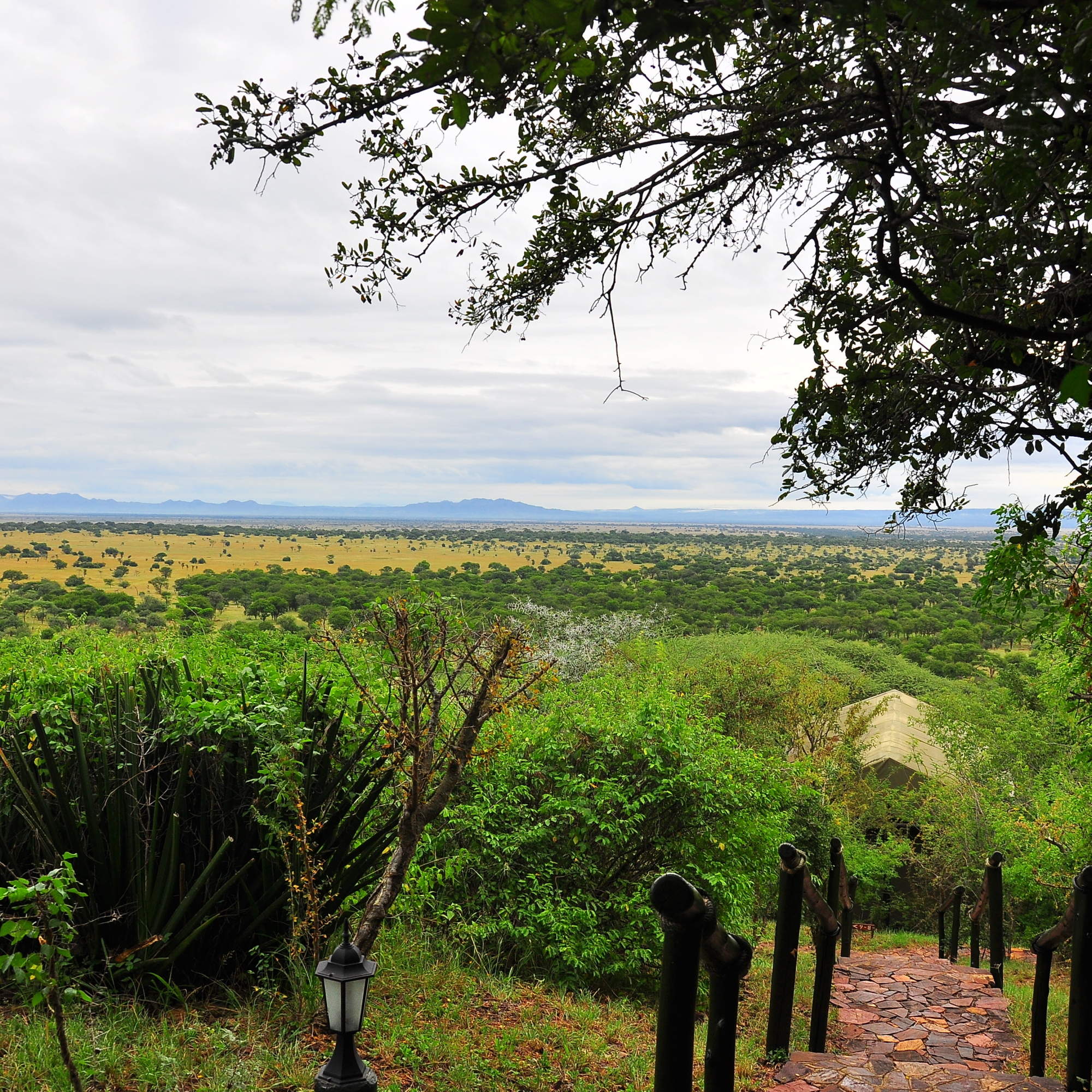
Kirawira Camp
Set high on a hill, in the Serengeti's western corridor, Kirawira is a relatively large tented camp in the Serena group.
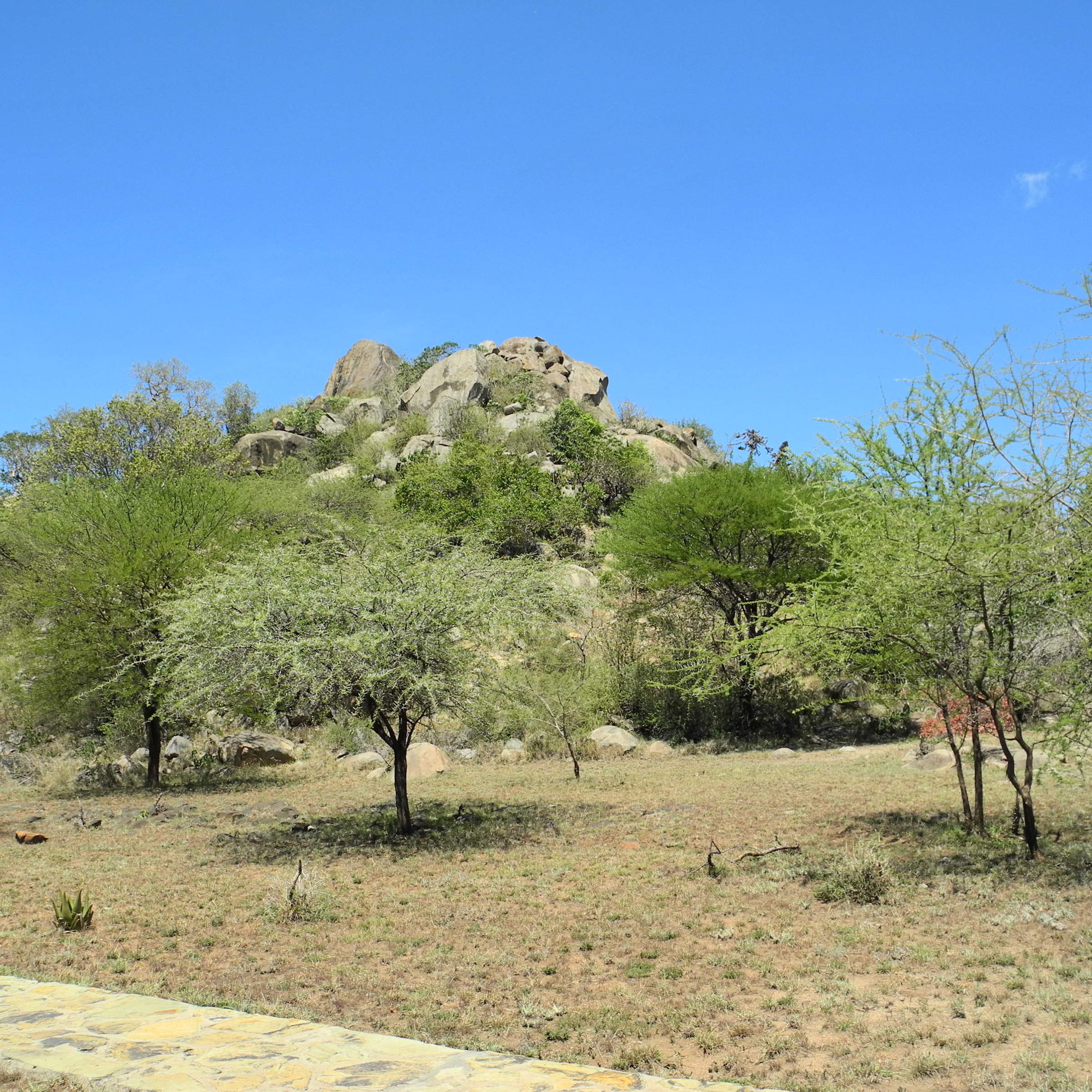
Mbuzi Mawe
Mbuze Mawe is a comfortable tented camp in a convenient, central-north location when driving through the Serengeti.
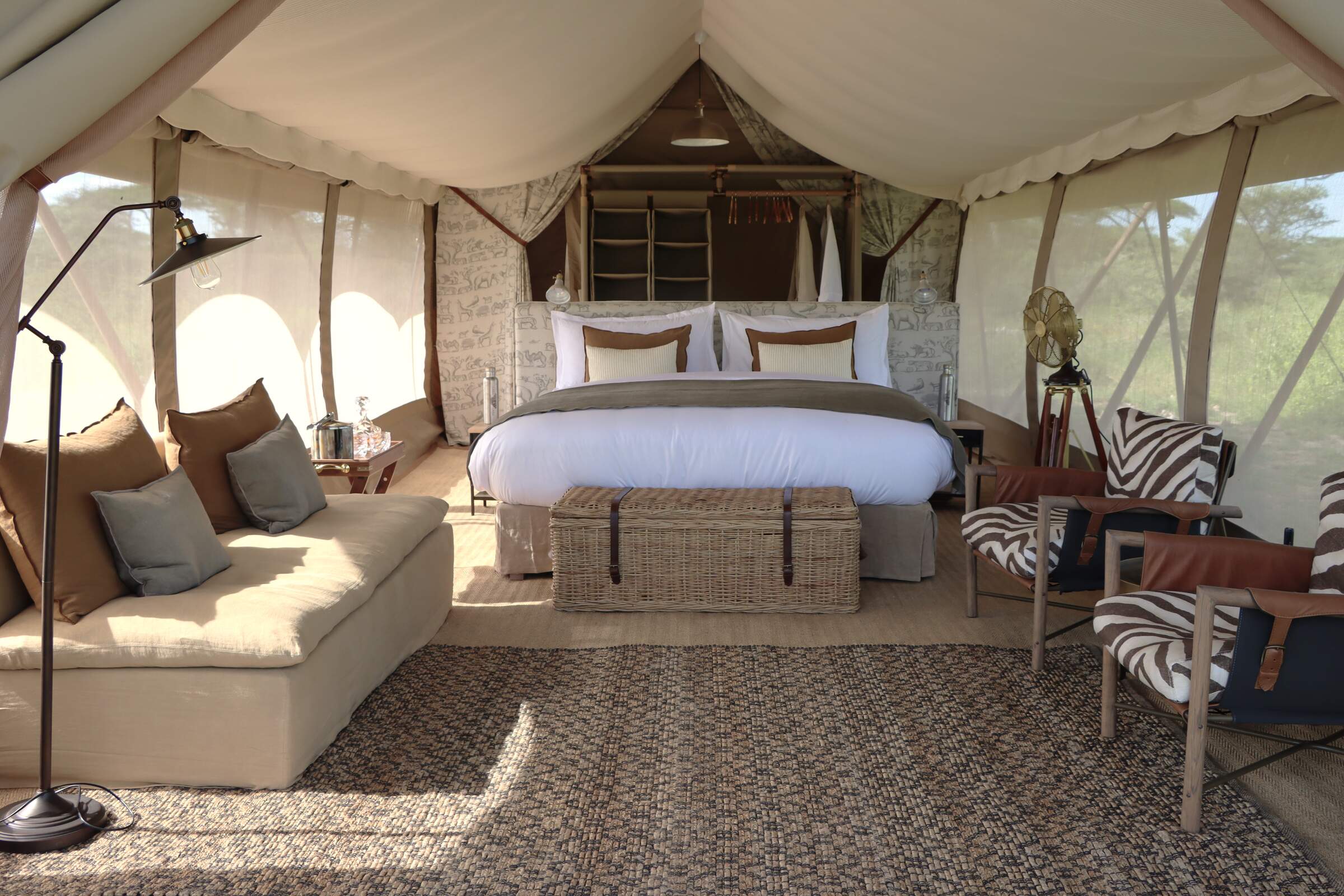
Laba Migration Camp
A luxury mobile camp that moves between the Western Corridor, Mara River and the southern Ndutu area, in line with the wildebeest migration.
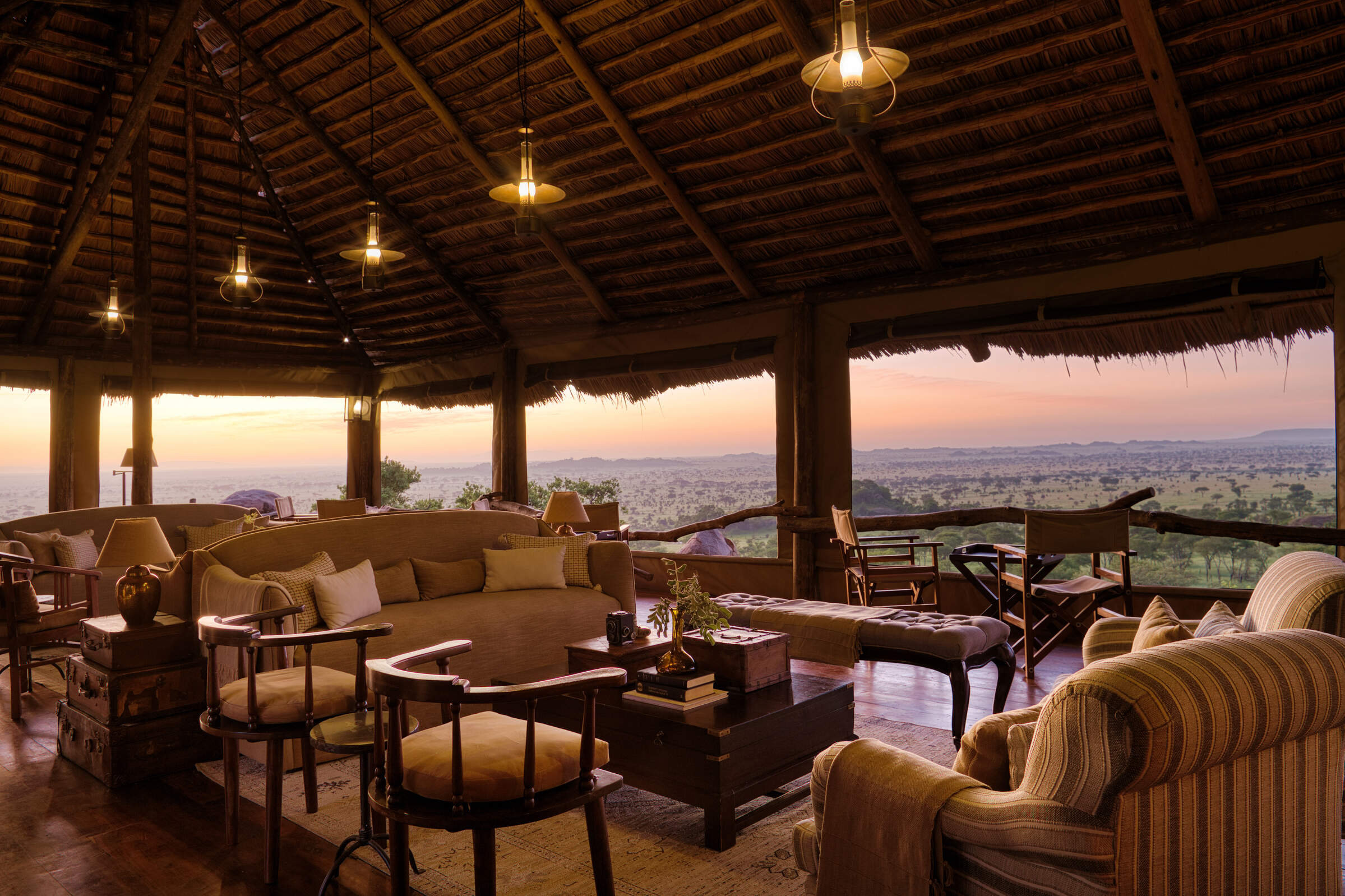
Serengeti Pioneer Camp
Serengeti Pioneer Camp is a luxurious tented camp in the central Serengeti, styled on African explorers' camps of the early 20th century.
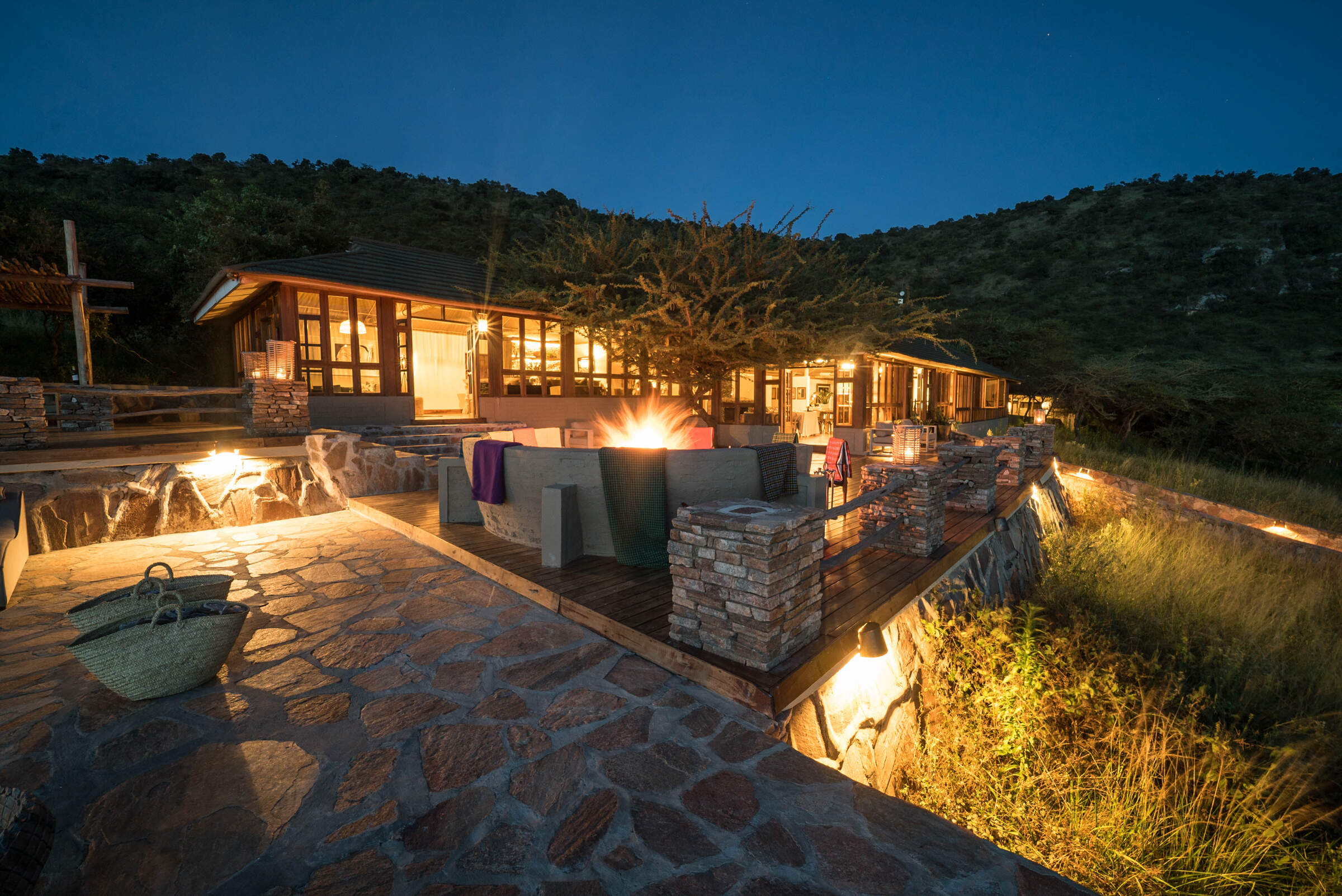
Taasa Lodge
Taasa Lodge is a slightly quirky option offering guided walks and night game drives, which are not permitted in Serengeti National Park.
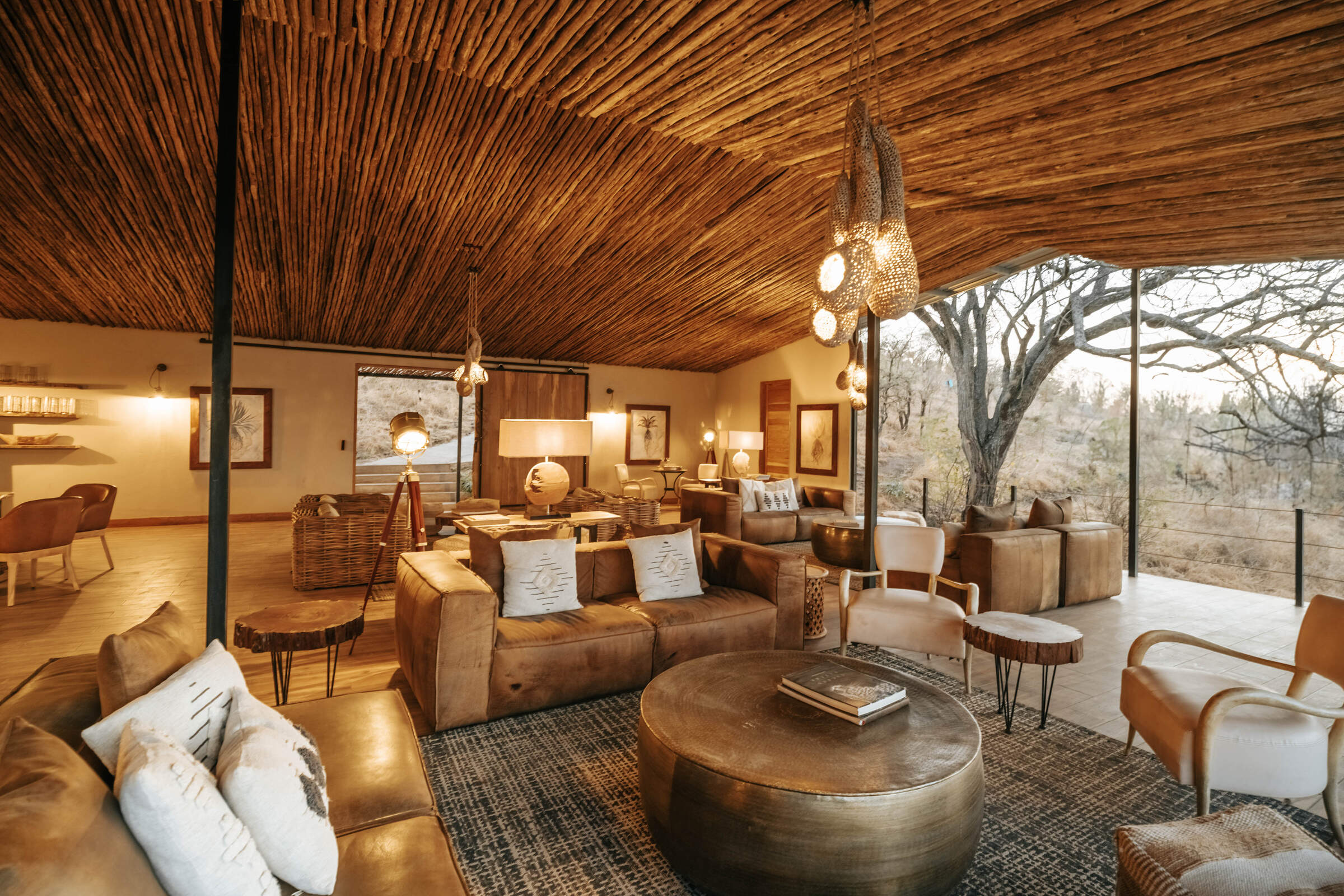
Nimali Serengeti
Opened in July 2017, Nimali Serengeti is a smart, permanent tented camp located in the Seronera area of the central Serengeti.
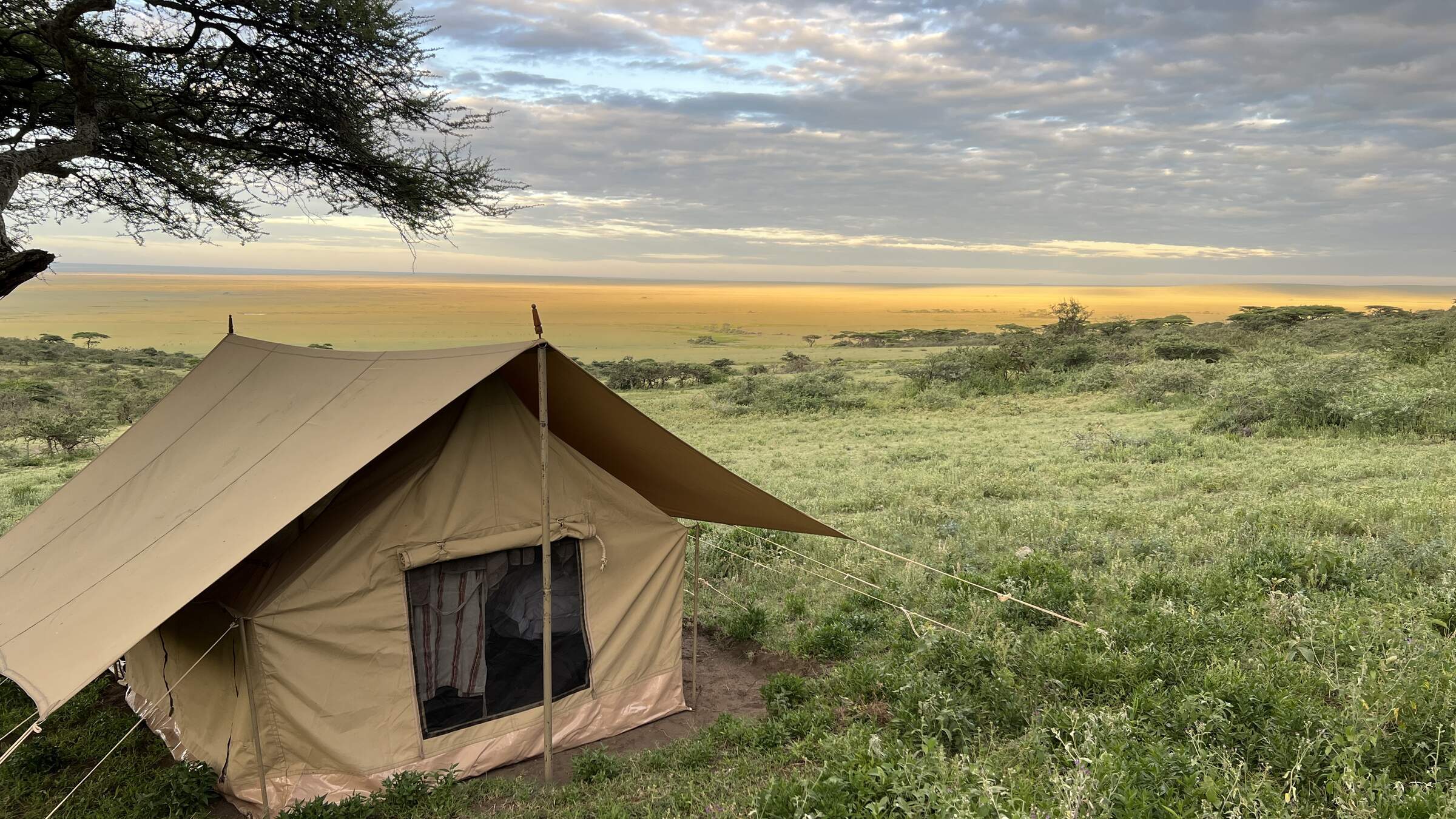
Nomad Walking Camp
Nomad Expeditionary Walking Camp is a simple camp of up to three tents, plus infrastructure, that changes location to allow guests to do substantial walks between campsites.
When to go to Serengeti Migration Area
Our month by month guide: What it's like to visit Olakira Camp in Serengeti Migration Area
Jan
Feb
Mar
Apr
May
Jun
Jul
Aug
Sep
Oct
Nov
Dec
Serengeti Migration Area in January
January marks the start of the Serengeti’s short dry season. In the southern plains, the wildebeest calving season takes centre stage, drawing both predators and eager wildlife enthusiasts. The weather is generally clear and sunny, with rising temperatures, though occasional rainfall may still occur in the southern areas. Birdwatching is particularly rewarding during this time, with resident species in their breeding plumage and migratory birds adding to the variety.
The far southern plains of Ndutu coupled with the central Seronera area remains a reliable choice for game viewing, with lions and cheetahs frequently sighted on the hunt. While the park can be busier early in the month due to New Year visitors, it often becomes quieter later, providing excellent value and a more peaceful experience. Patience may be needed during game drives, as some wildlife becomes more dispersed.
- Variable weather: clear, dry or rainy
- Thunderstorms may occur occasionally
- Prime birding season with migrant species
- Wildebeest gathering in southern Serengeti
- Busy early, quieter later in the month
Our view
A good time to visit, with pros & cons
Weather in January
Serengeti Migration Area in February
February in the Serengeti is hot, with daytime highs reaching around 33°C/91°F, but cooling down significantly in the evening and overnight. It's an excellent time to visit as the northern circuit is comparatively quieter than during peak seasons. The wildebeest calving season, typically occurring in a two-three week window in early-mid February, is a major attraction. Thousands of calves are born daily, attracting a significant number of predators, creating an intense yet fascinating spectacle.
Birdlife is equally vibrant, as migratory species from the northern hemisphere join the park's resident birds. The Ndutu region is especially active, hosting an abundance of wildlife. Hot air balloon safaris offer unparalleled views of the action below. Despite the midday heat, early morning game drives remain comfortable and highly rewarding.
- Hot and dry weather conditions prevail
- Wildebeest calving in southern plains
- Southern Serengeti busy for migration
- Lush, green landscapes across the park
- Ideal for wildlife photography
Our view
A very good time to visit
Weather in February
Serengeti Migration Area in March
March typically sees the arrival of the long rains in the Serengeti, though the exact timing can vary each year. With water becoming more plentiful, migratory animals begin to spread out, making wildlife spotting a bit more challenging in certain areas. The Seronera Valley remains a reliable choice for sightings, thanks to its consistent water sources.
The rains bring a dramatic transformation to the landscape, with lush greenery emerging across the plains, offering stunning photographic opportunities. Birdwatchers are in for a treat, as many species are in their vibrant breeding plumage. Although some mobile tented camps begin winding down operations in preparation for the next season, visitors can still enjoy the park’s quieter atmosphere and its renewed natural beauty.
- Hot with increasing humidity pre-rains
- Wildlife viewing varies as rains begin
- Park quieter with lower visitor numbers
- Excellent time for bird watching
- Green vegetation provides scenic backdrops
Our view
A good time to visit, with pros & cons
Weather in March
Serengeti Migration Area in April
April tends to be the wettest month in the Serengeti, with rainfall averaging around 250mm. The park is transformed into a verdant oasis, alive with birds, insects, and smaller wildlife. However, the dense vegetation can make spotting animals more difficult. Visitor numbers are at their lowest, allowing for a more exclusive safari experience and there can be some good emerald season bargains to be had.
The wildebeest migration typically begins slowly moving toward the Western Corridor, and patient travellers can witness fascinating sights such as newborn animals and predators on the hunt. Rising water levels make the Retina Hippo Pool particularly active. Birdwatching continues to be excellent, and many lodges offer reduced rates, making it an appealing time for those willing to brave occasional downpours.
- Heavy rains with impressive thunderstorms
- Some camps closed due to weather
- Lowest rates and fewest tourists
- Vibrant greenery, wildlife more dispersed
- Not ideal for general wildlife viewing
Our view
This is not a great time to visit
Weather in April
Serengeti Migration Area in May
As the month of May progresses, the rains start to taper off across the Serengeti and temperatures drop slightly. Visitor numbers remain low, and lodge rates are often highly competitive, making it a great time for more value-conscious travellers. The wildebeest migration usually still heading towards the Western Corridor, with some herds nearing the Grumeti River and others still milling around the central area of the park. Predator-prey interactions become more frequent as animals navigate the changing environment.
The Moru Kopjes region offers particularly rewarding wildlife encounters, including the chance to spot black rhinos. The park’s vegetation is at its lushest, providing breathtaking backdrops for photographers. Balloon safaris during this time give a spectacular view of the green plains and migrating herds.
- Rains continue, creating dramatic skies
- Quiet period, great for avoiding crowds
- Lush landscapes with long grasses
- Wildlife more dispersed, fewer sightings
- Affordable safari options available
Our view
This is not a great time to visit
Weather in May
Serengeti Migration Area in June
June signals the end of the rainy season in the Serengeti, with the landscape beginning to dry out. Wildlife starts to gather around permanent water sources, and the Grumeti River becomes a key location for dramatic river crossings. Before the wildebeest migration heads north, the Western Corridor remains a hub of activity.
Many camps will offer shoulder season rates in June, meaning that this is also a more affordable time to visit than later in the year. The Lobo Valley in the north also becomes a productive area for wildlife viewing. With shorter grasses and clearer conditions, June is an excellent time for walking safaris in designated areas. The balance of good weather, exciting wildlife action, and moderate tourist numbers makes it a great month to visit.
- Weather varies: clear, dry or some rain
- Migration moving from west to north
- Parks still green with high grasses
- Wildlife becoming more concentrated
- Good value shoulder season prices
Our view
A good time to visit, with pros & cons
Weather in June
Serengeti Migration Area in July
July is the start of peak season in the Serengeti, with little to no rainfall expected and pleasant daytime temperatures. As the park dries, wildlife congregates in fewer areas, improving game viewing opportunities. The wildebeest migration typically reaches the northern Serengeti, with herds beginning to cross the Mara River. This spectacle draws many visitors, making the northern areas busier.
The Seronera area remains excellent for big cat sightings. In the western corridor, resident game becomes easier to spot as vegetation thins. Balloon safaris are particularly popular this month, offering breathtaking views of the migrating herds. Despite the crowds, July offers some of the year's best wildlife viewing opportunities across the park.
- Dry days, chilly mornings and evenings
- Excellent wildlife viewing opportunities
- Peak season with increasing visitor numbers
- Highest prices due to prime conditions
- Great Migration in full swing
Our view
Fantastic: the very best time to visit
Weather in July
Serengeti Migration Area in August
August in the Serengeti is characterised by clear skies and sunny weather, though cooler nights and mornings call for layered clothing for early morning game drives. It's an extremely popular time to visit, with accommodation prices at their peak. The northern Serengeti is particularly busy as visitors hope to witness migration river crossings – with the Mara and Sand rivers becoming focal points for dramatic wildlife interactions.
In the central Serengeti, predator sightings remain good around the Seronera River. The park's southern regions are now much drier, home to excellent resident game and now fewer visitors. Balloon safaris provide stunning aerial views of the landscape and wildlife. While August is a very busy time, the consistent wildlife activity and reliable weather make it a fantastic month to visit.
- Dry climate, cool mornings and evenings
- Superb general wildlife viewing
- Exciting wildebeest migration period
- Very busy, camps fill up quickly
- Dramatic river crossings may occur
Our view
Fantastic: the very best time to visit
Weather in August
Serengeti Migration Area in September
September continues the Serengeti’s dry season, with wildlife becoming increasingly concentrated around the few remaining water sources. The northern Serengeti still hosts the wildebeest migration, with river crossings at the Mara River offering dramatic predator-prey interactions. The Seronera Valley remains an excellent spot for sightings of resident predators, while the now-parched southern plains offer good chances to see cheetahs.
As the month progresses, visitor numbers begin to drop slightly, making it a quieter time to explore. Birdwatching remains rewarding, and walking safaris provide a more intimate wildlife experience. September’s pleasant weather and exceptional wildlife viewing make it a very good time to visit.
- Fantastic wildlife viewing conditions
- Slightly less crowded than peak months
- Parks becoming dry with less vegetation
- Pleasant temperatures throughout day
- Prices remain high for quality safaris
Our view
Fantastic: the very best time to visit
Weather in September
Serengeti Migration Area in October
October marks the tail end of the dry season in the Serengeti. Wildlife gathers around the last water sources, creating fantastic viewing opportunities. The Mara River may still see some migration activity, while the central Seronera region continues to deliver reliable predator sightings. In the western corridor, large herds of elephants are a highlight, and the dry southern plains can sometimes offer very good opportunities to spot cheetah.
Birdwatching is rewarding, with many resident species easily spotted. Balloon safaris offer breathtaking views of the parched landscape – though photographers need to be prepared for dusty conditions. Prices remain high, but visitor numbers are lower than in July-Sept, providing a more exclusive safari experience.
- Mostly dry with comfortable temperatures
- Excellent game viewing opportunities
- Landscape may appear somewhat barren
- Lower visitor numbers than earlier months
- Chance to see predator action at its best
Our view
A very good time to visit
Weather in October
Serengeti Migration Area in November
November usually signals the start of the short rains in the Serengeti. While lighter and more sporadic than the long rains, they rejuvenate the landscape with fresh grass growth. Wildlife begins to disperse as water becomes more readily available, but game viewing remains strong, particularly in the central Seronera area.
The wildebeest herds start their journey southward from the Mara region, creating opportunities for unique sightings. Birdwatching is excellent, with the arrival of migratory species adding to the variety. Some mobile camps in the north close temporarily, but those who visit in November can enjoy great value with lower rates and quieter conditions.
- Variable weather: clear, dry or rainy
- Parks quieter with lower-end prices
- Some camps close for maintenance
- Wildlife disperses as rains begin
- Migration movement less predictable
Our view
A good time to visit, with pros & cons
Weather in November
Serengeti Migration Area in December
December is a transition month in the Serengeti, falling within the short rainy season. The rains bring life to the southern plains, attracting the wildebeest herds and the predators that follow them. The Ndutu region becomes a focal point for wildlife activity.
Temperatures are comfortable, averaging around 27°C/81°F, with the possibility of occasional thunderstorms. Birdwatching is outstanding, with many migratory species adding to the diversity. Early December offers good value, with lower prices and fewer visitors, but the festive season sees a surge in demand, requiring early bookings. Balloon safaris provide stunning views of the rejuvenated landscape, making December an exciting time to visit the park.
- Weather varies: dry, rainy, or stormy
- Good game viewing in central Serengeti
- Quiet early, extremely busy late month
- Prices rise sharply for holiday season
- Green season begins, landscapes refresh
Our view
A good time to visit, with pros & cons
Weather in December

Looking for inspiration on where to travel next?
Visit our trip chooser to explore your options and find inspiration for your perfect African adventure
Inspire me